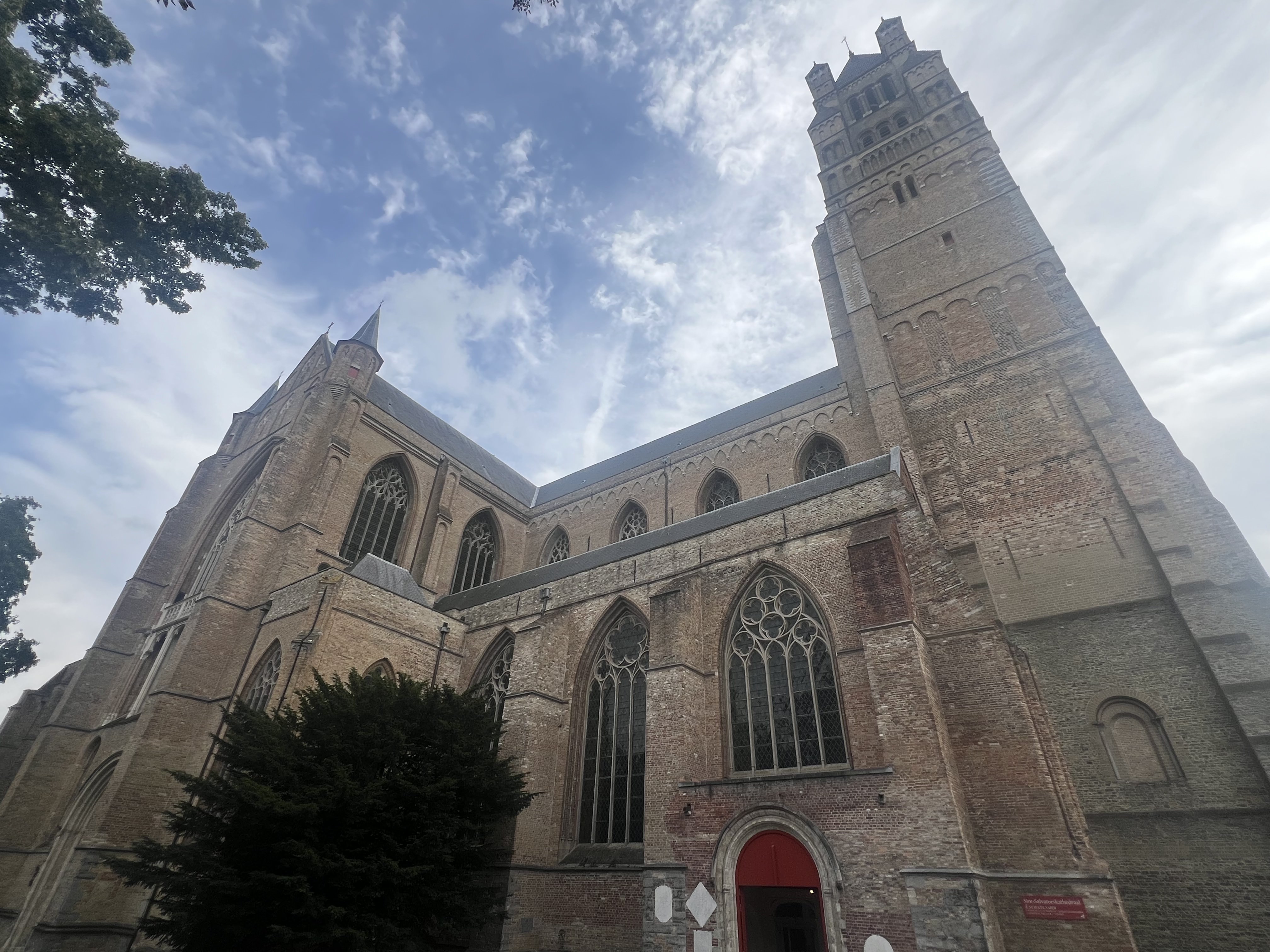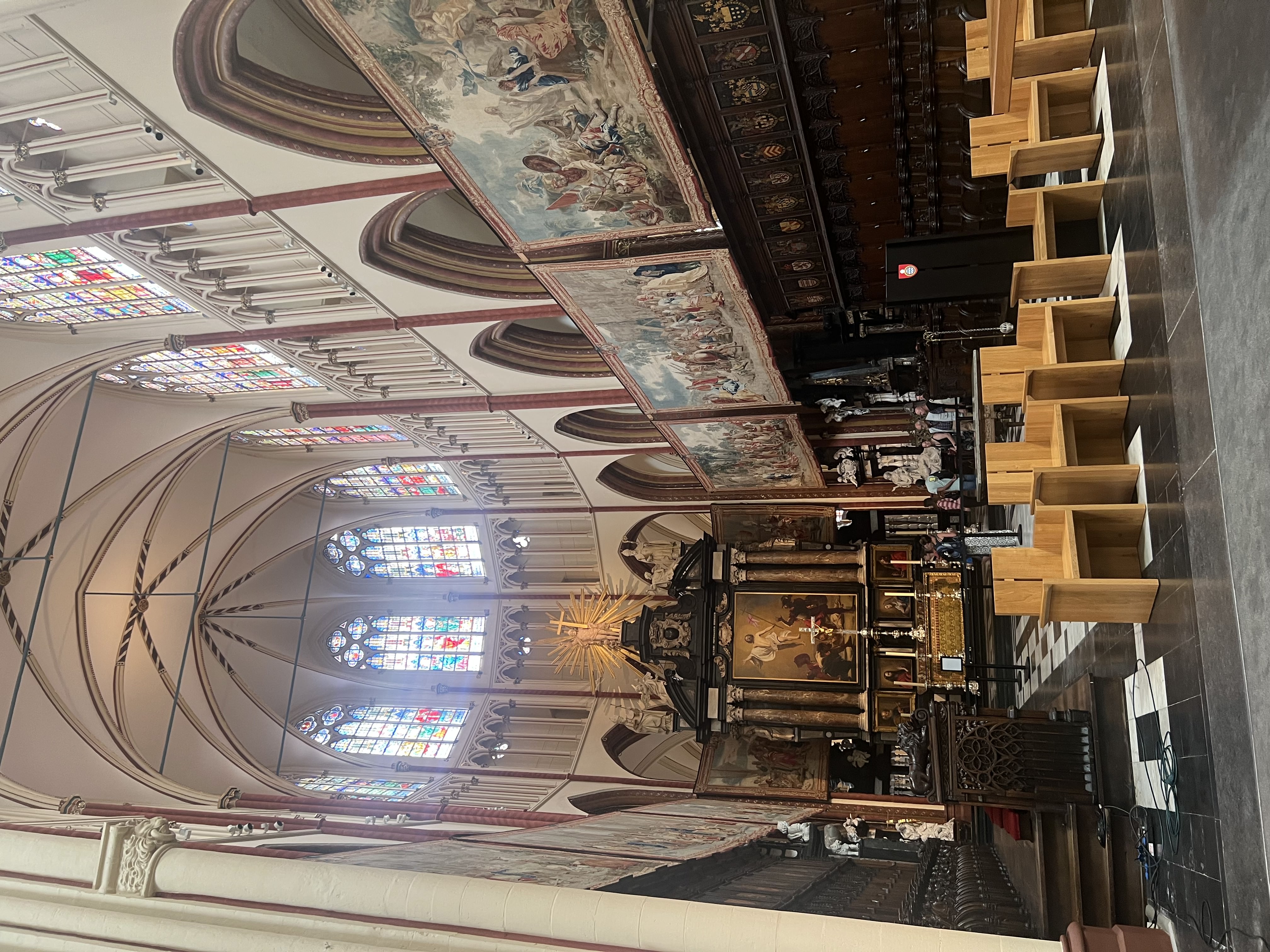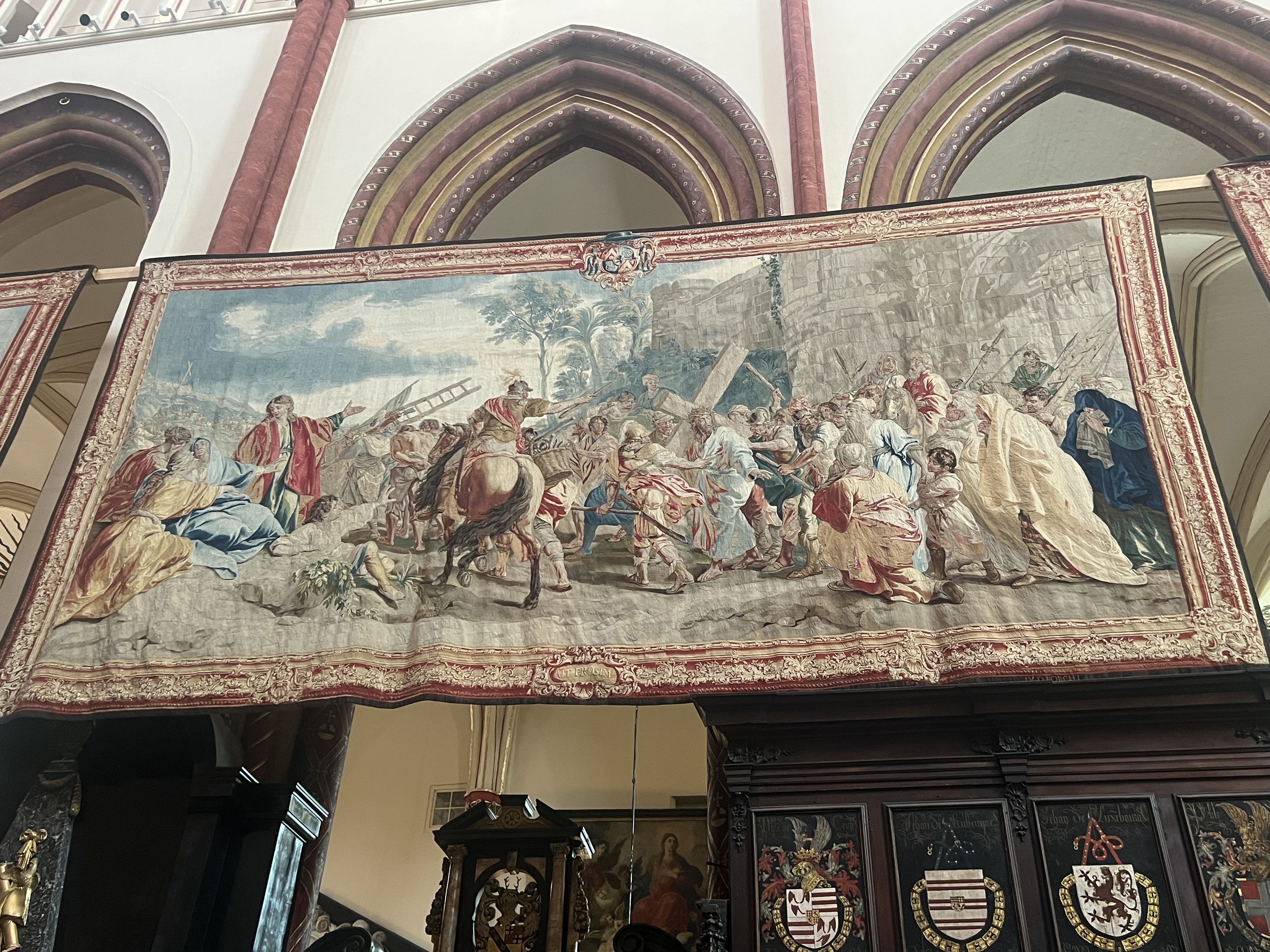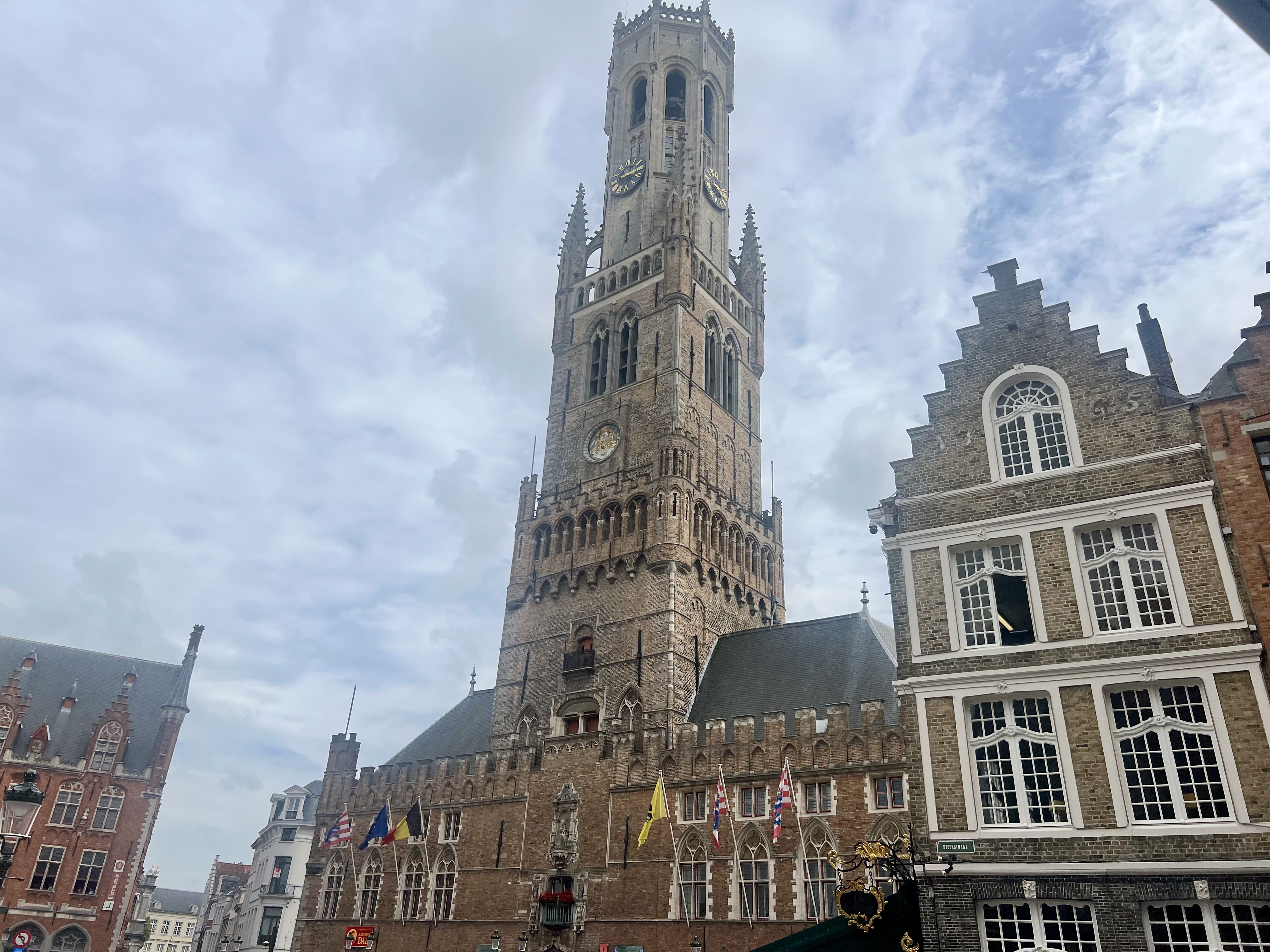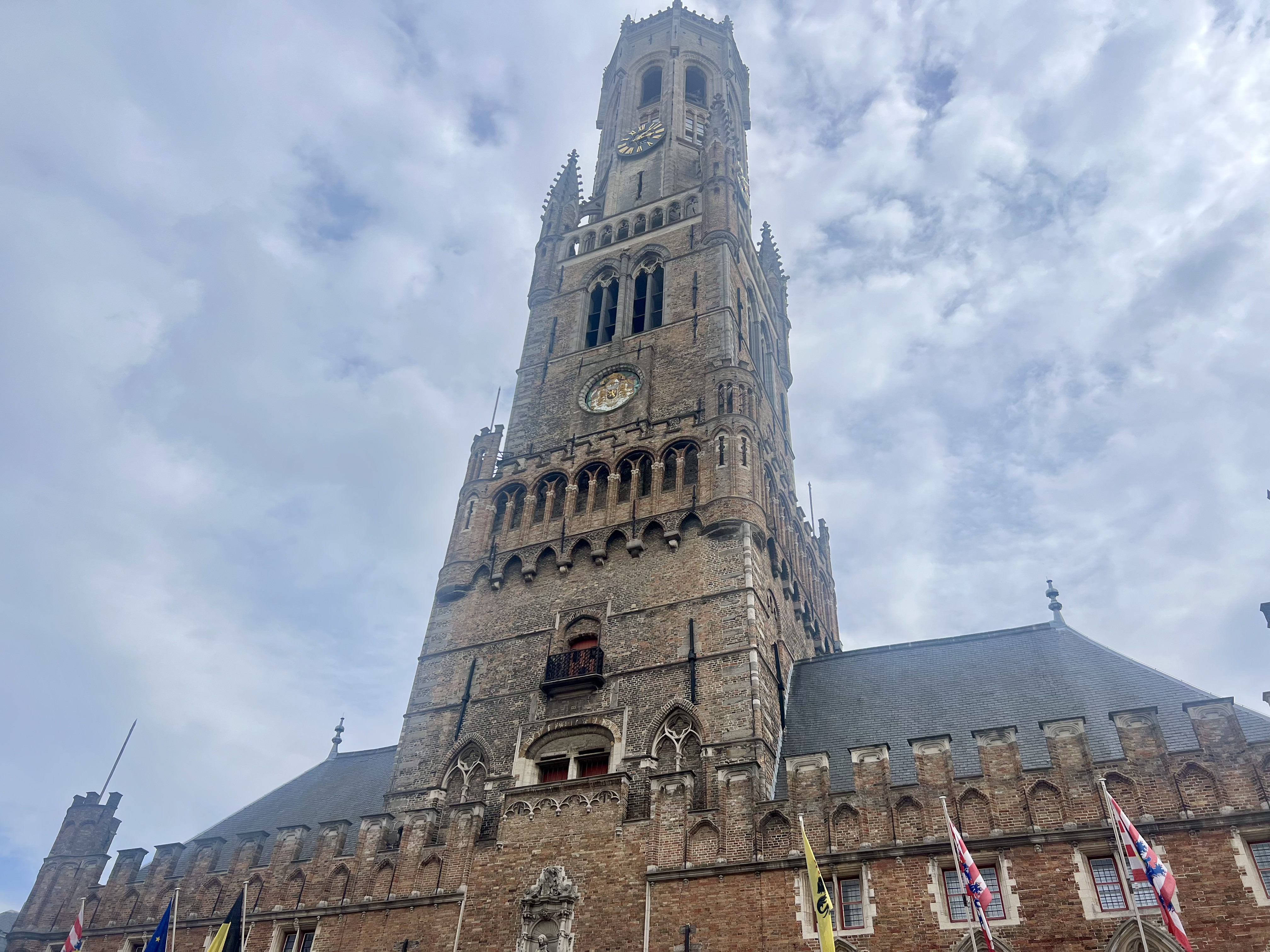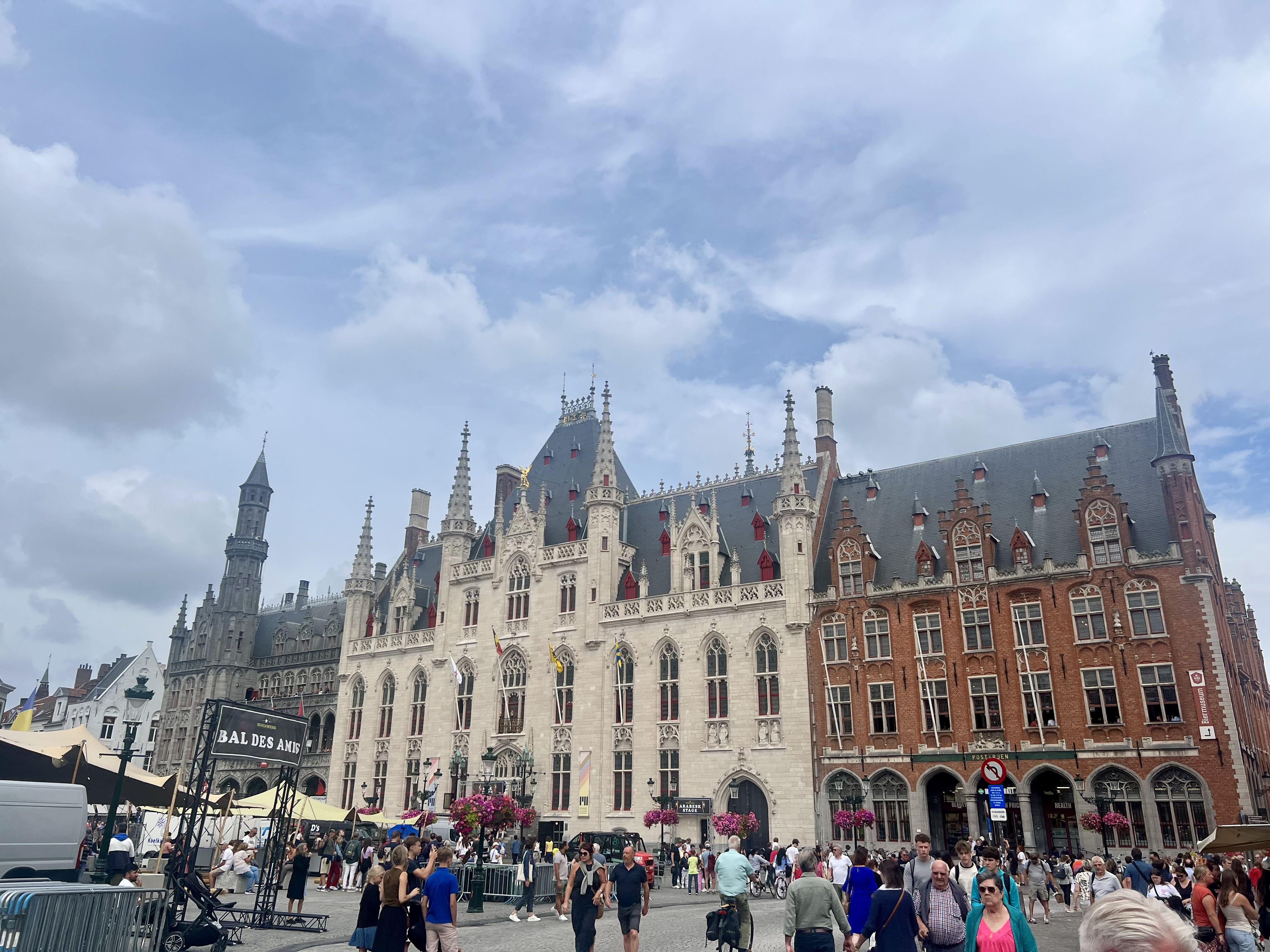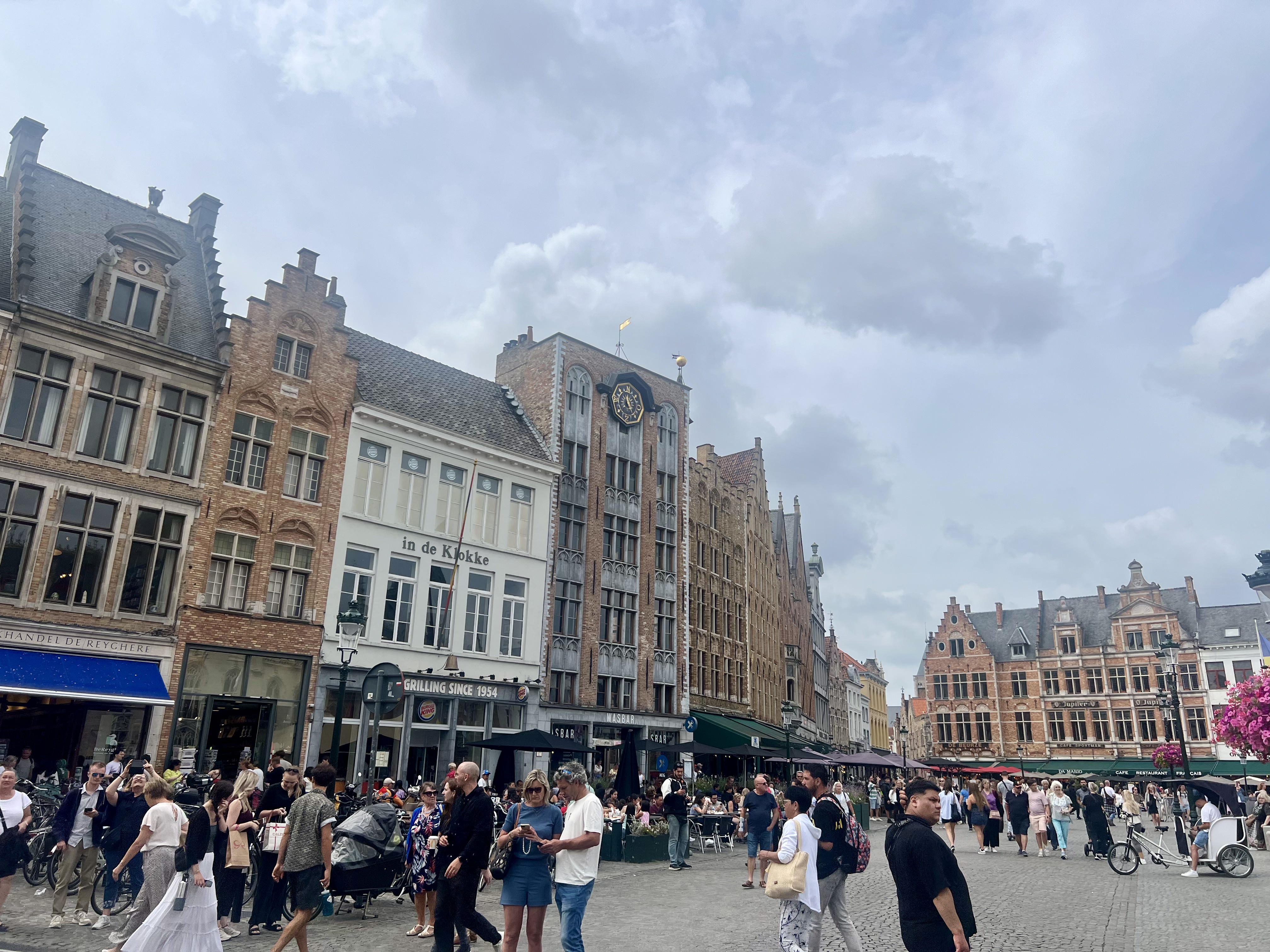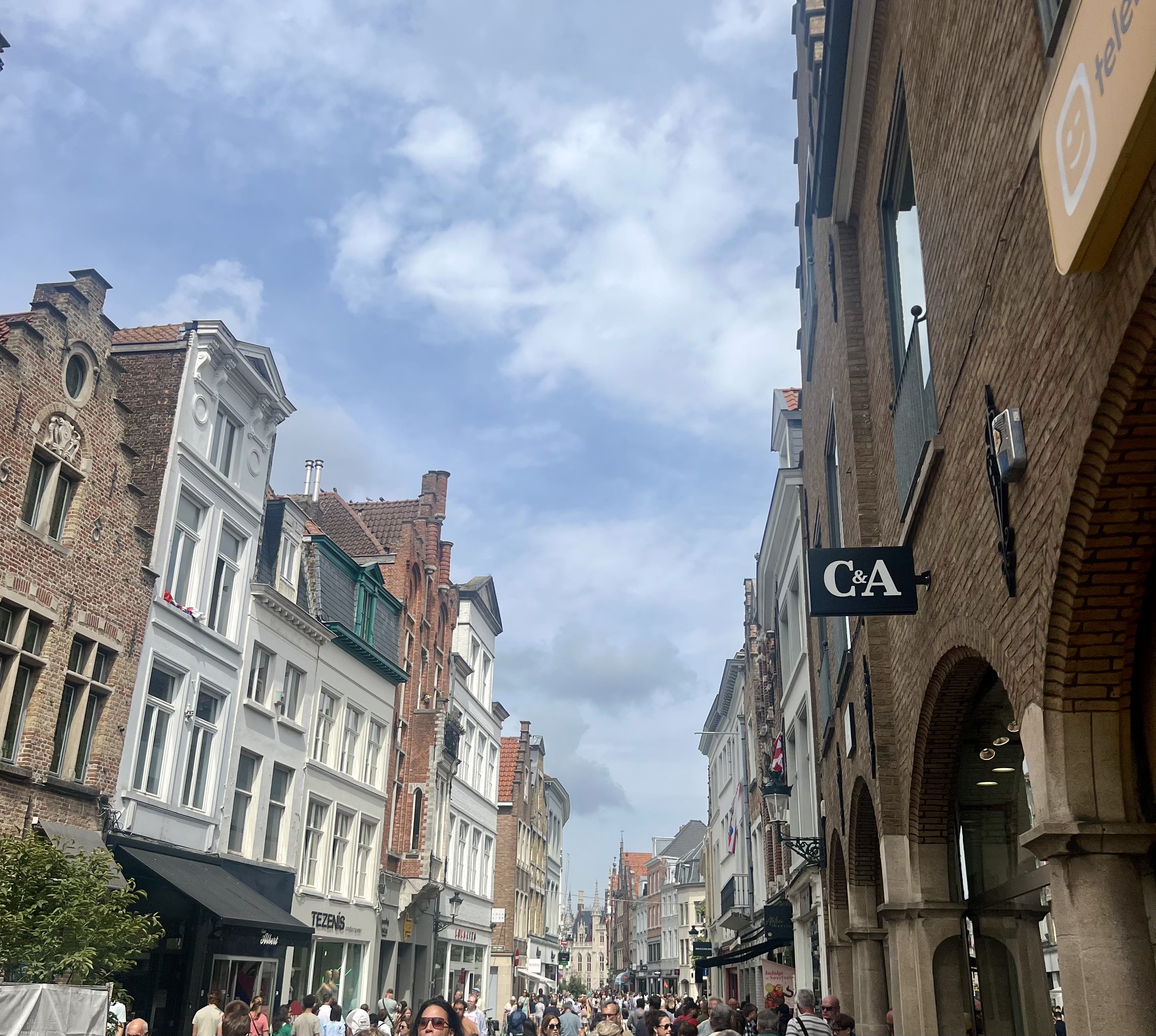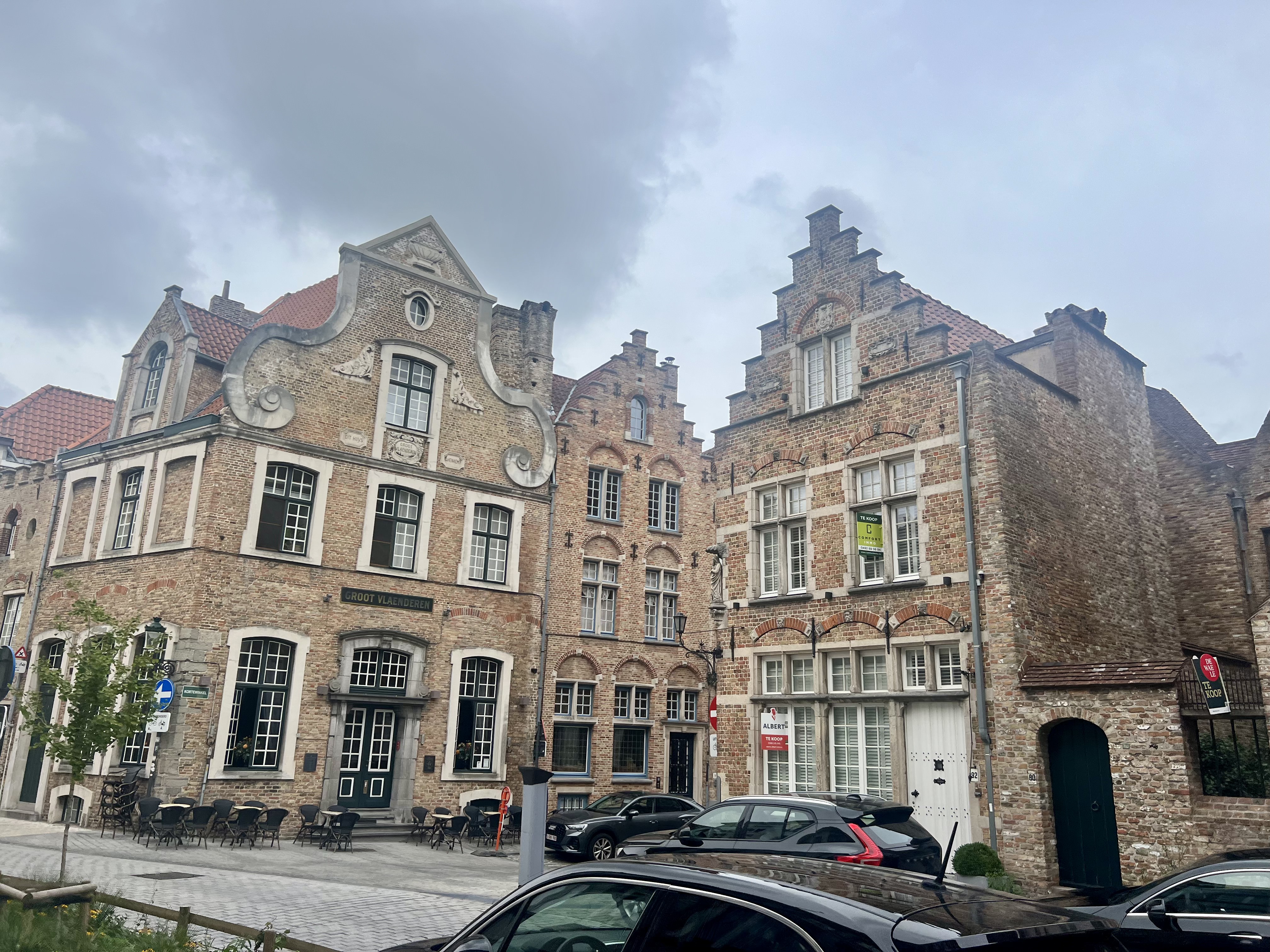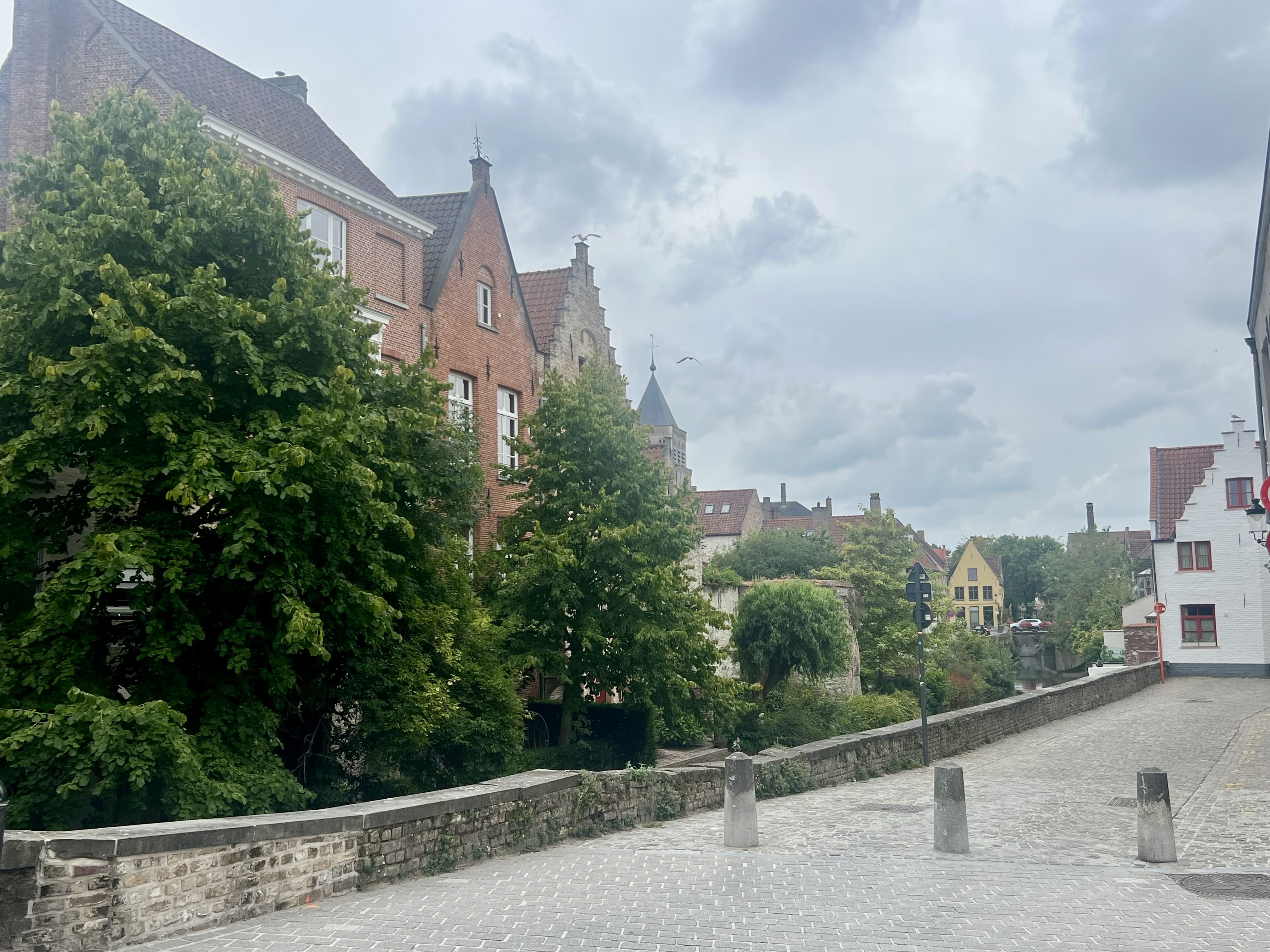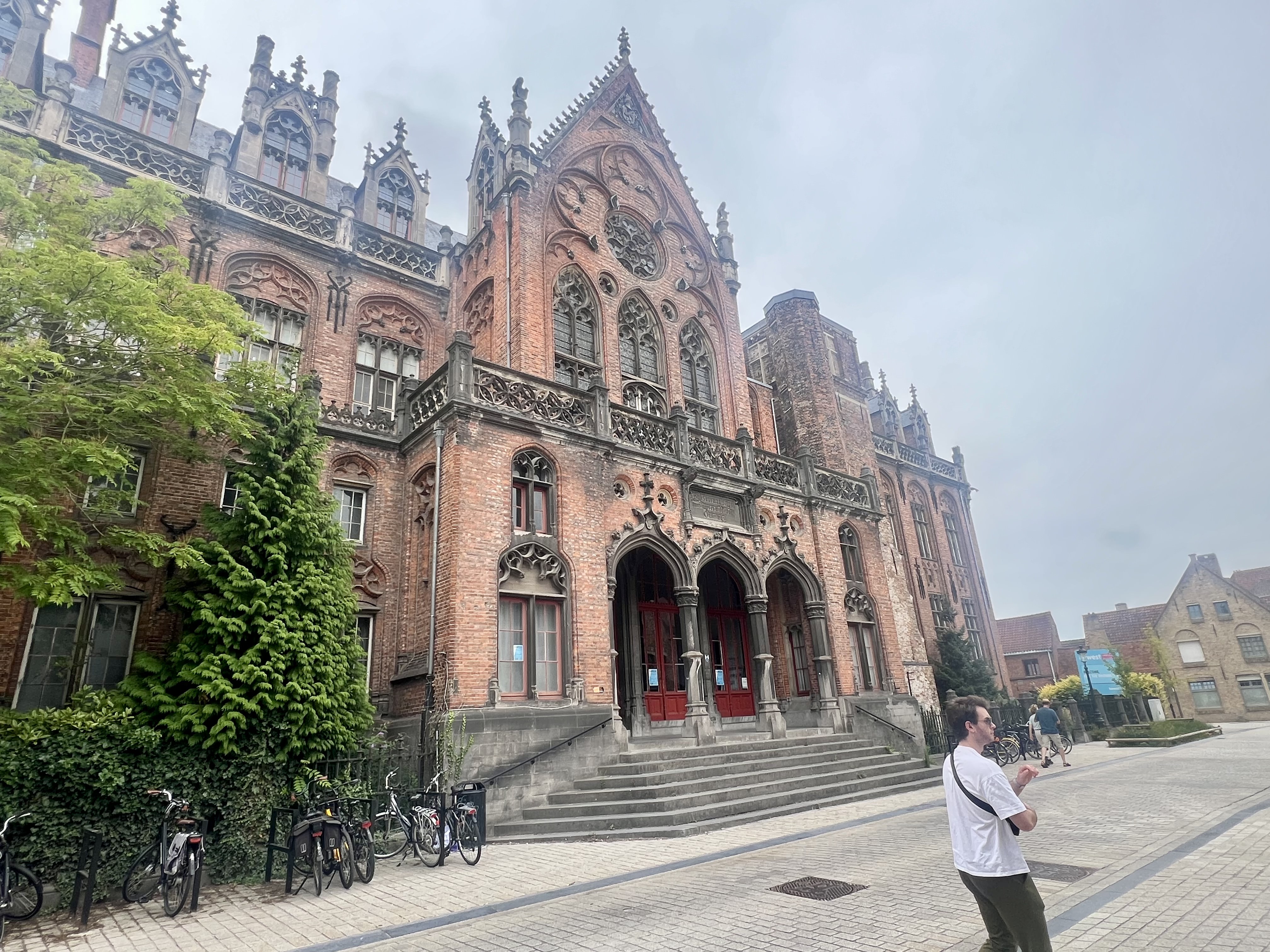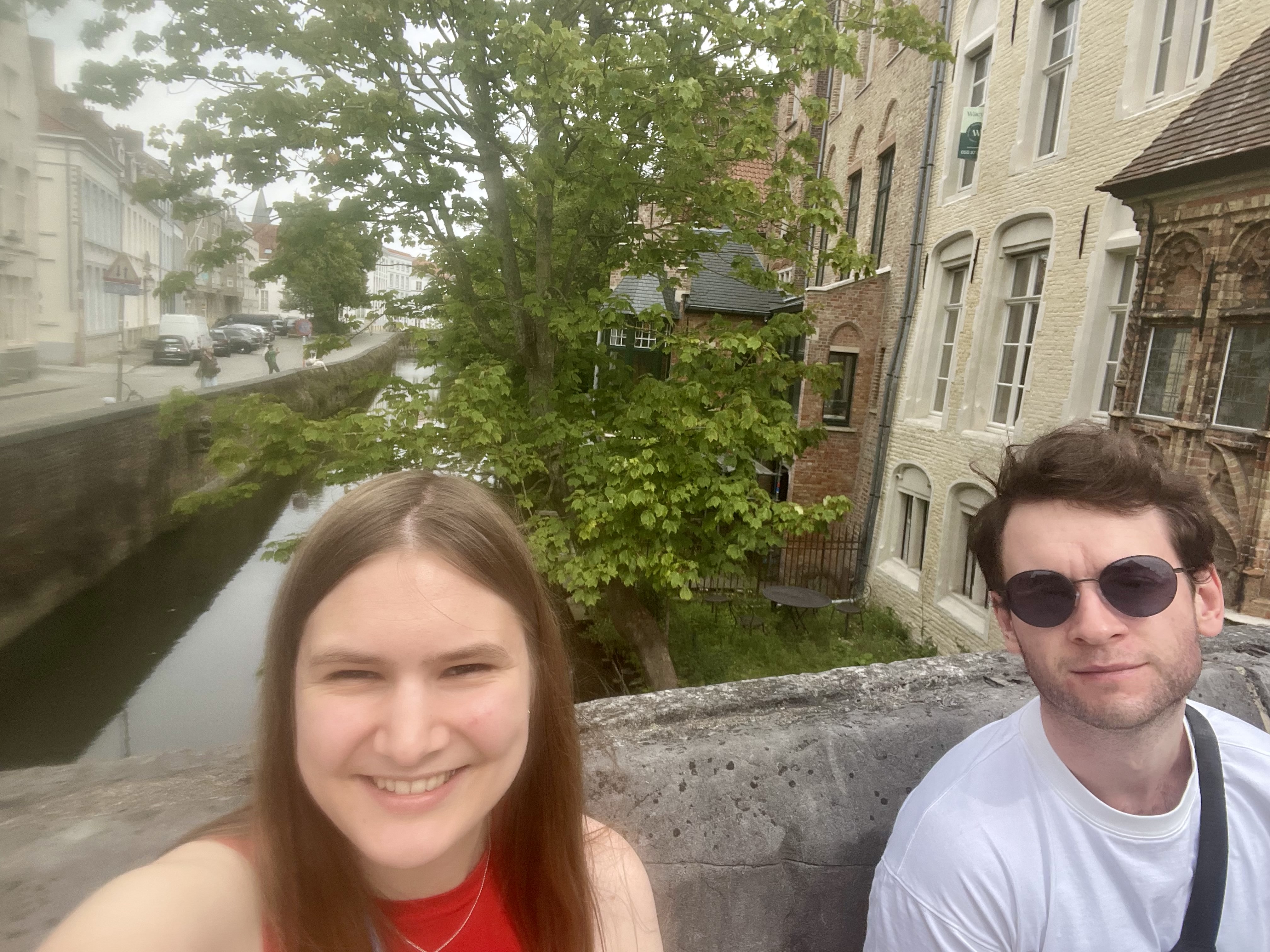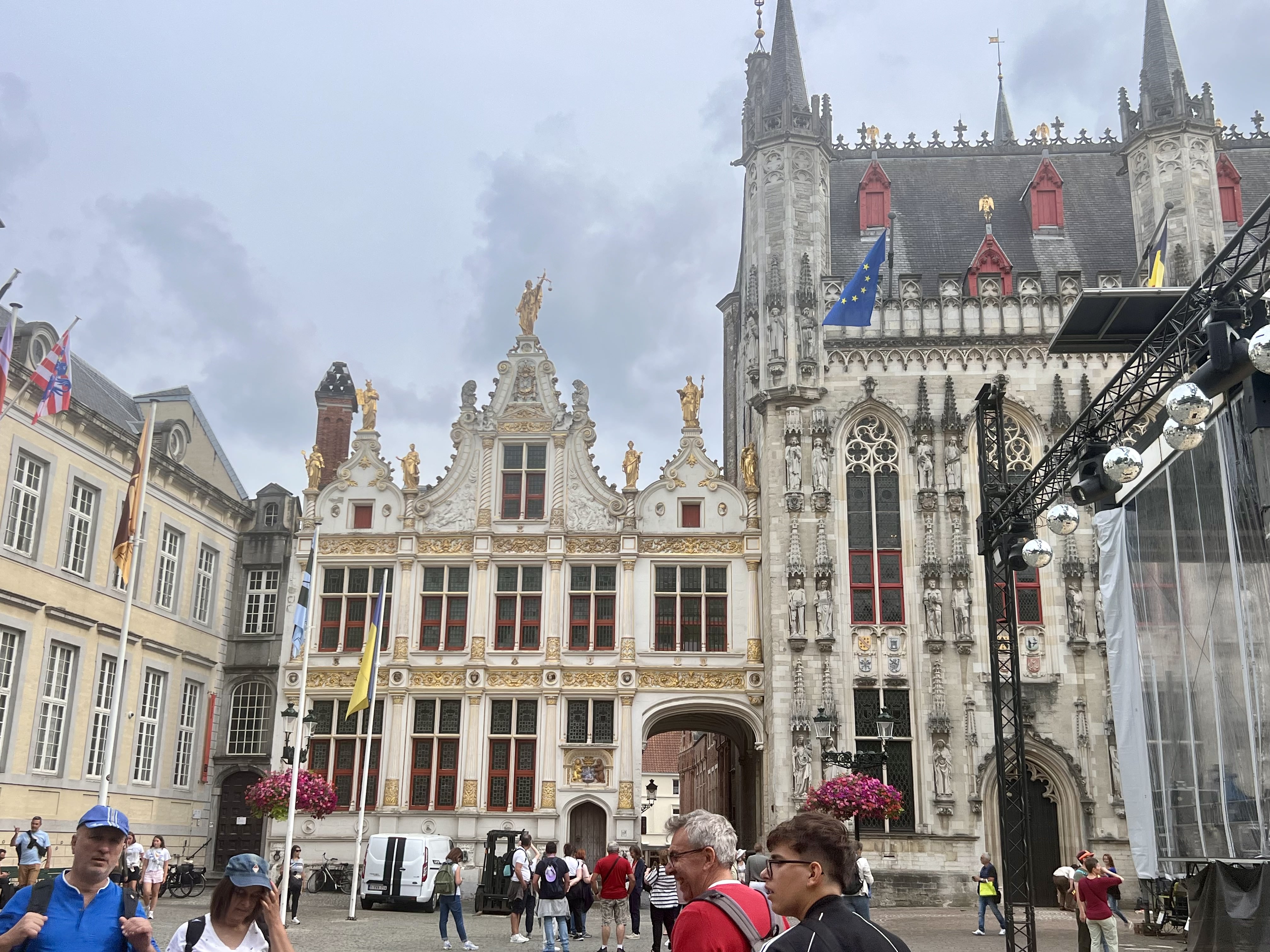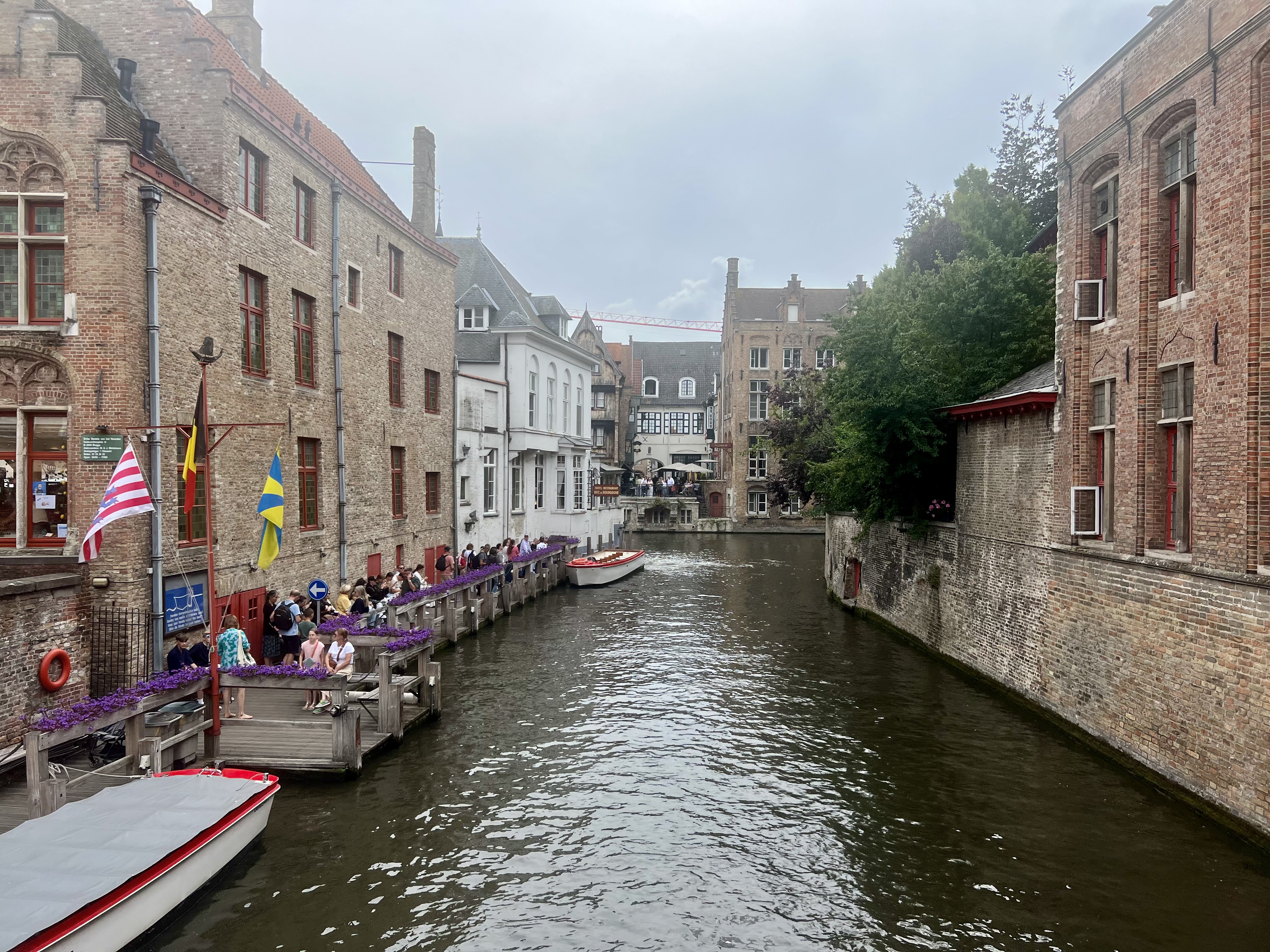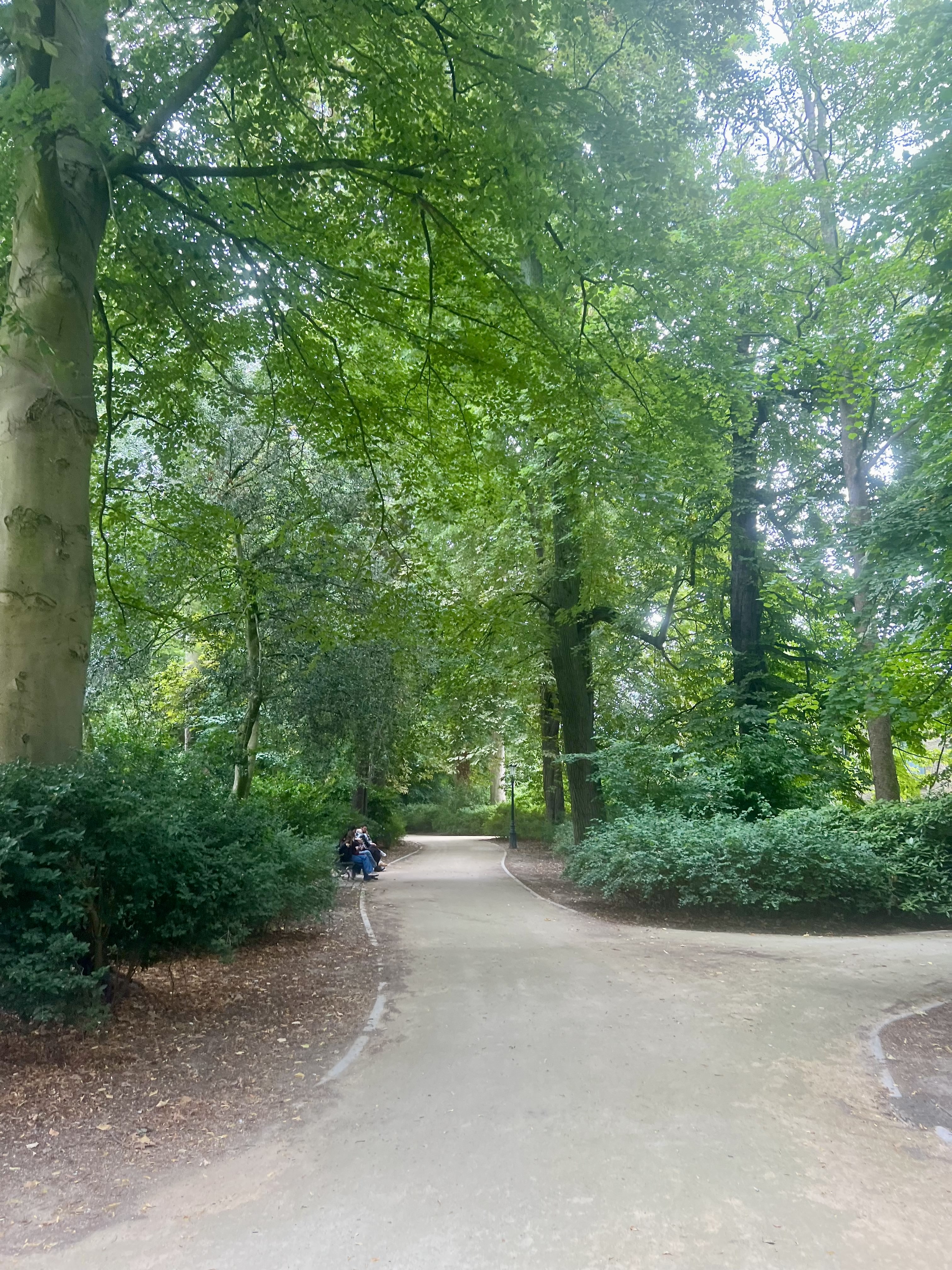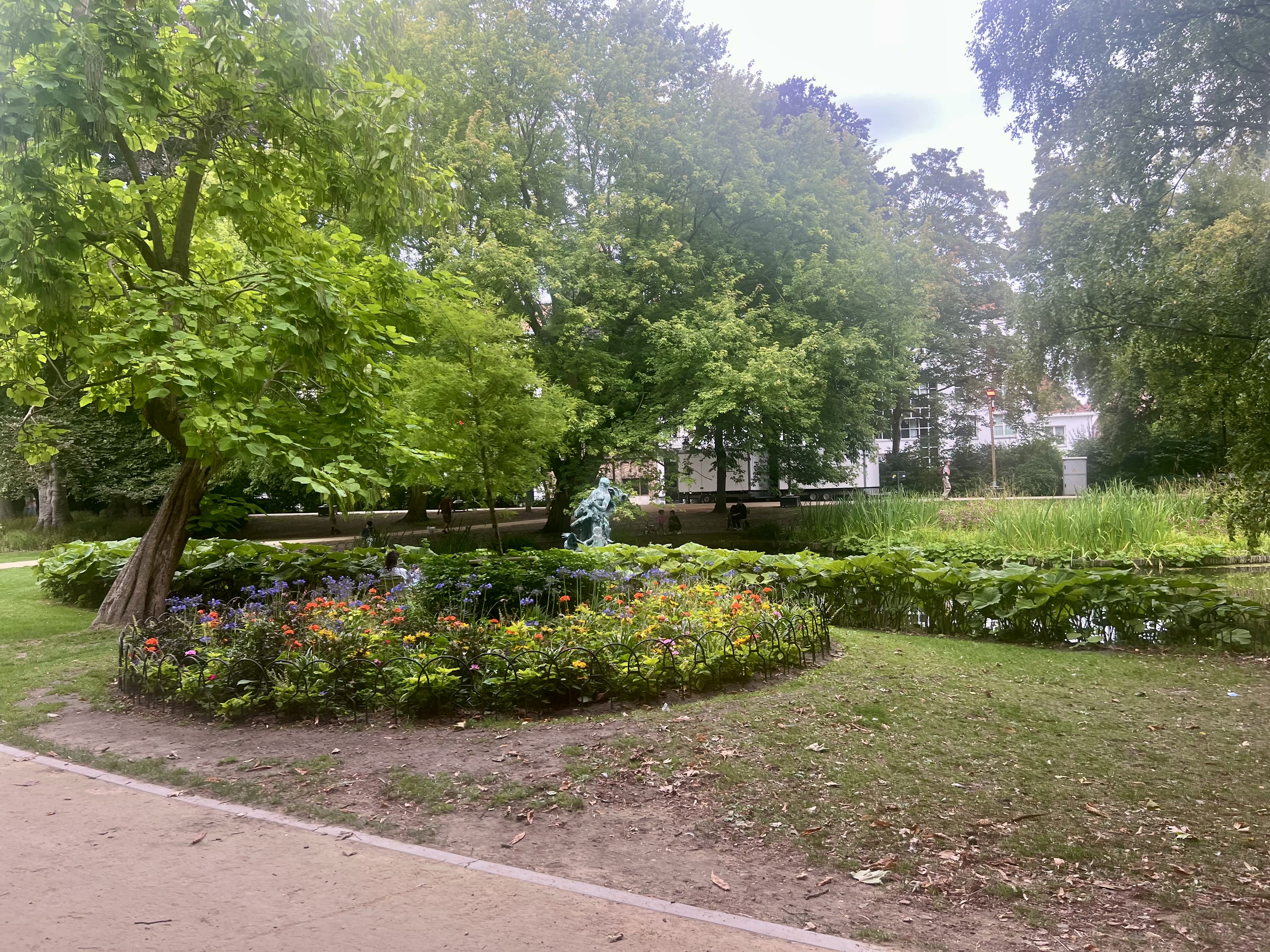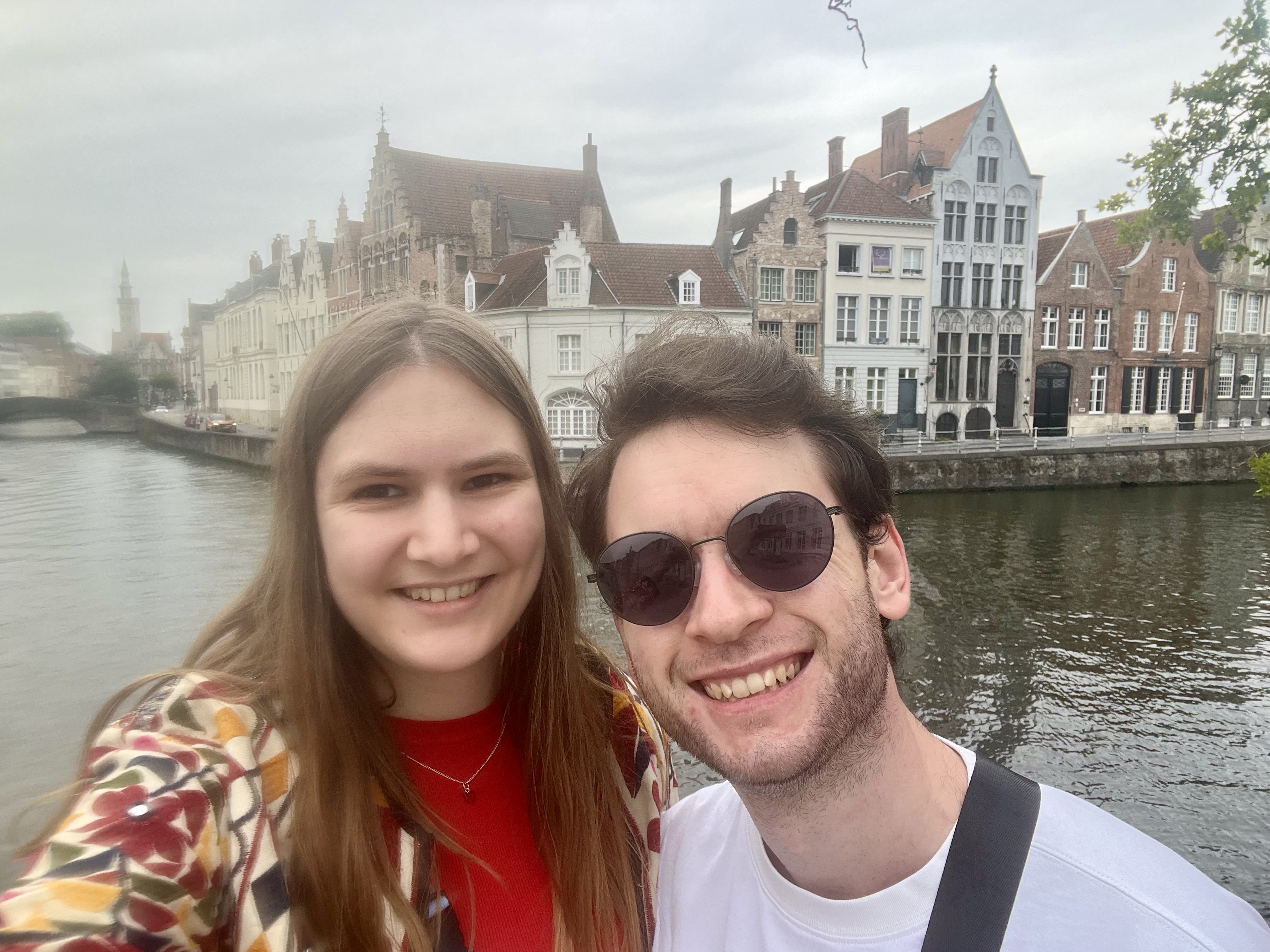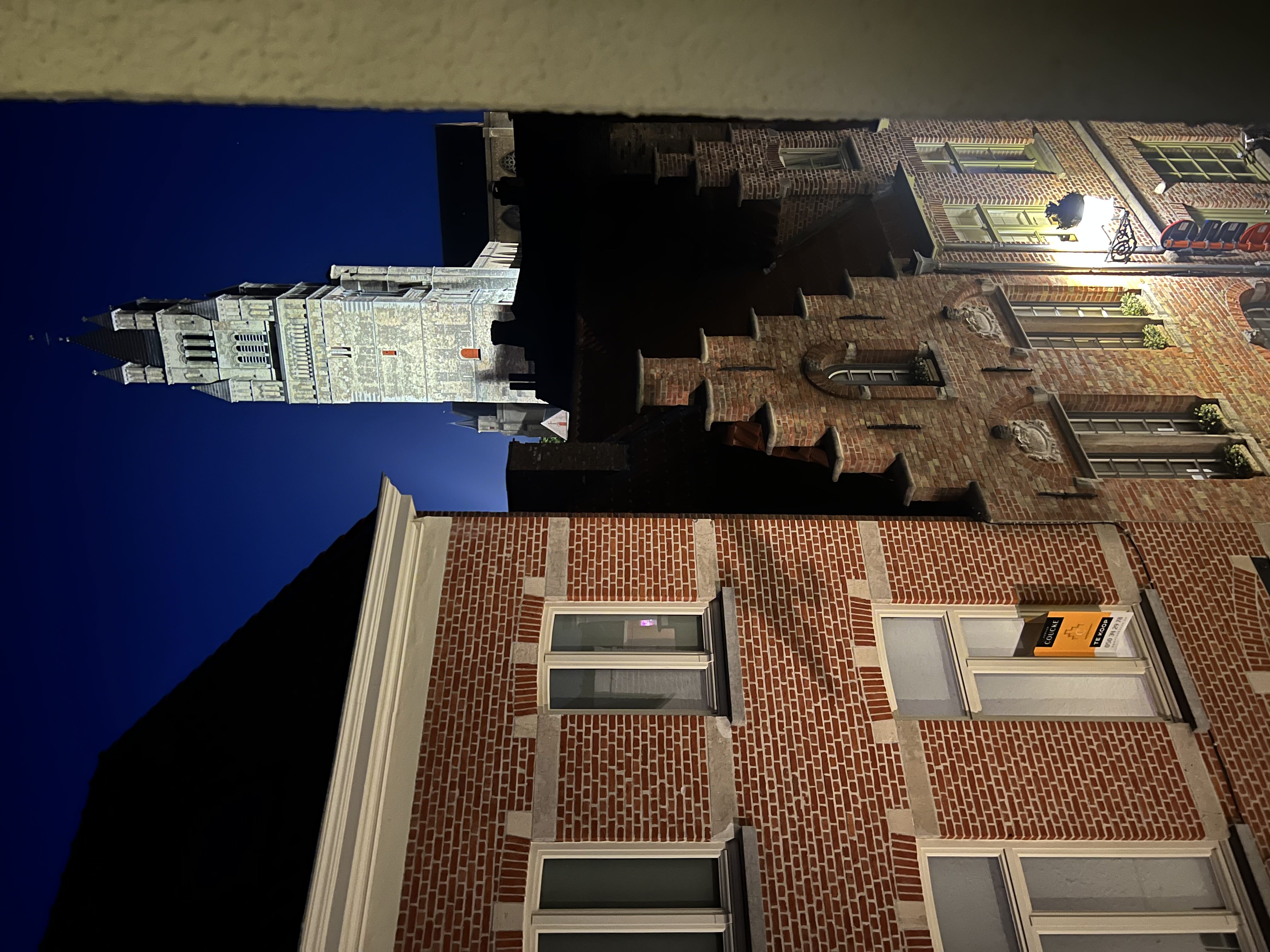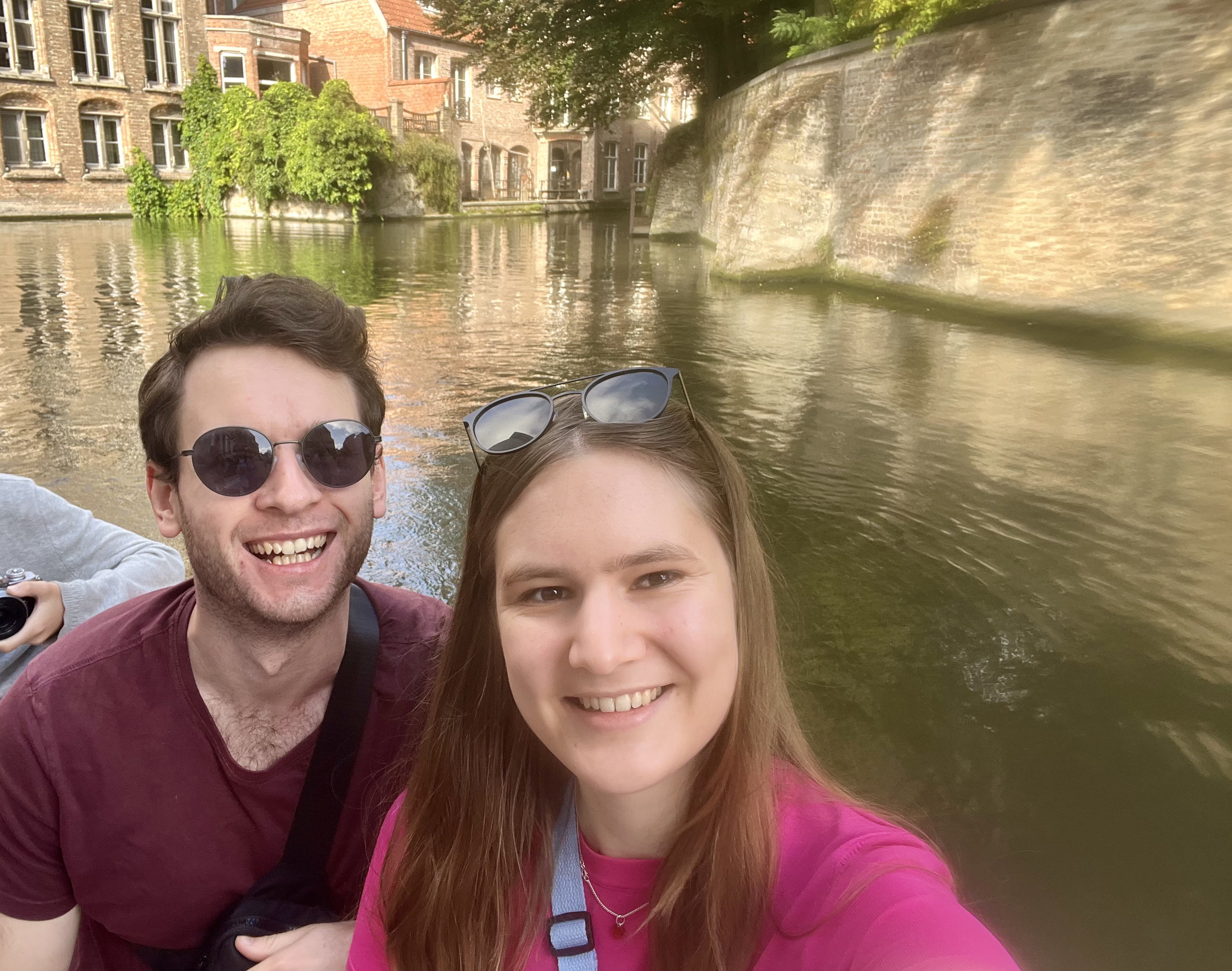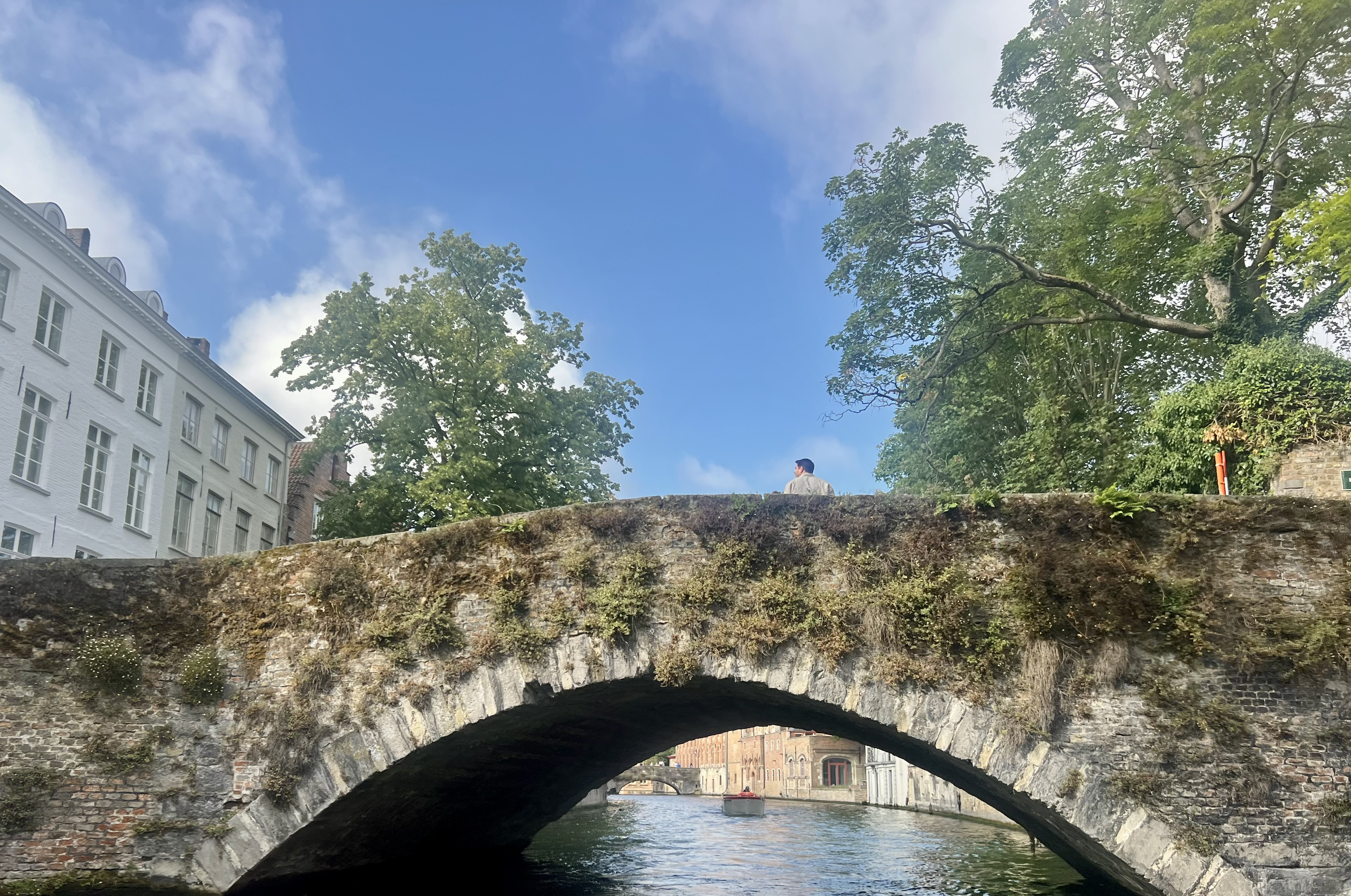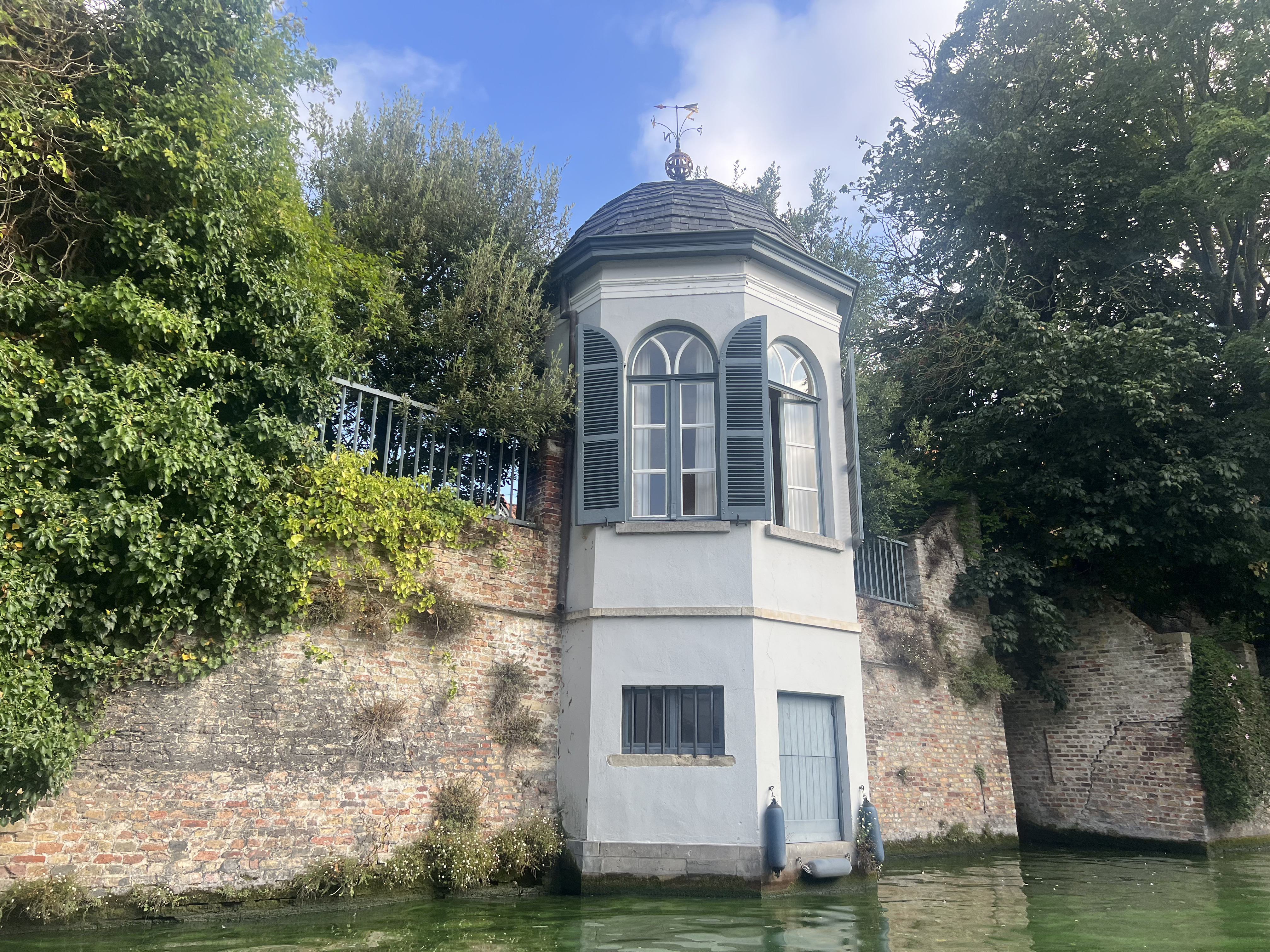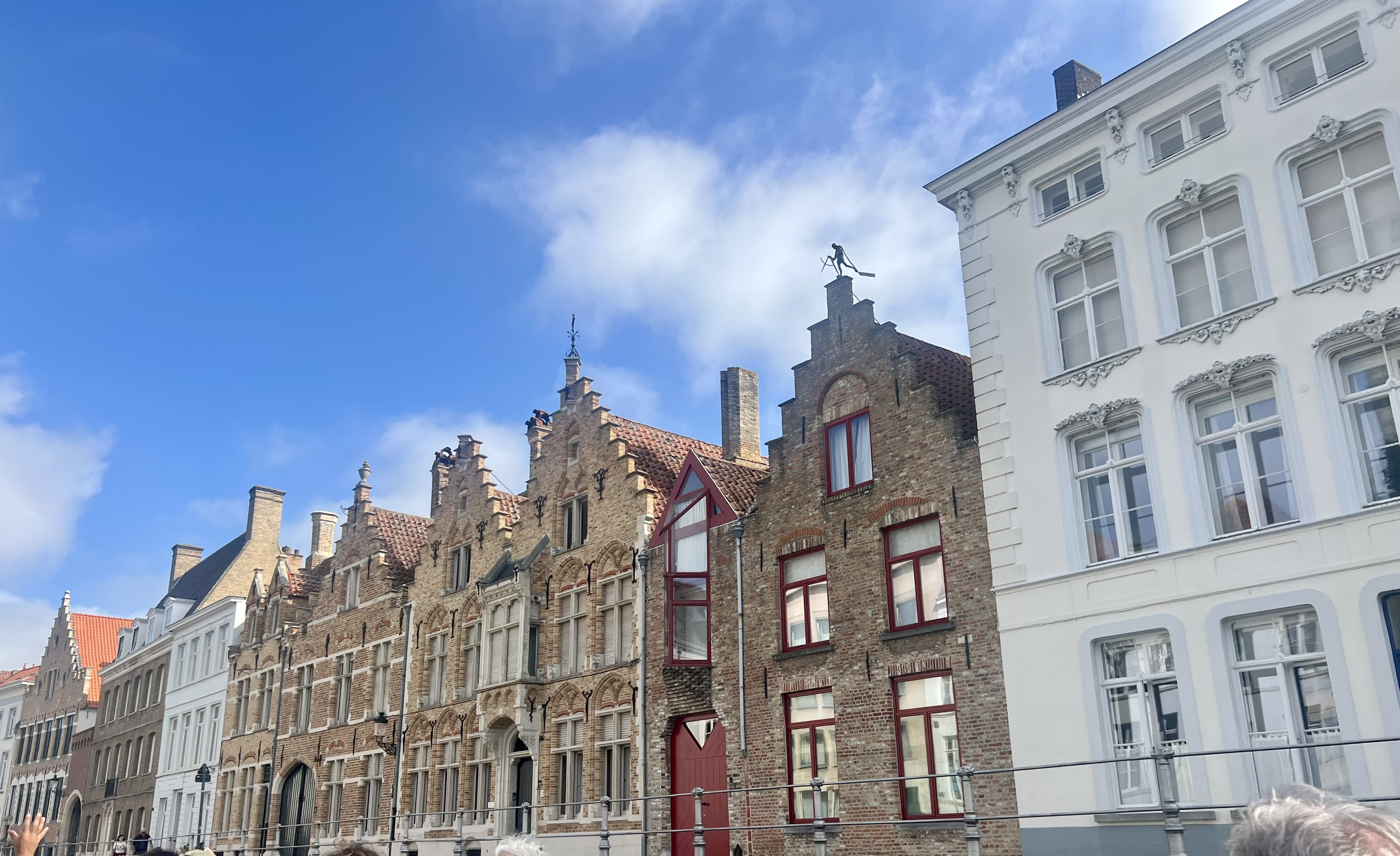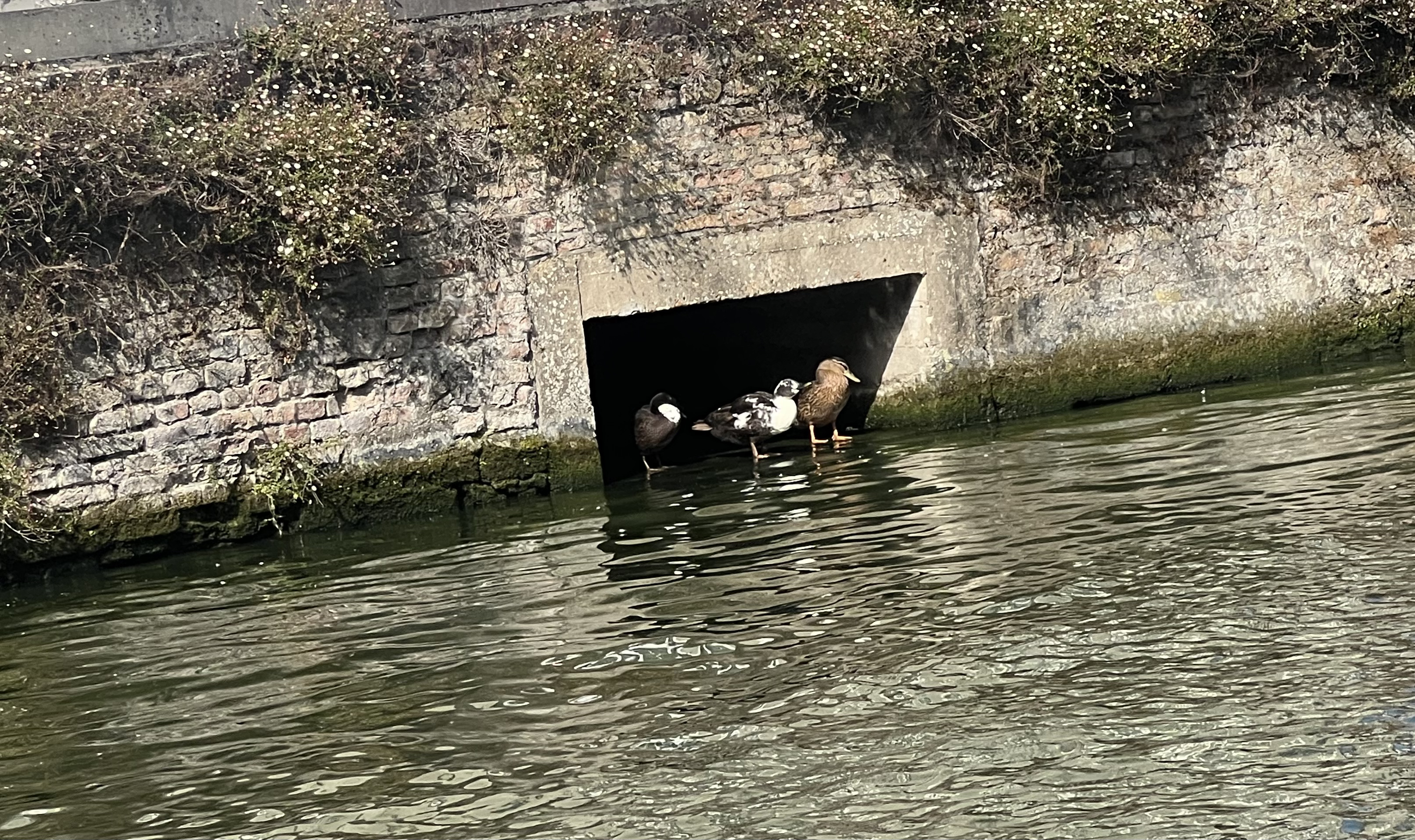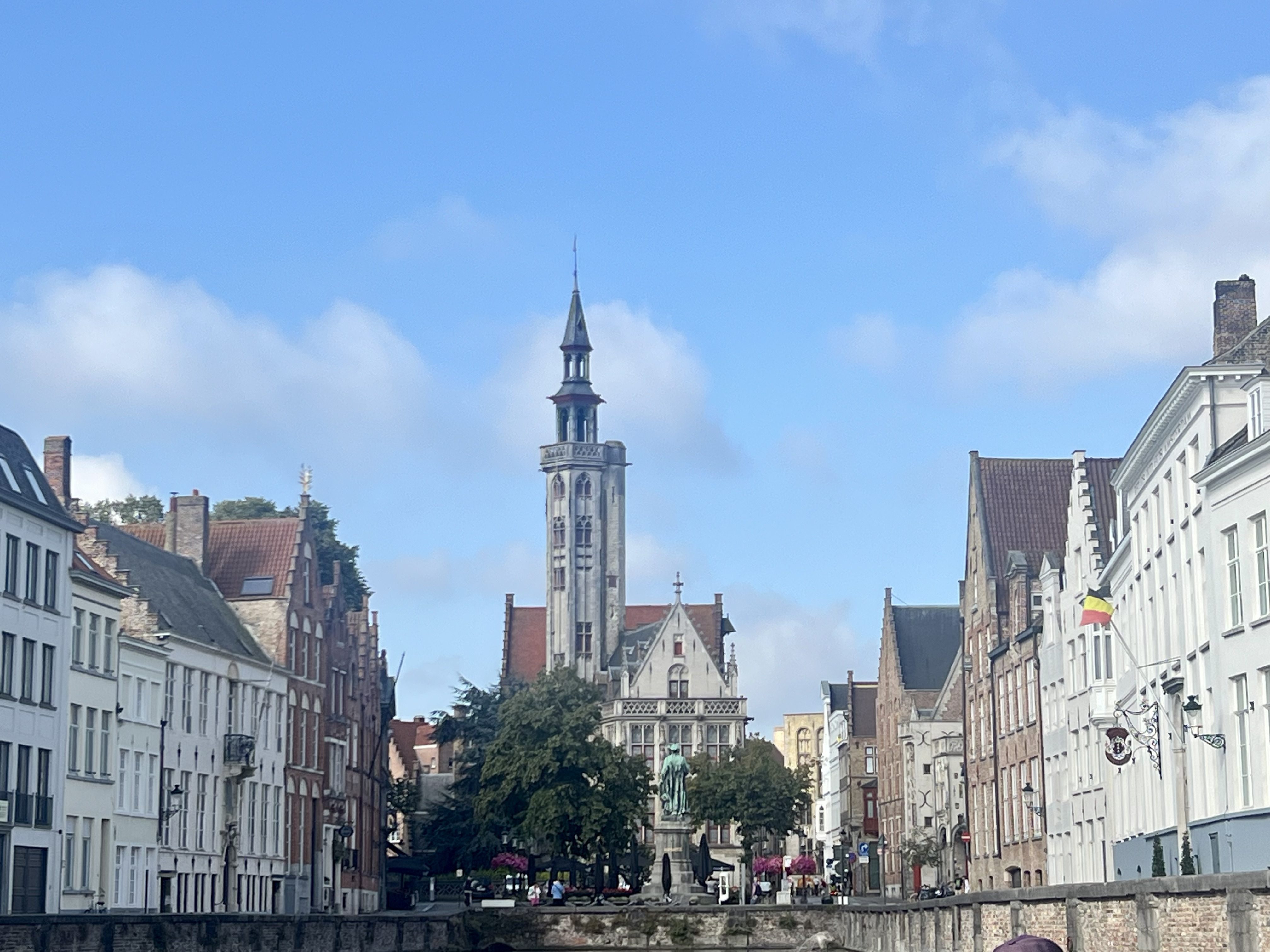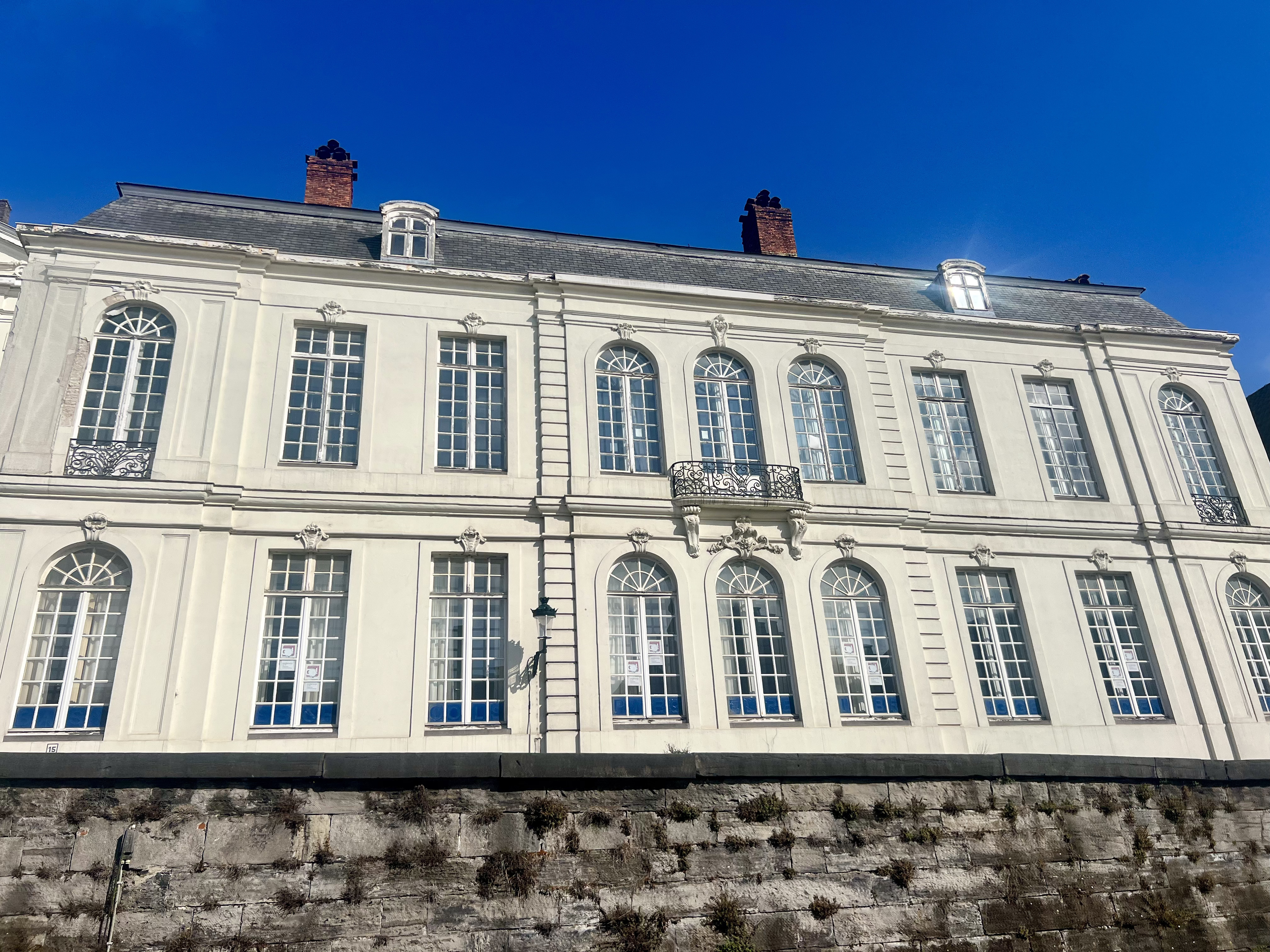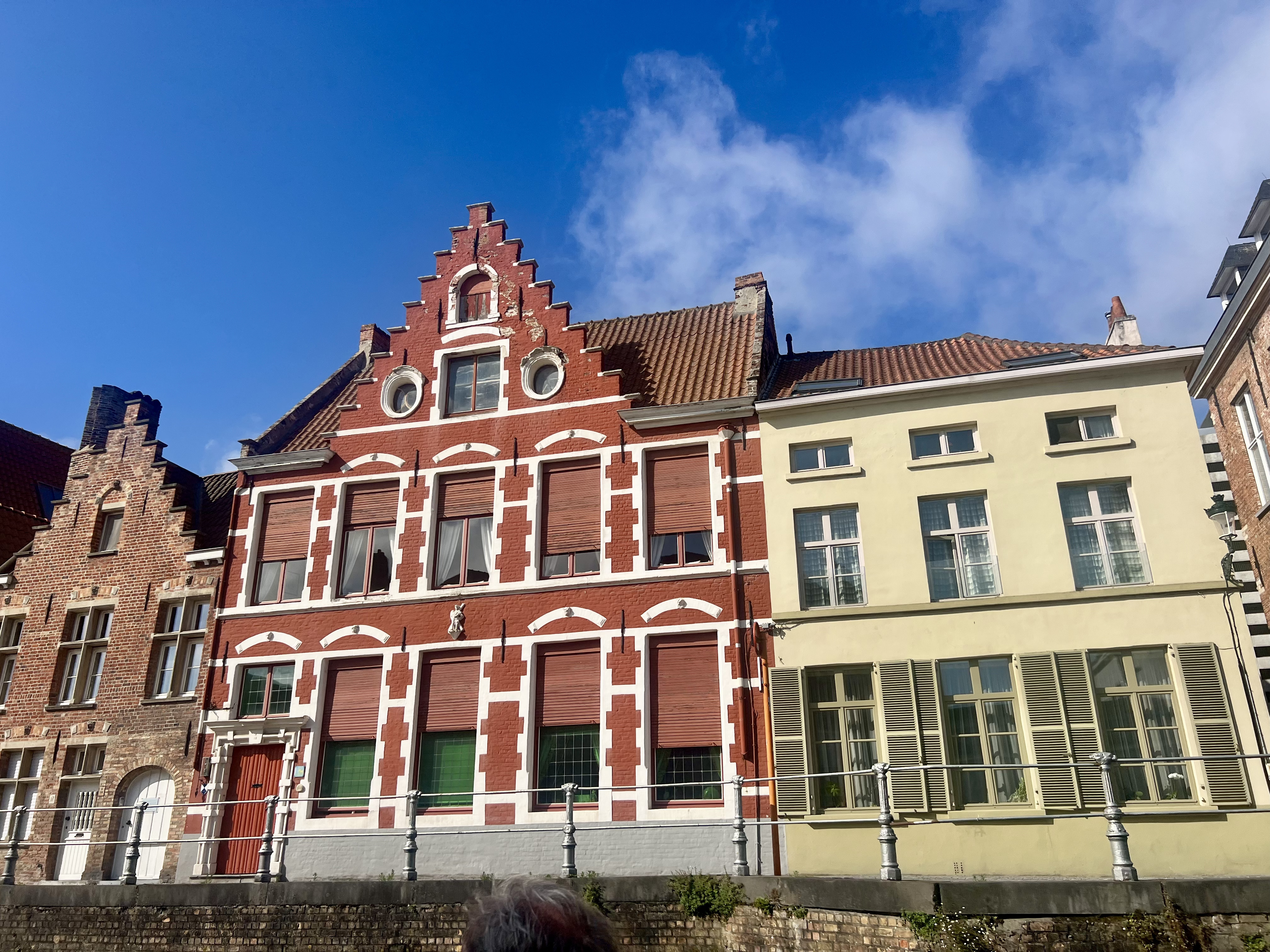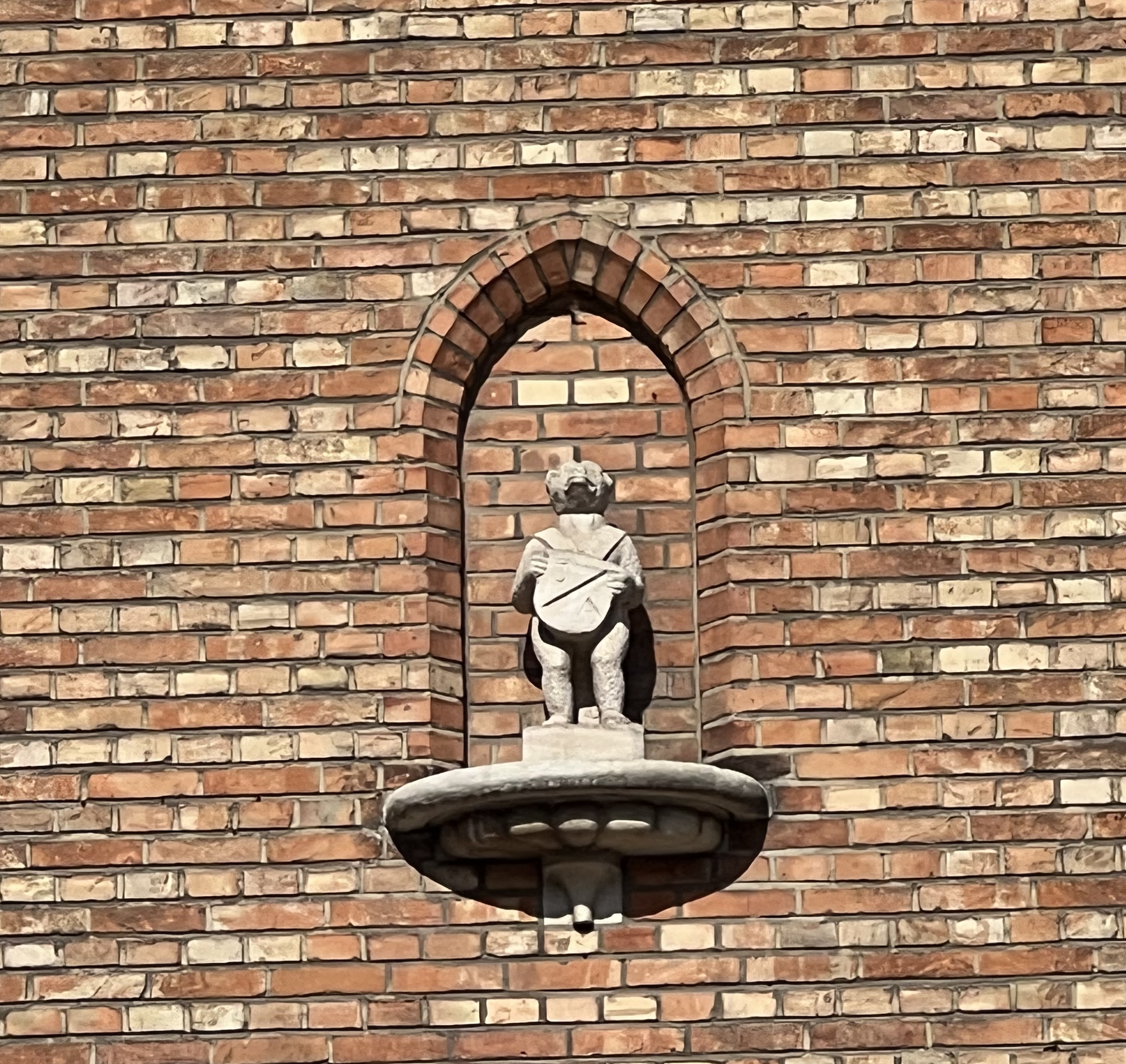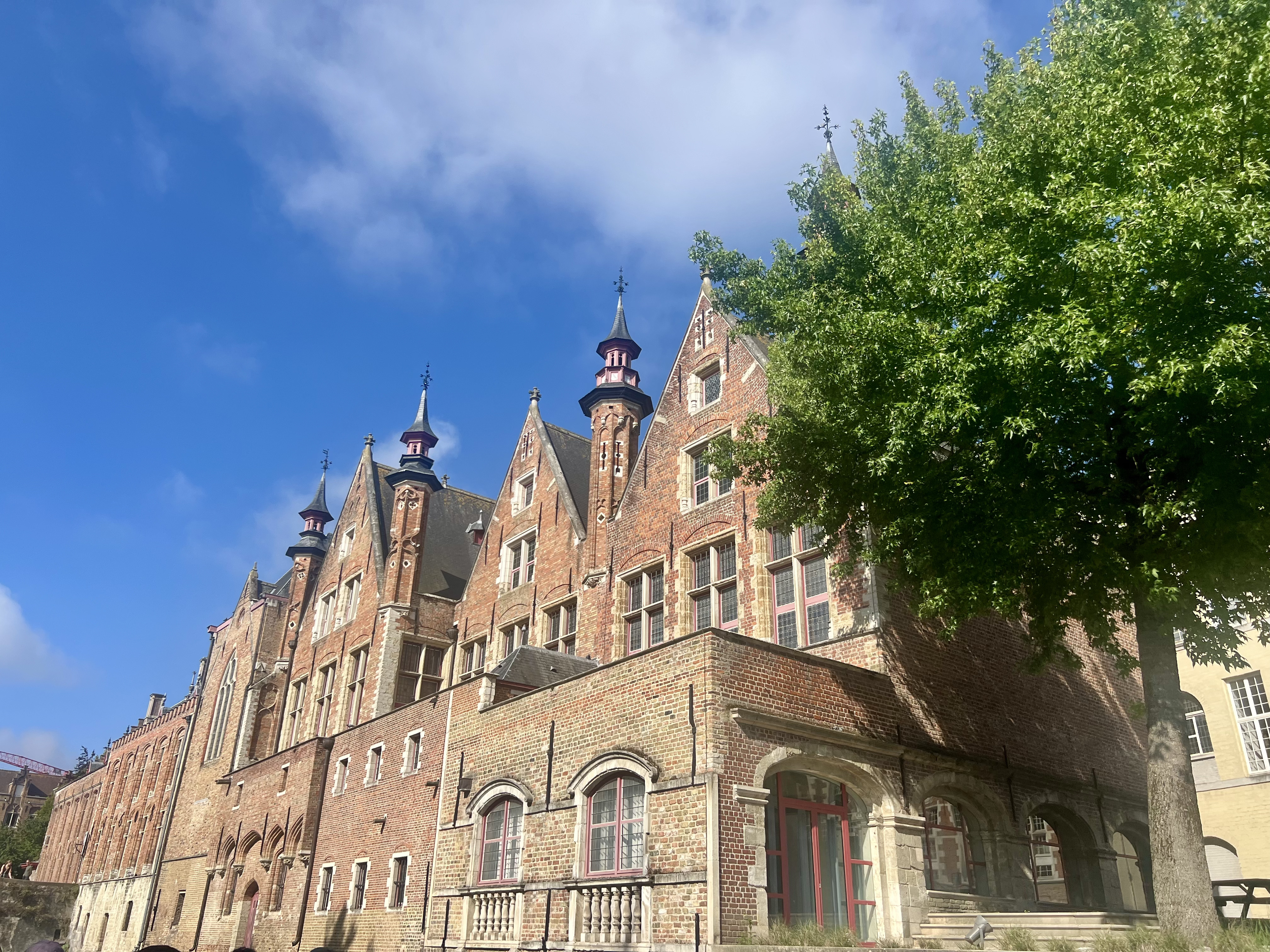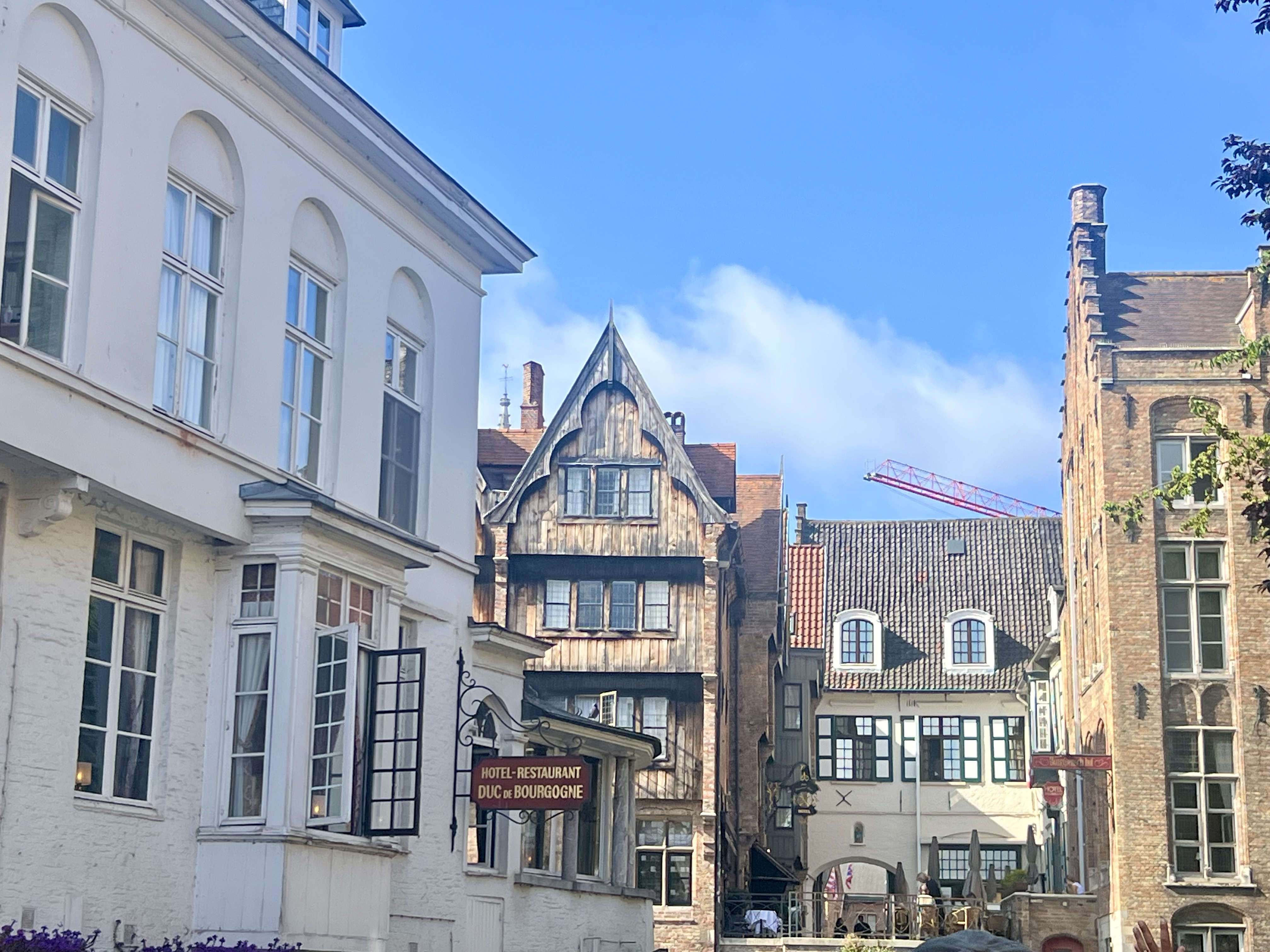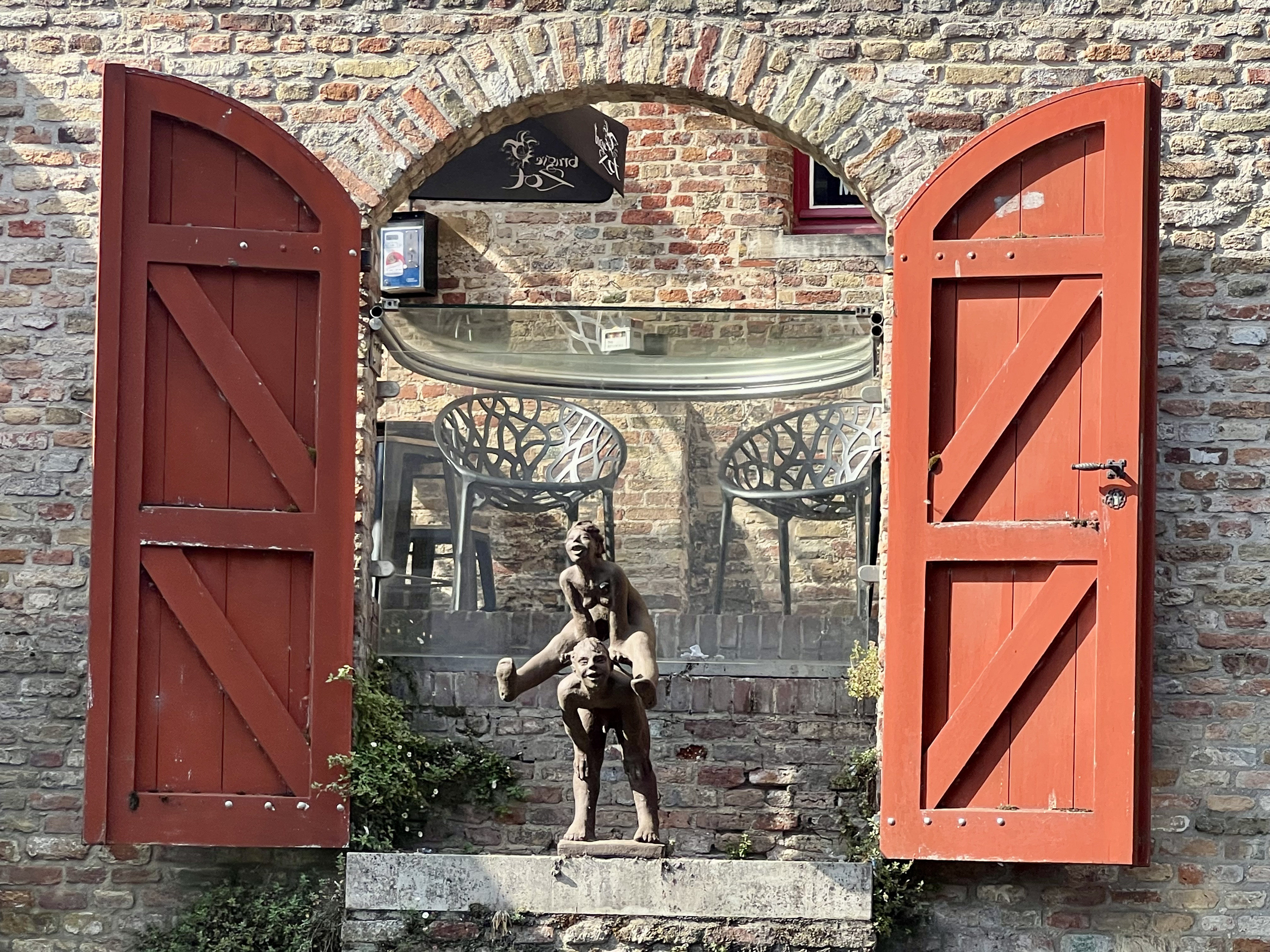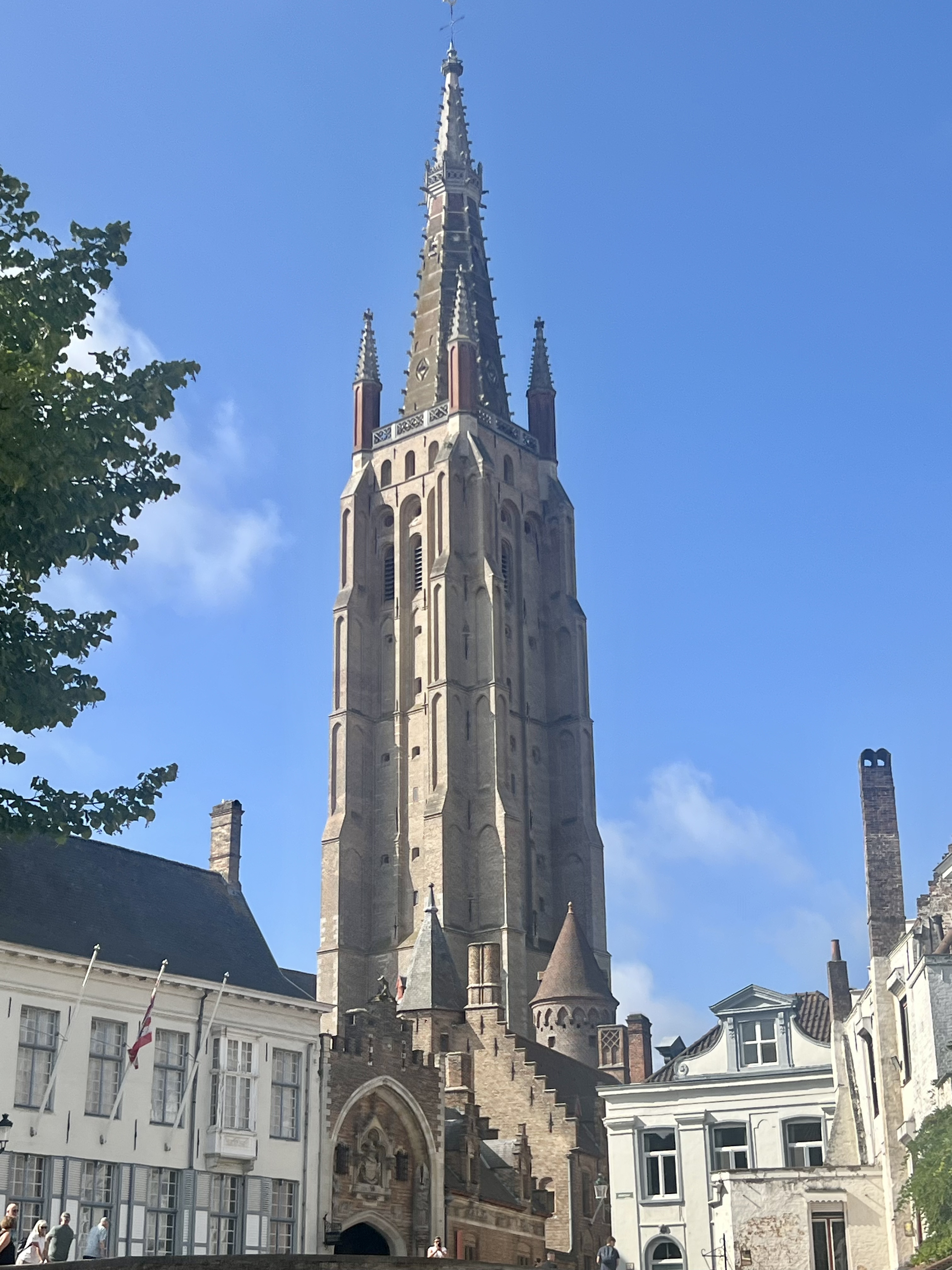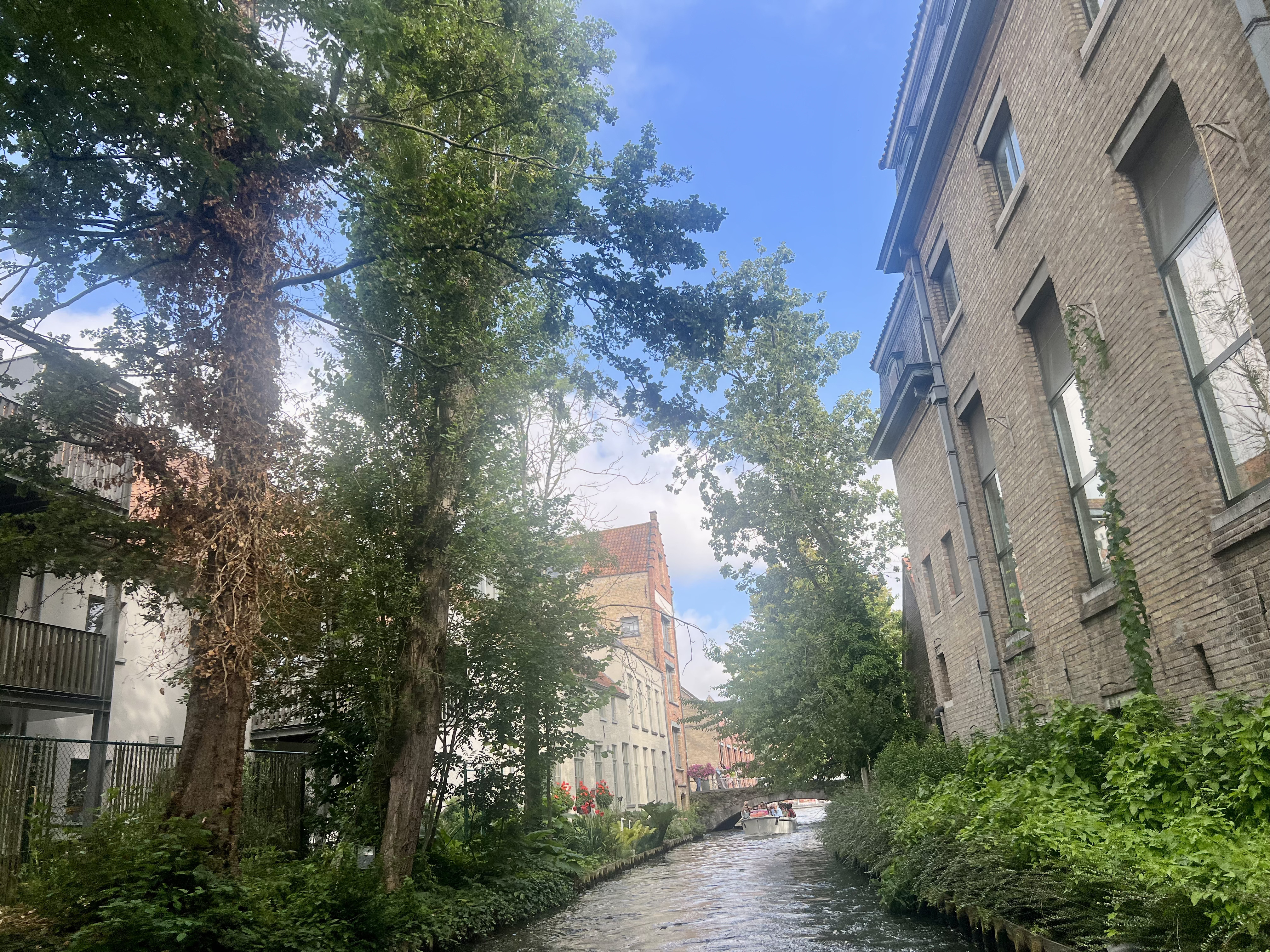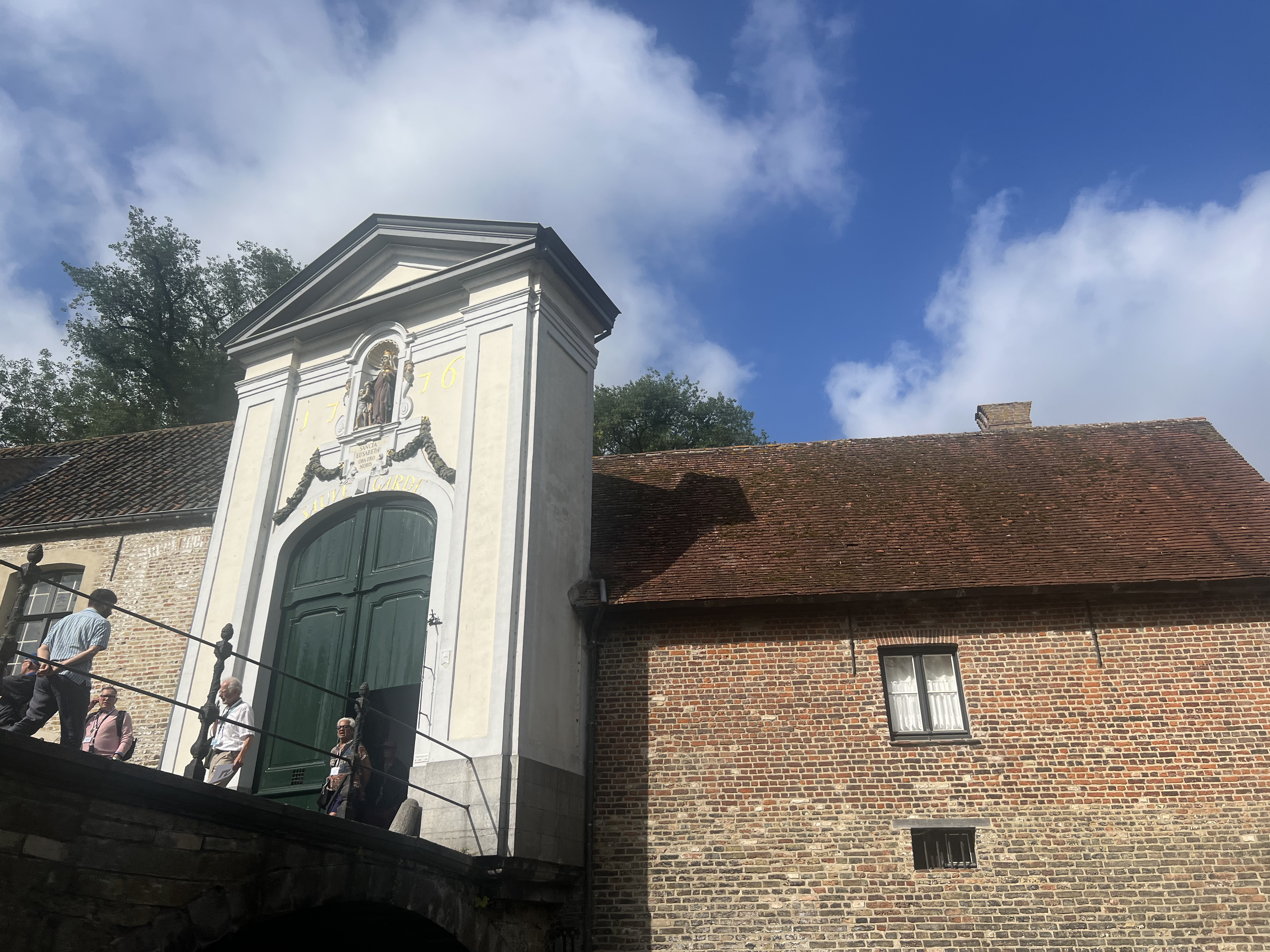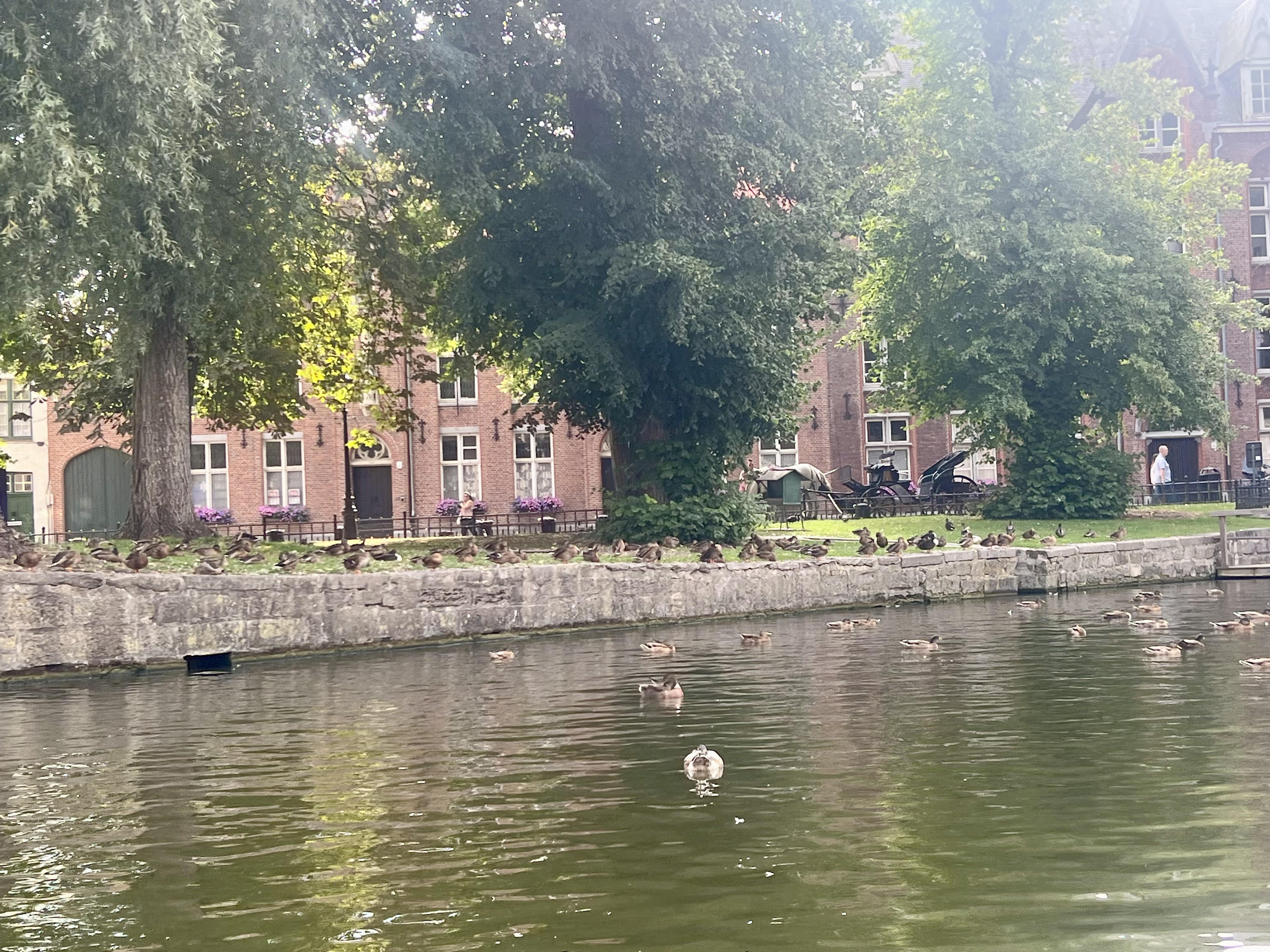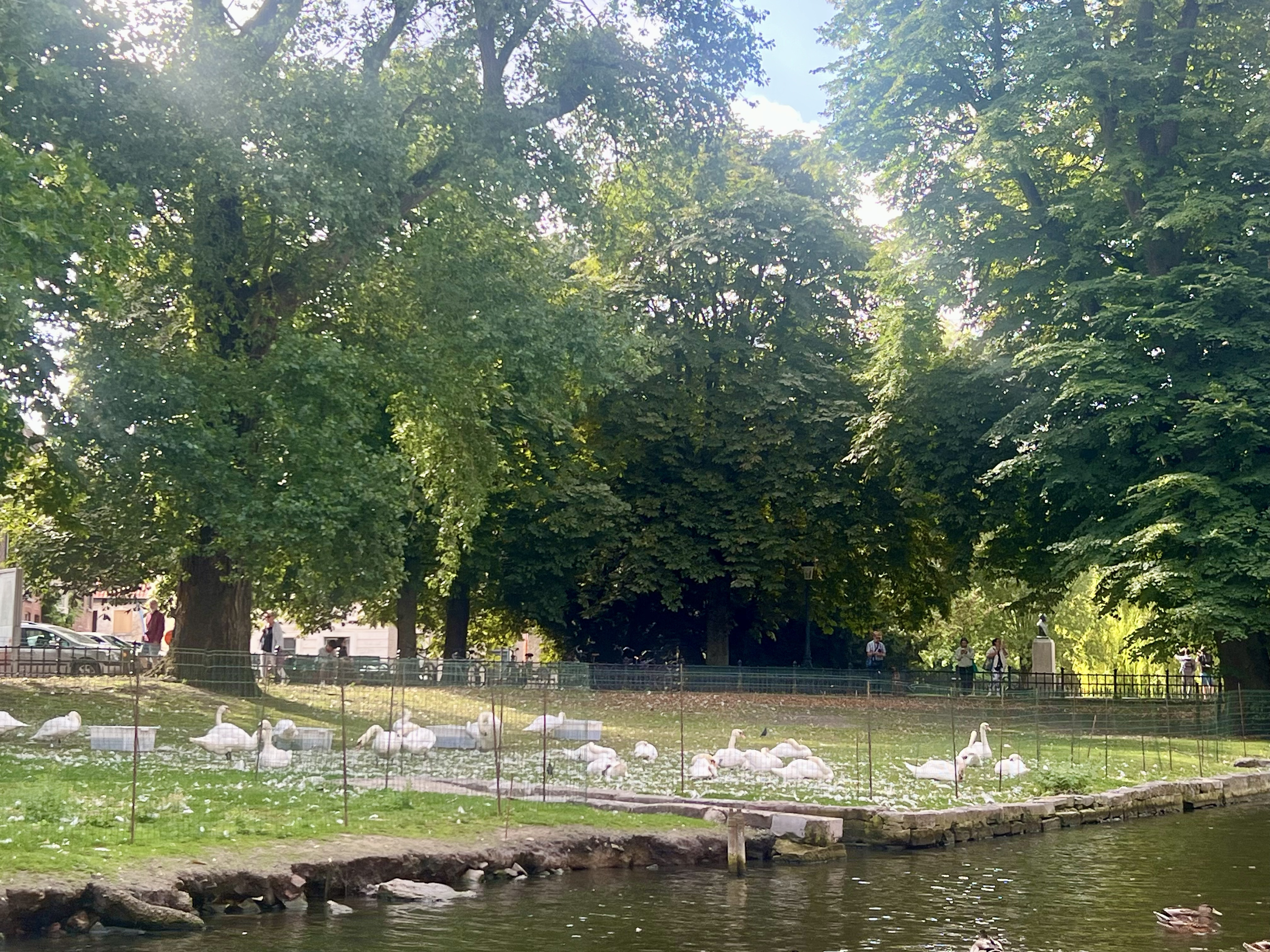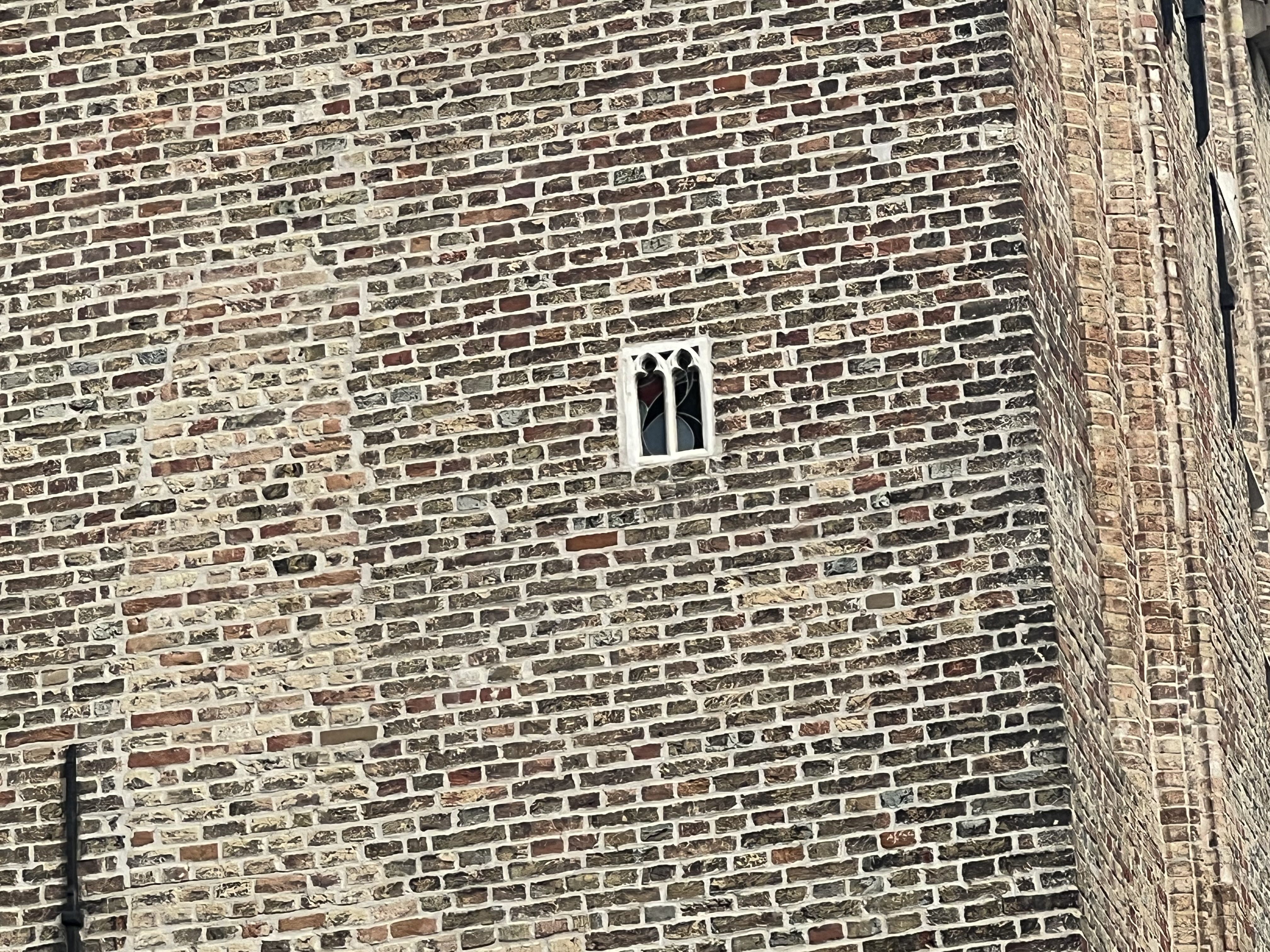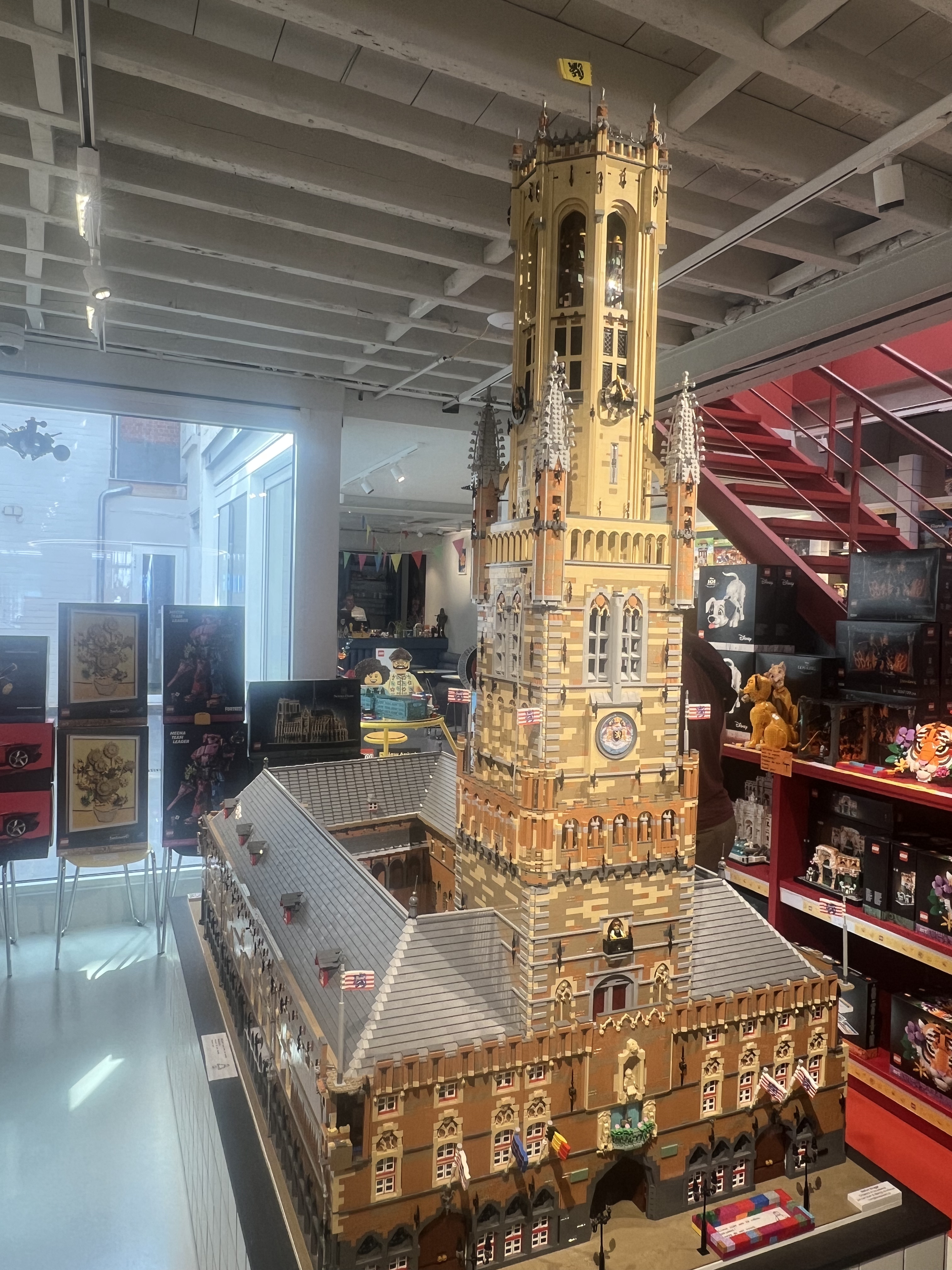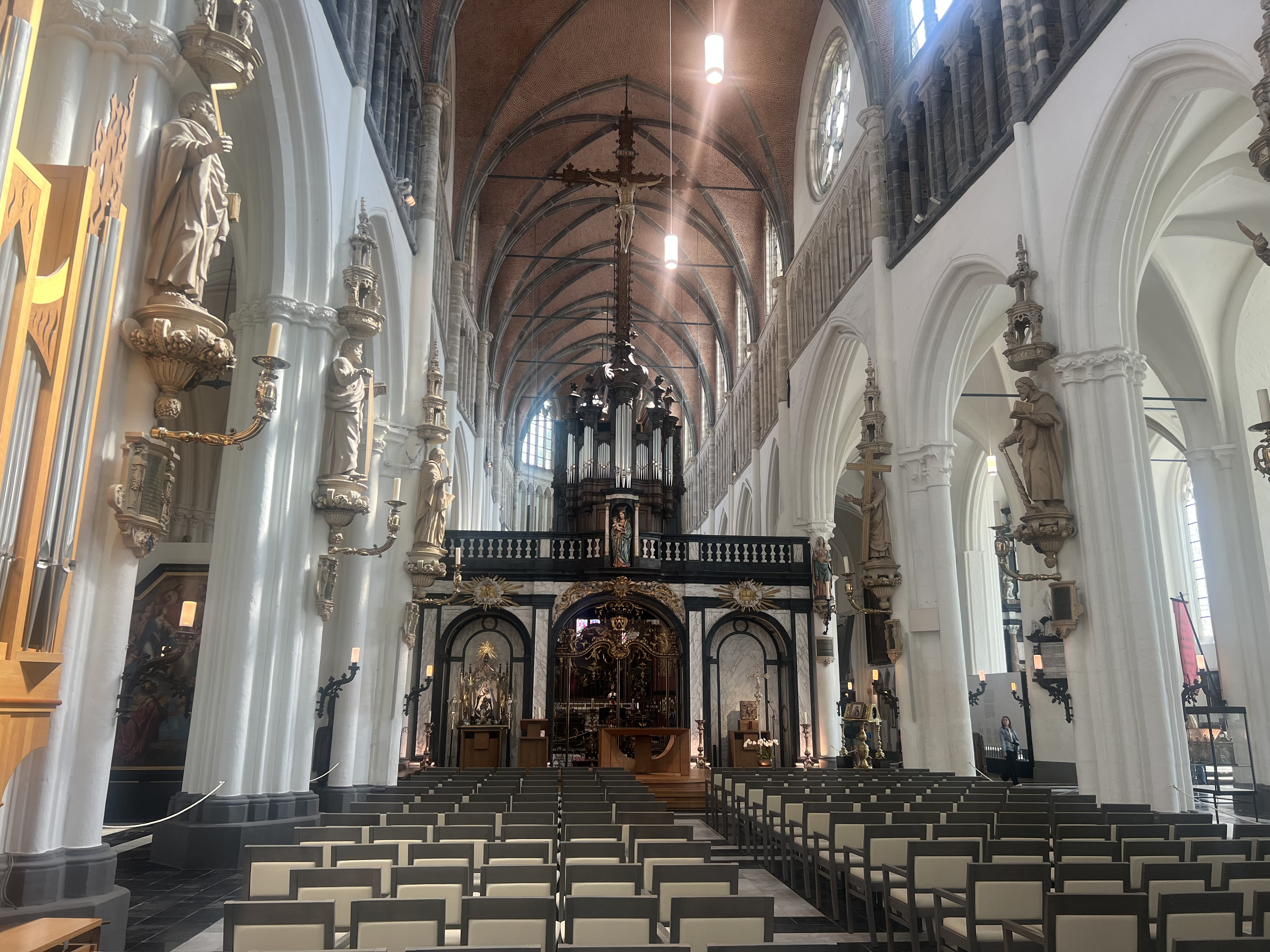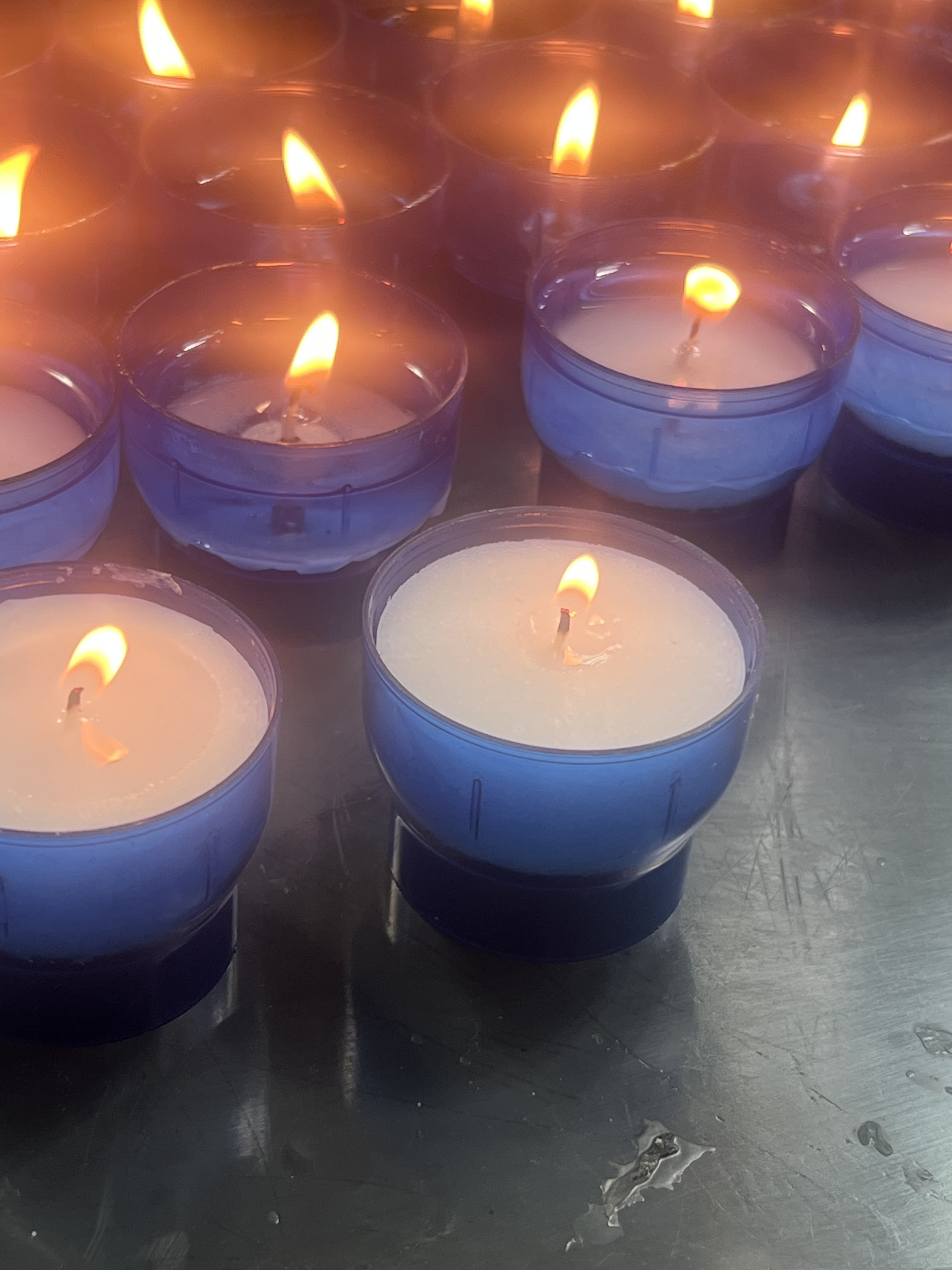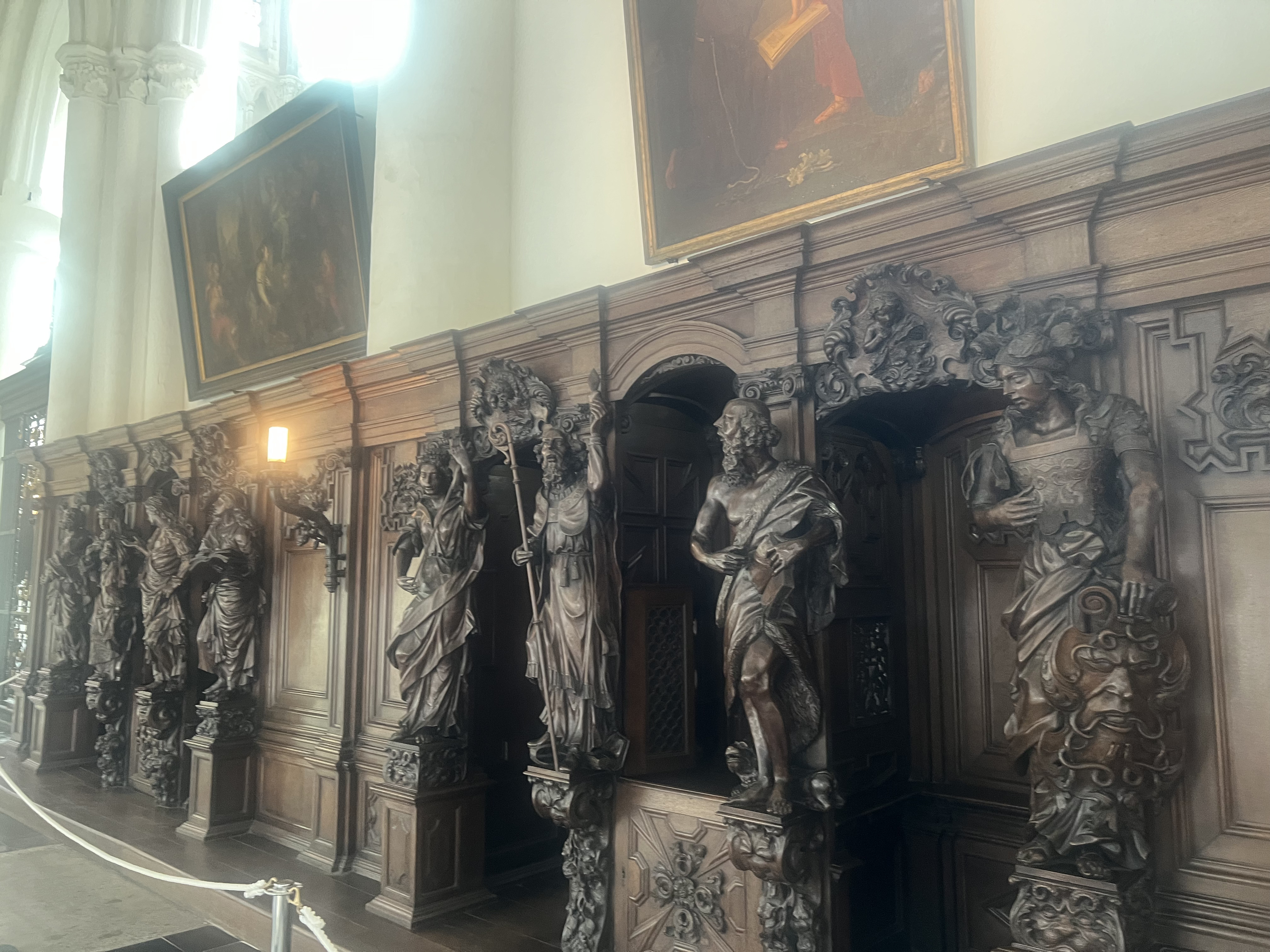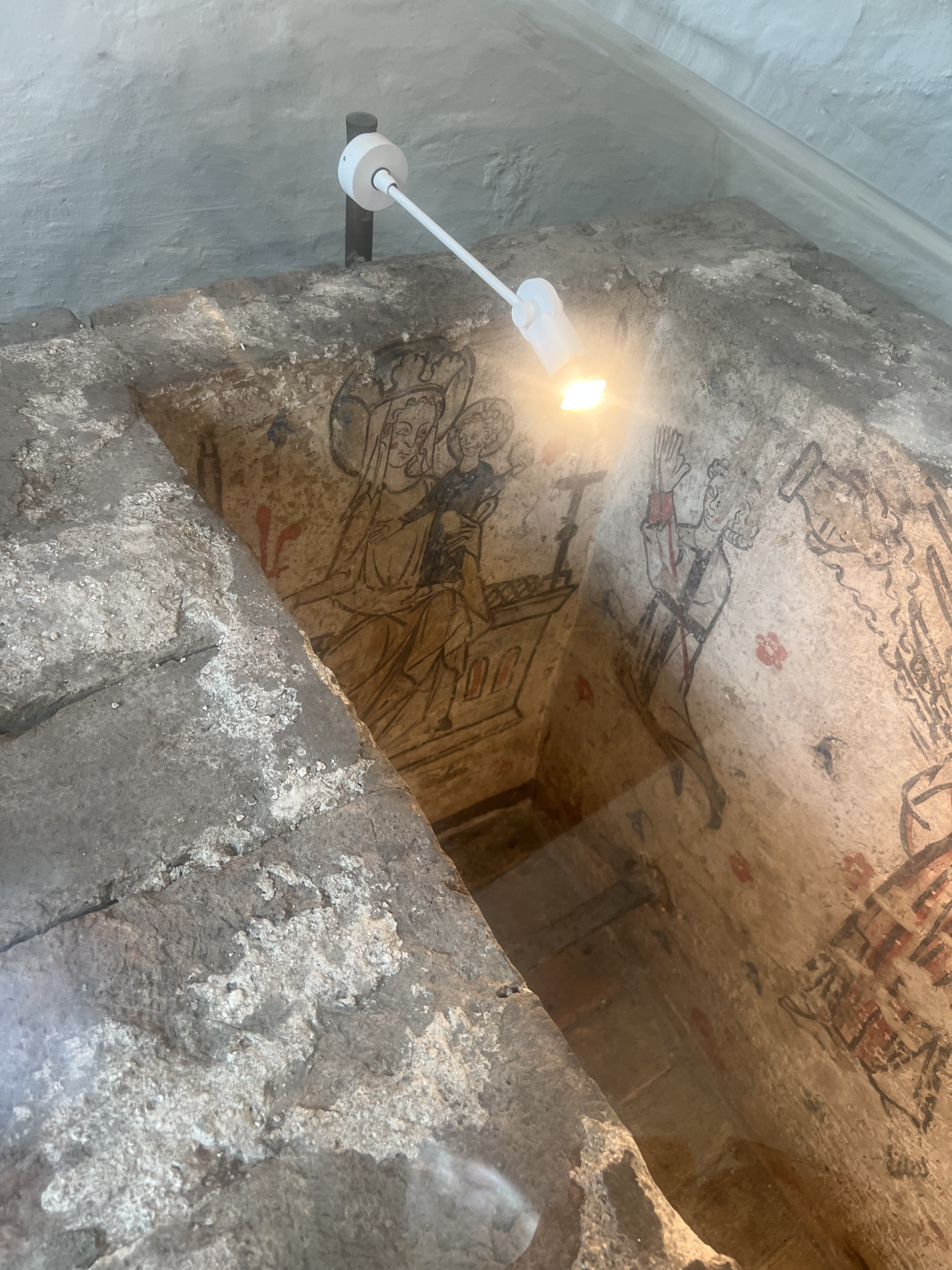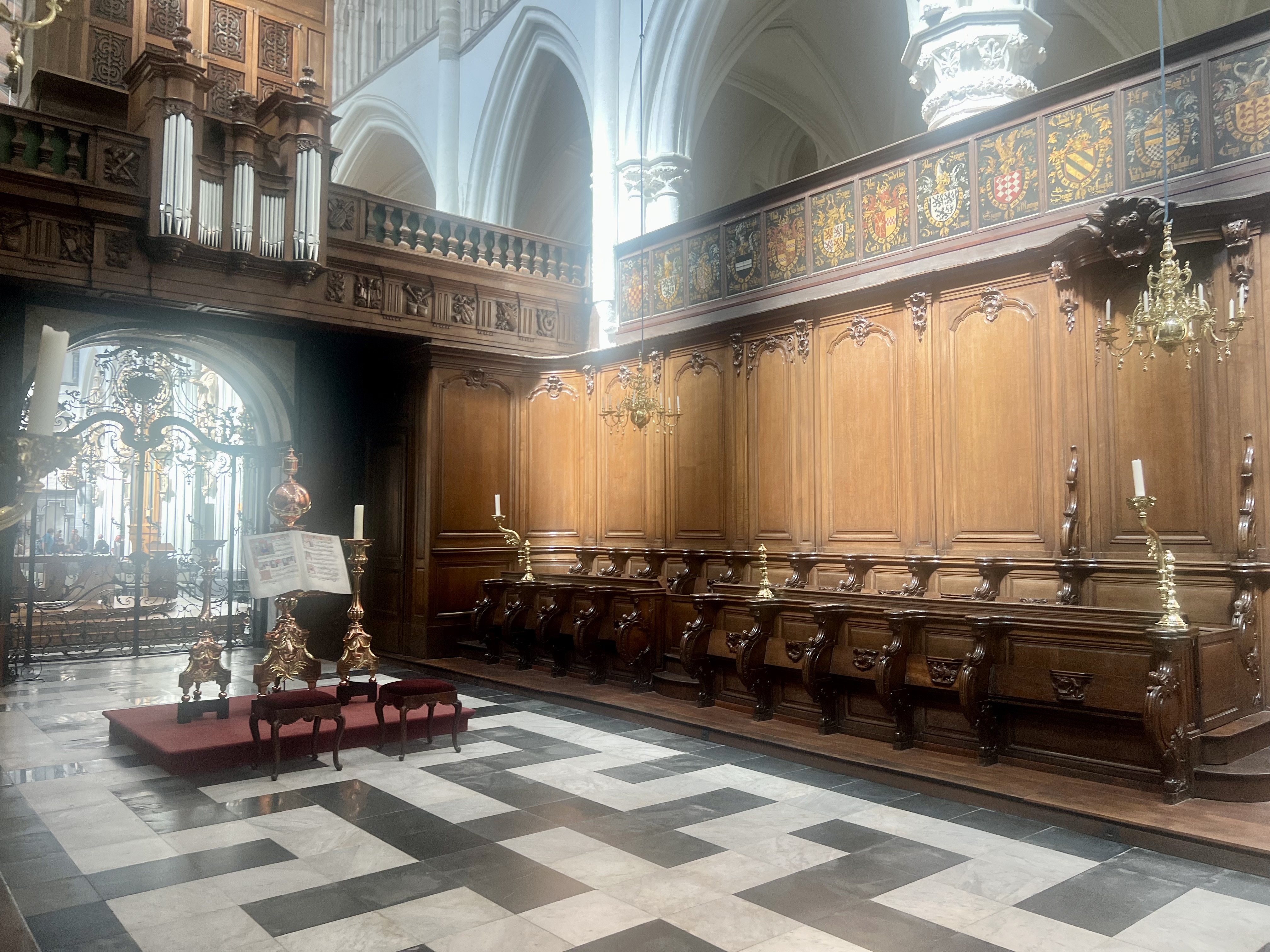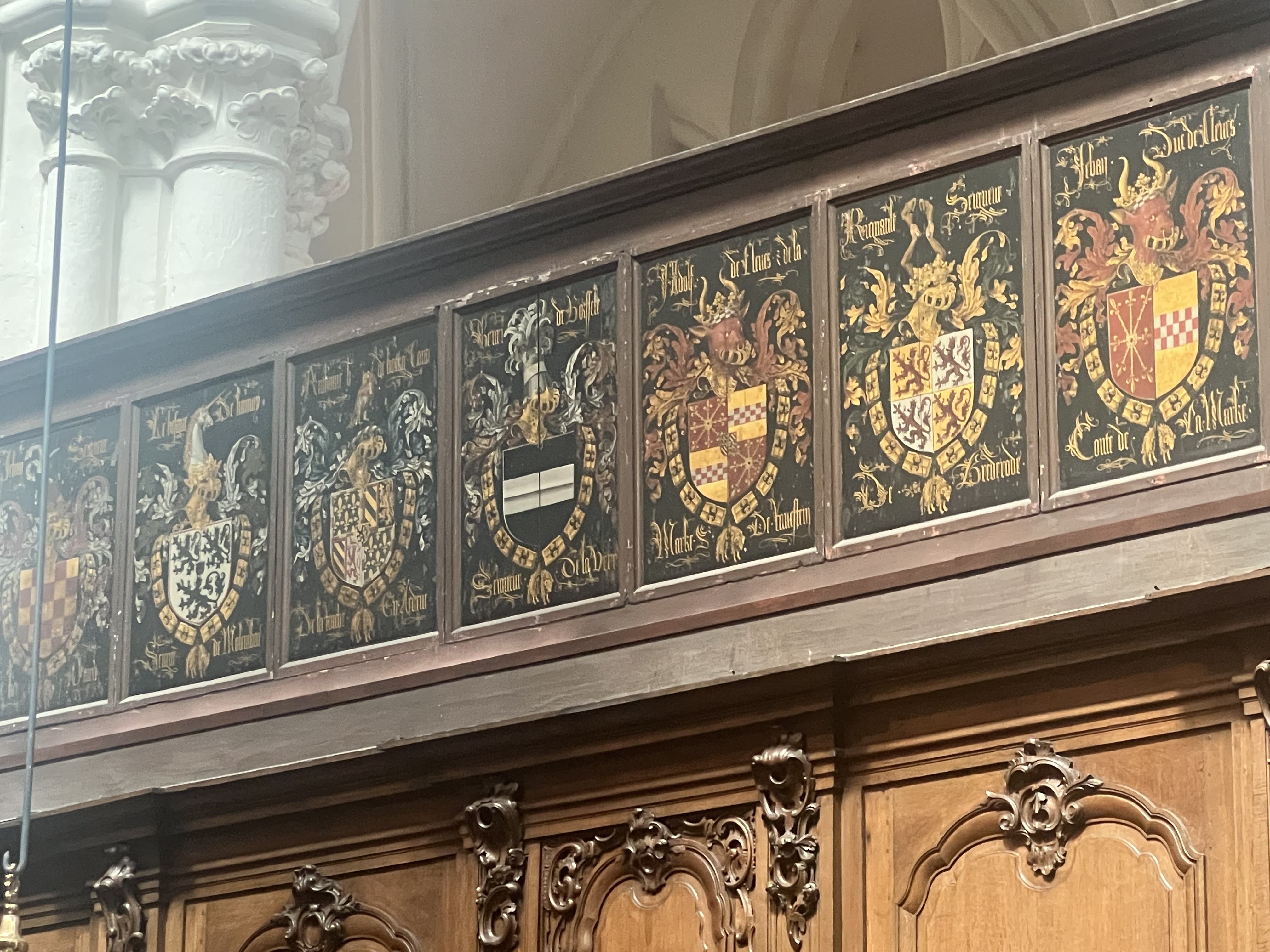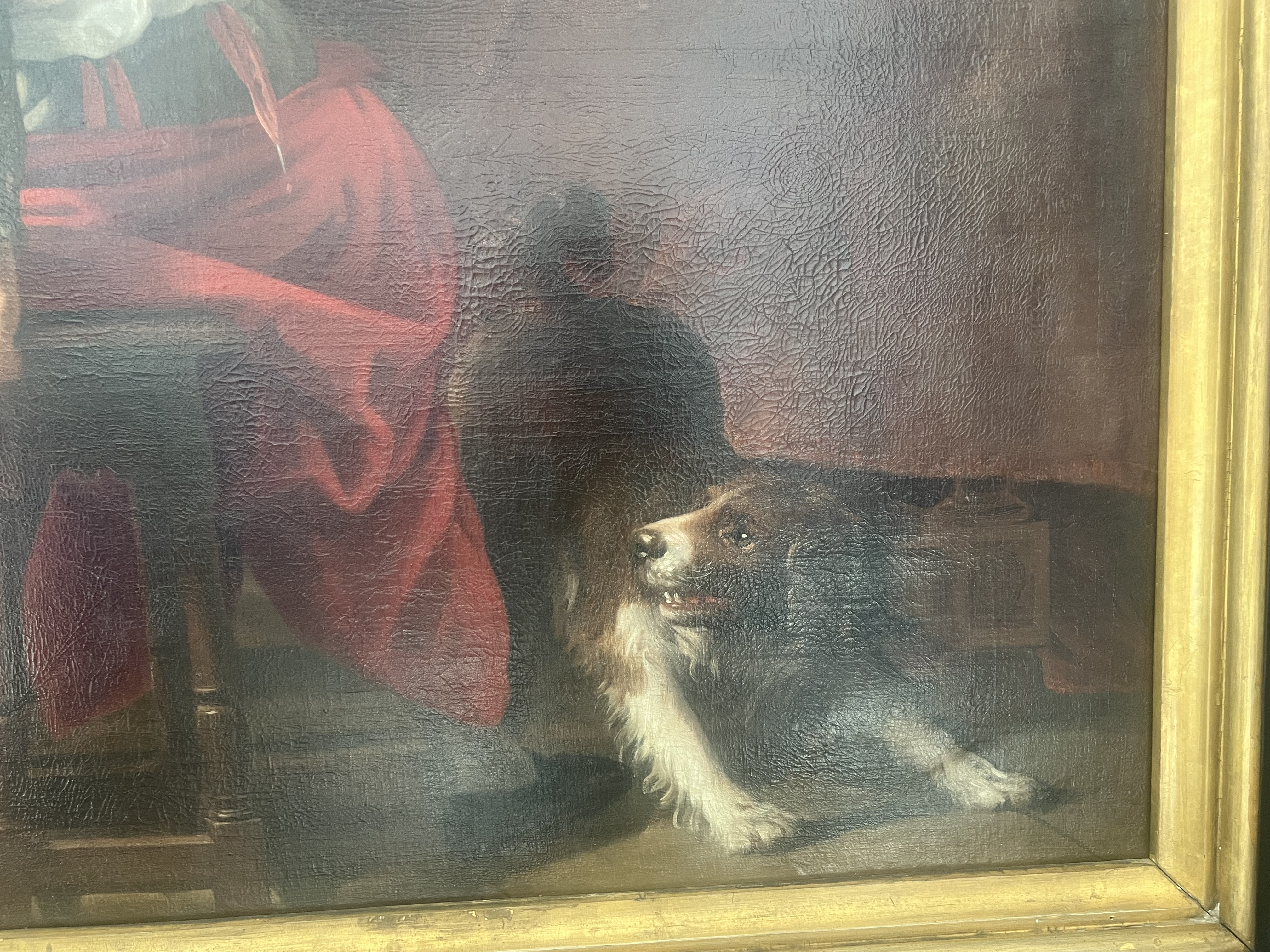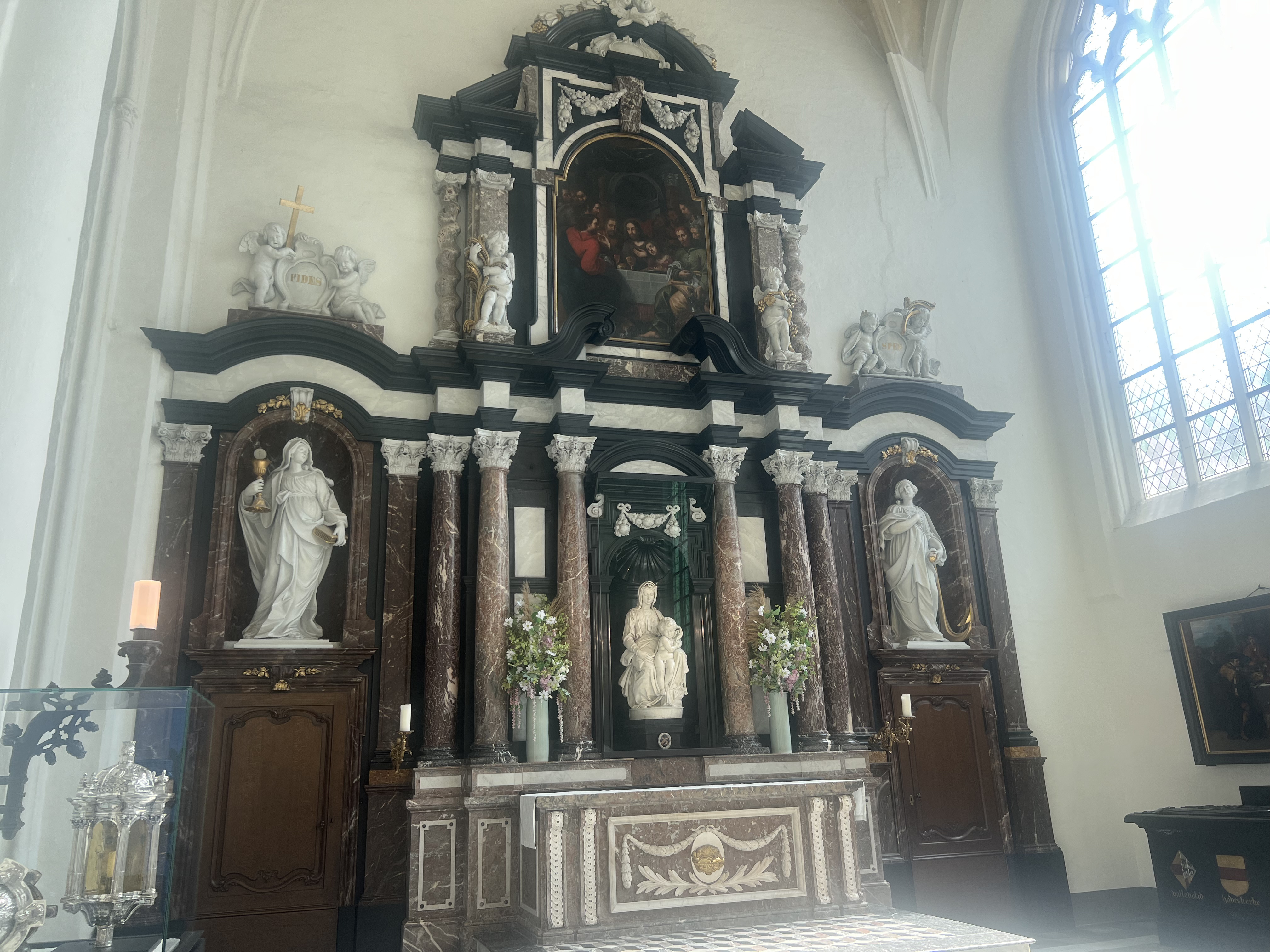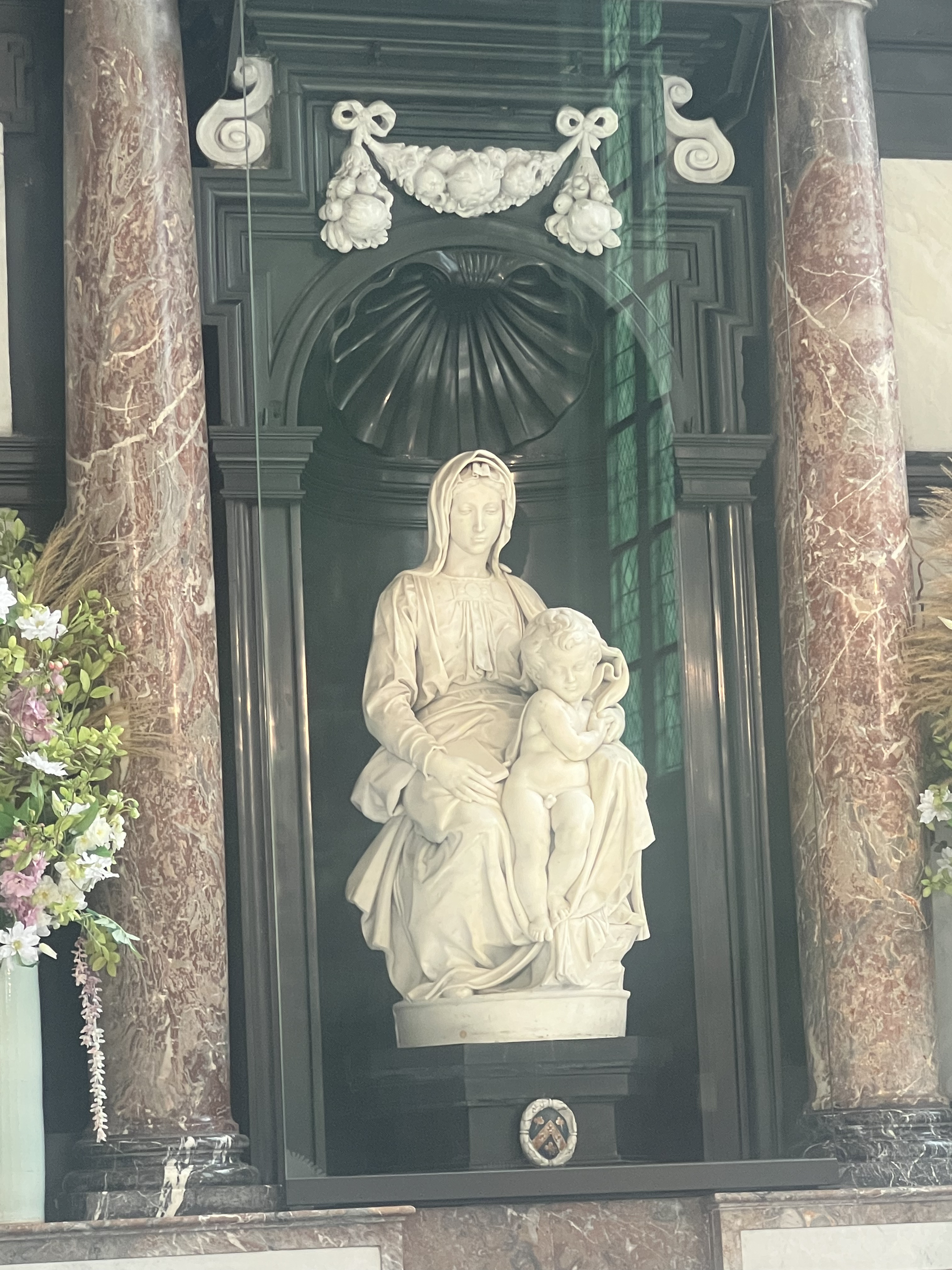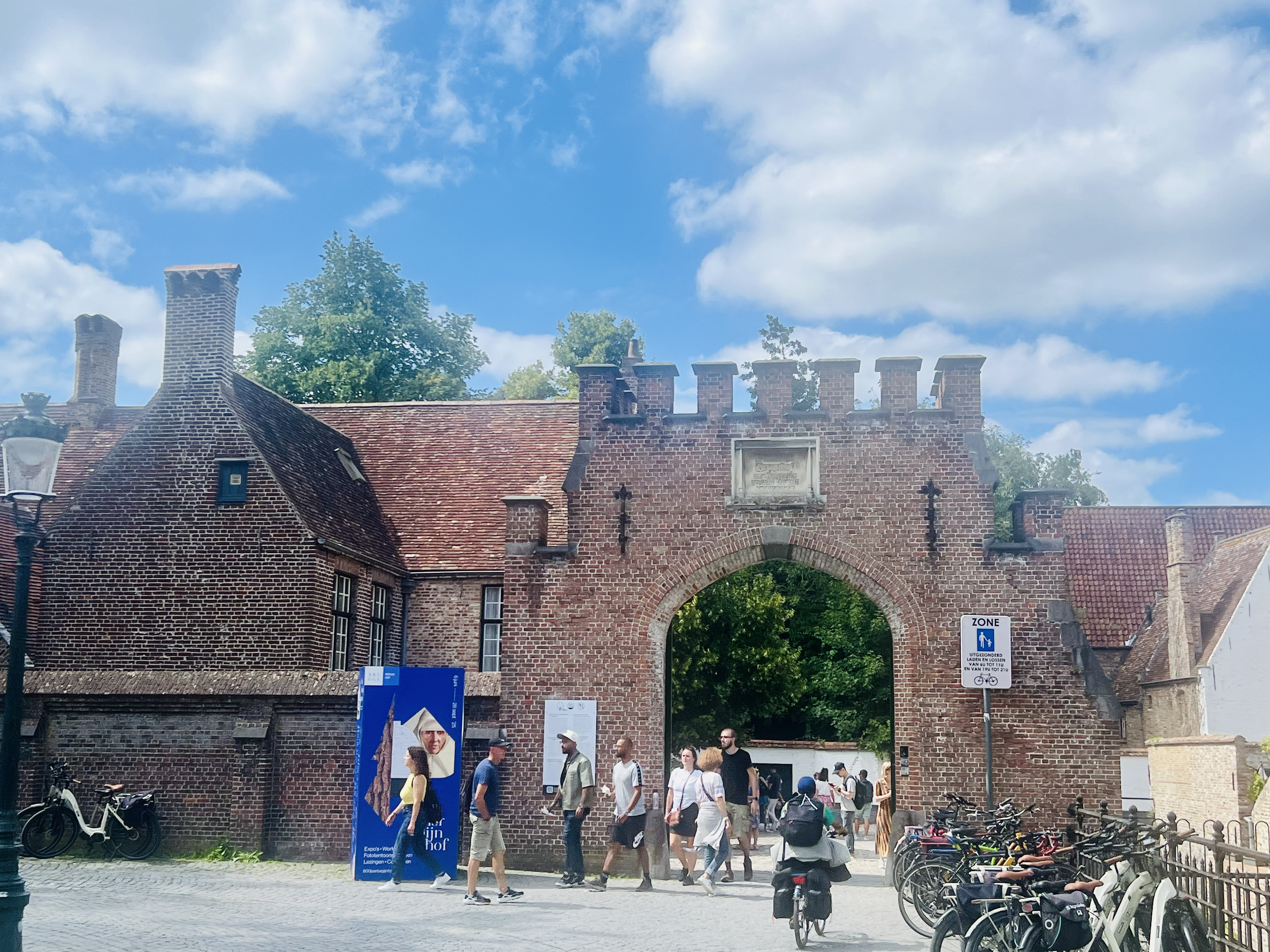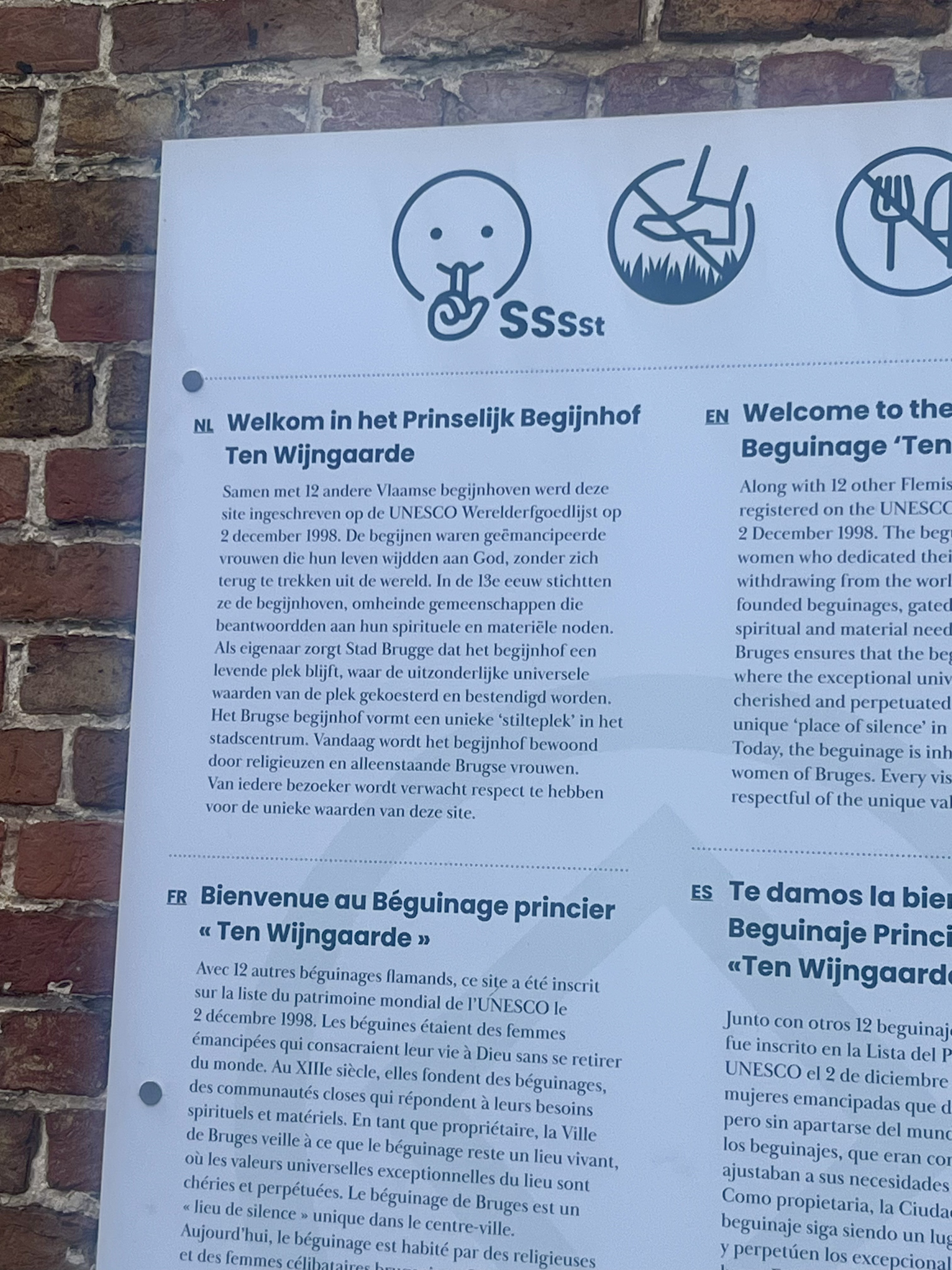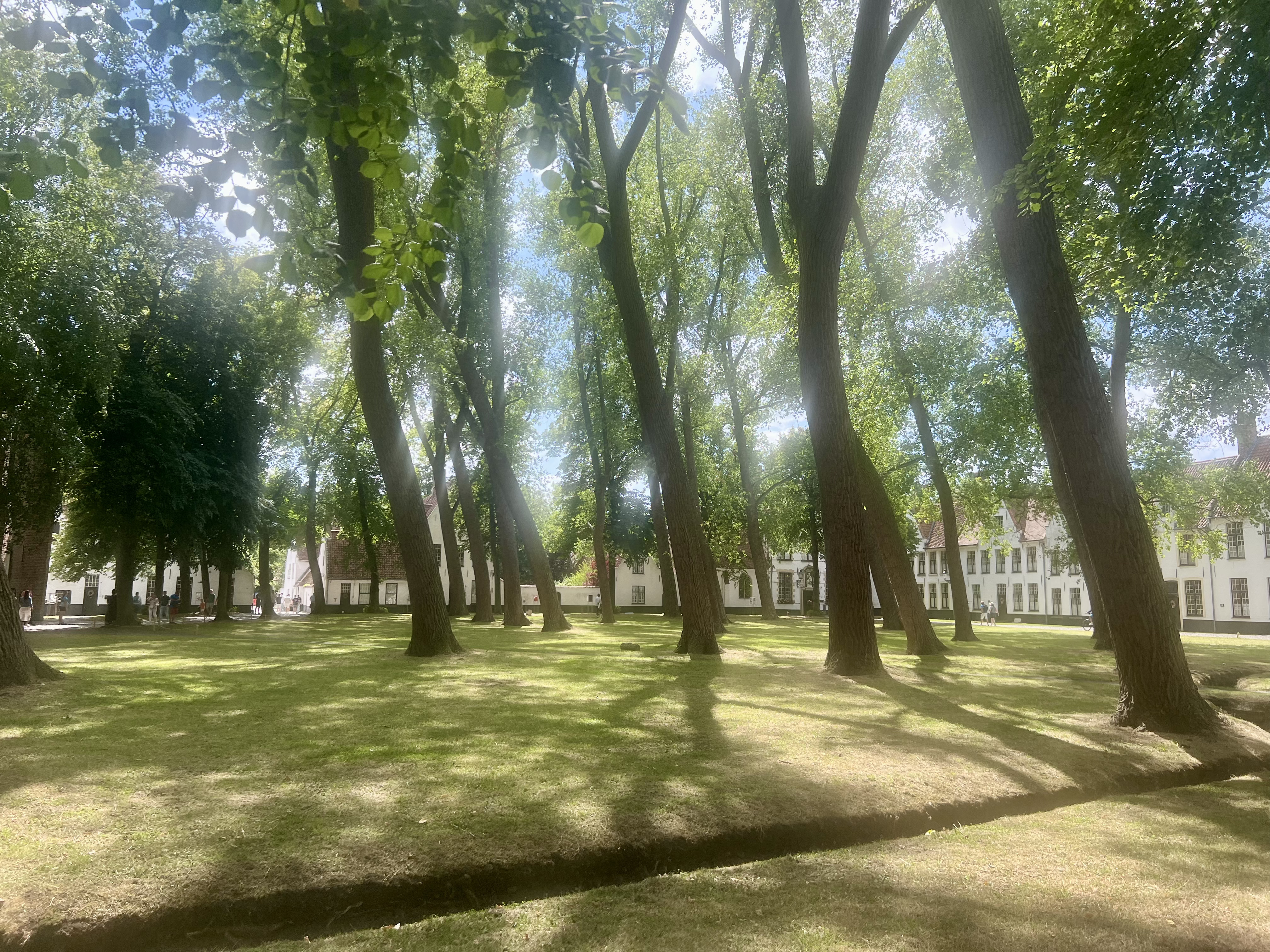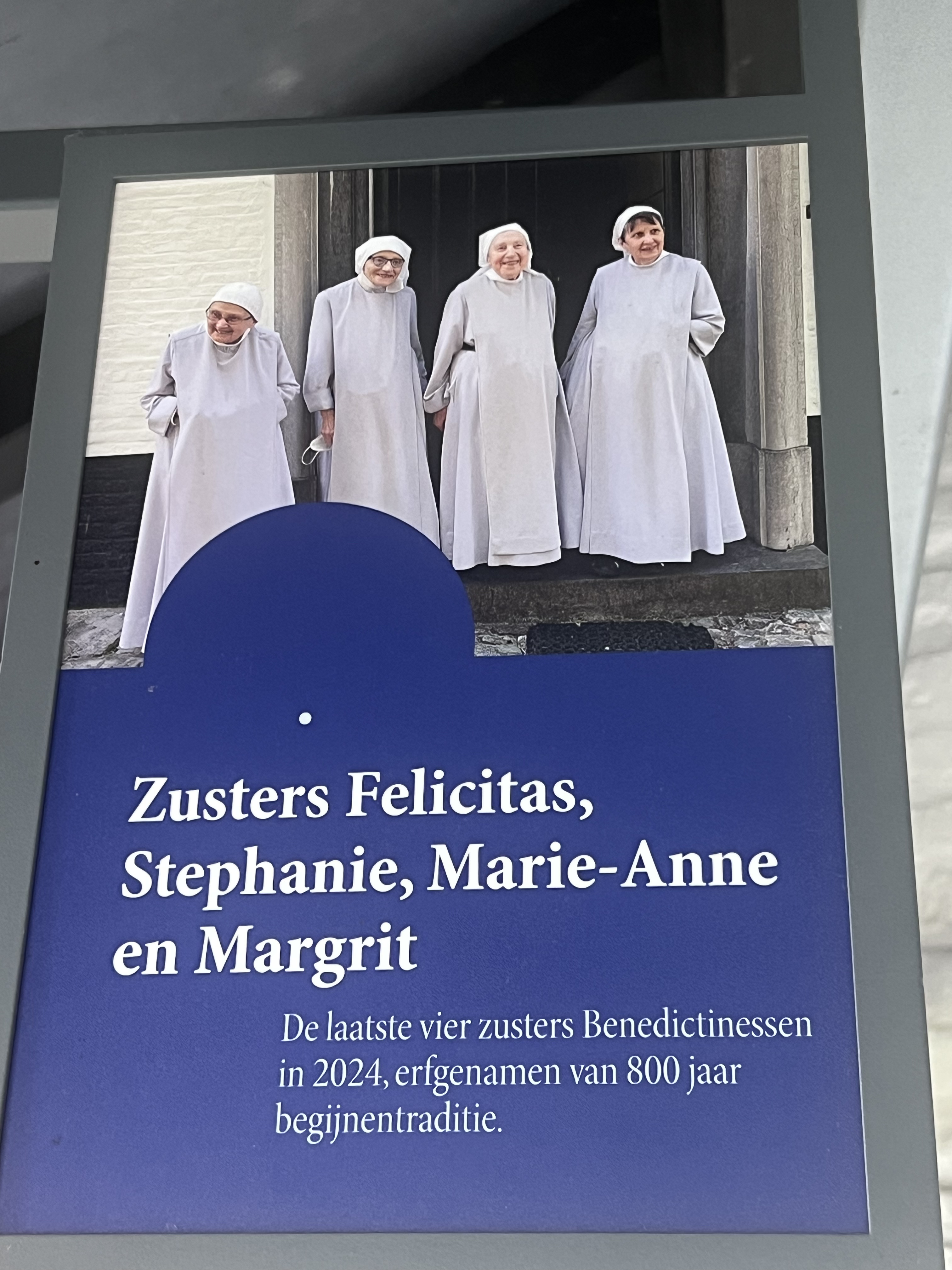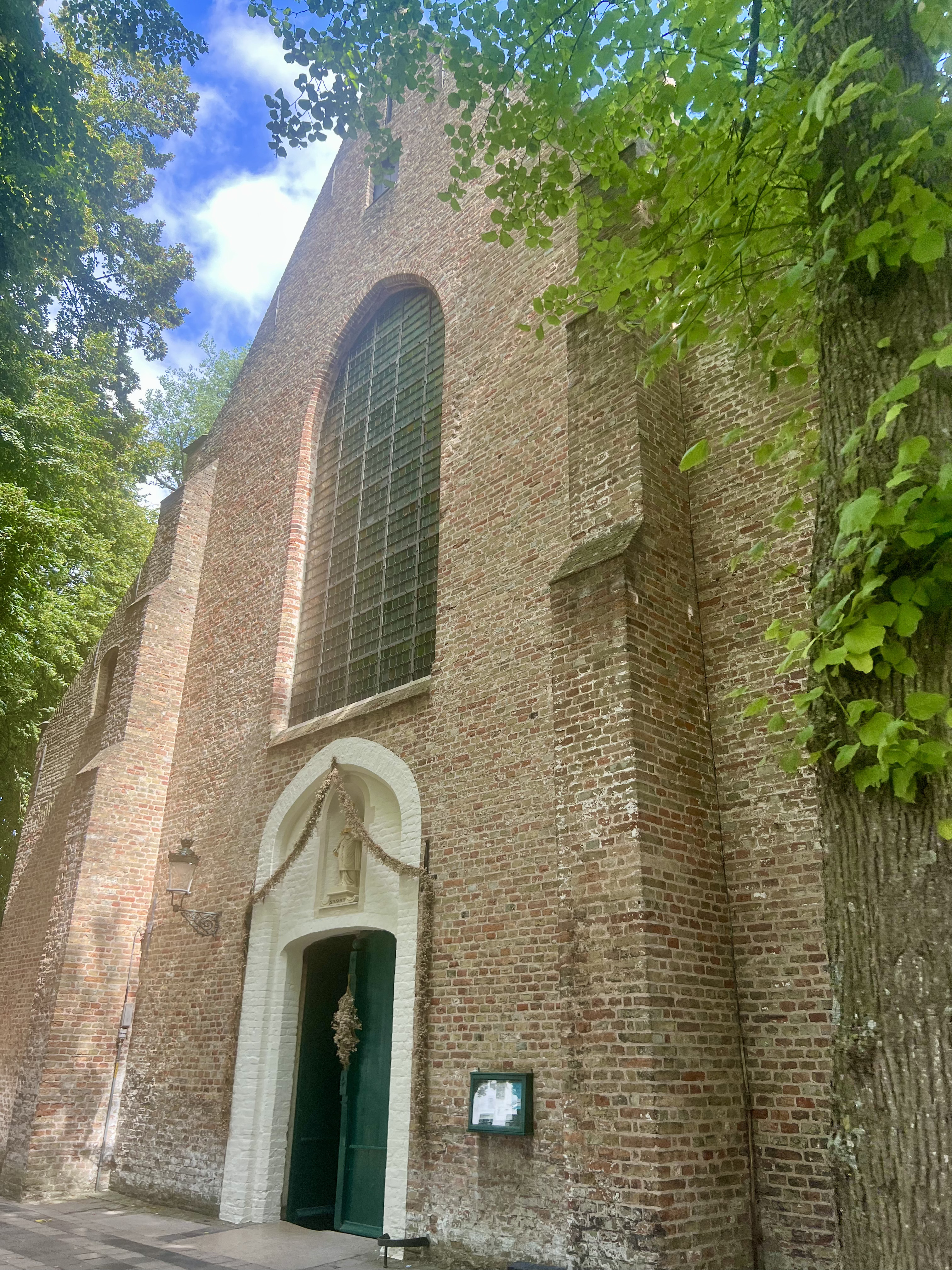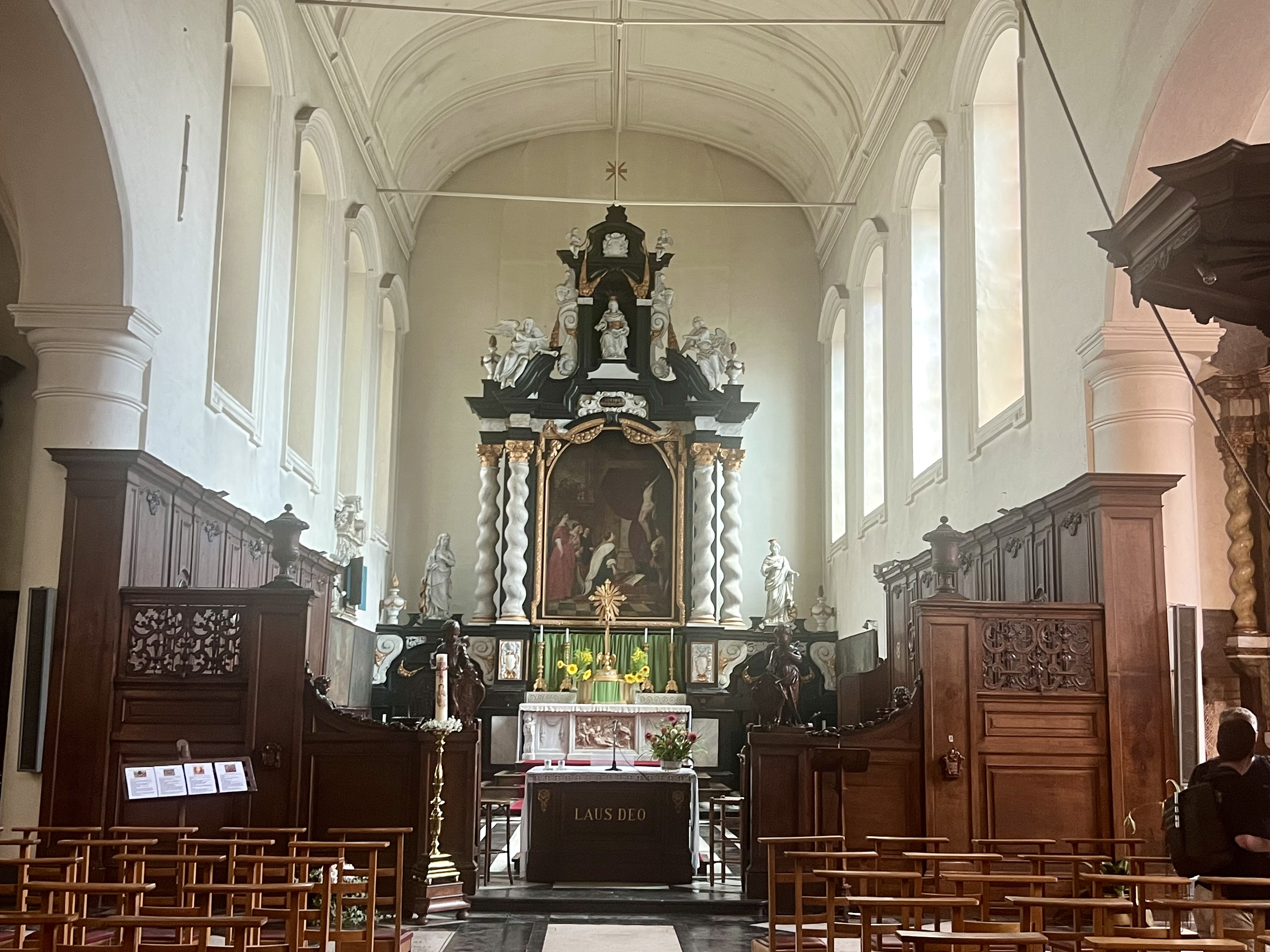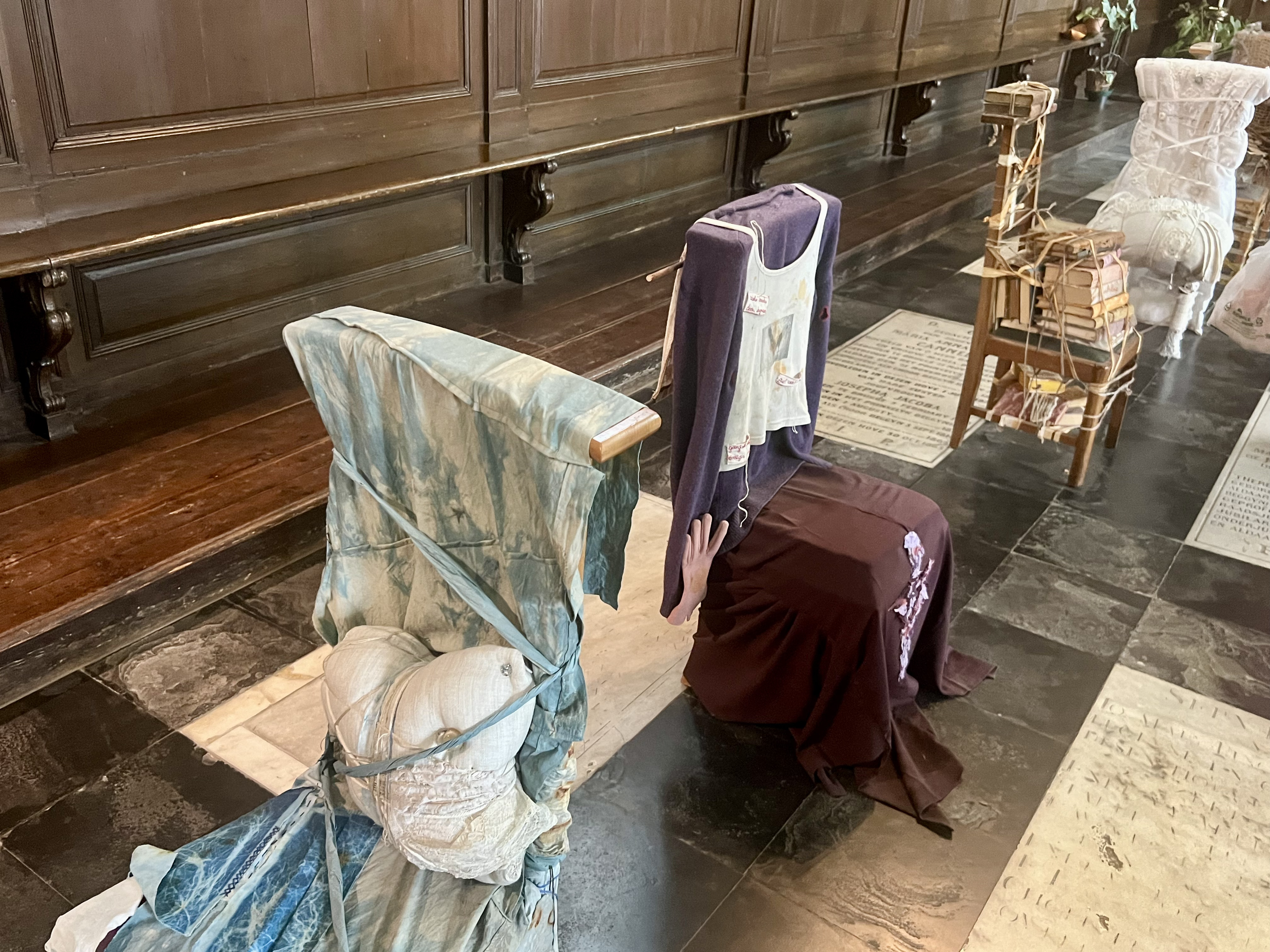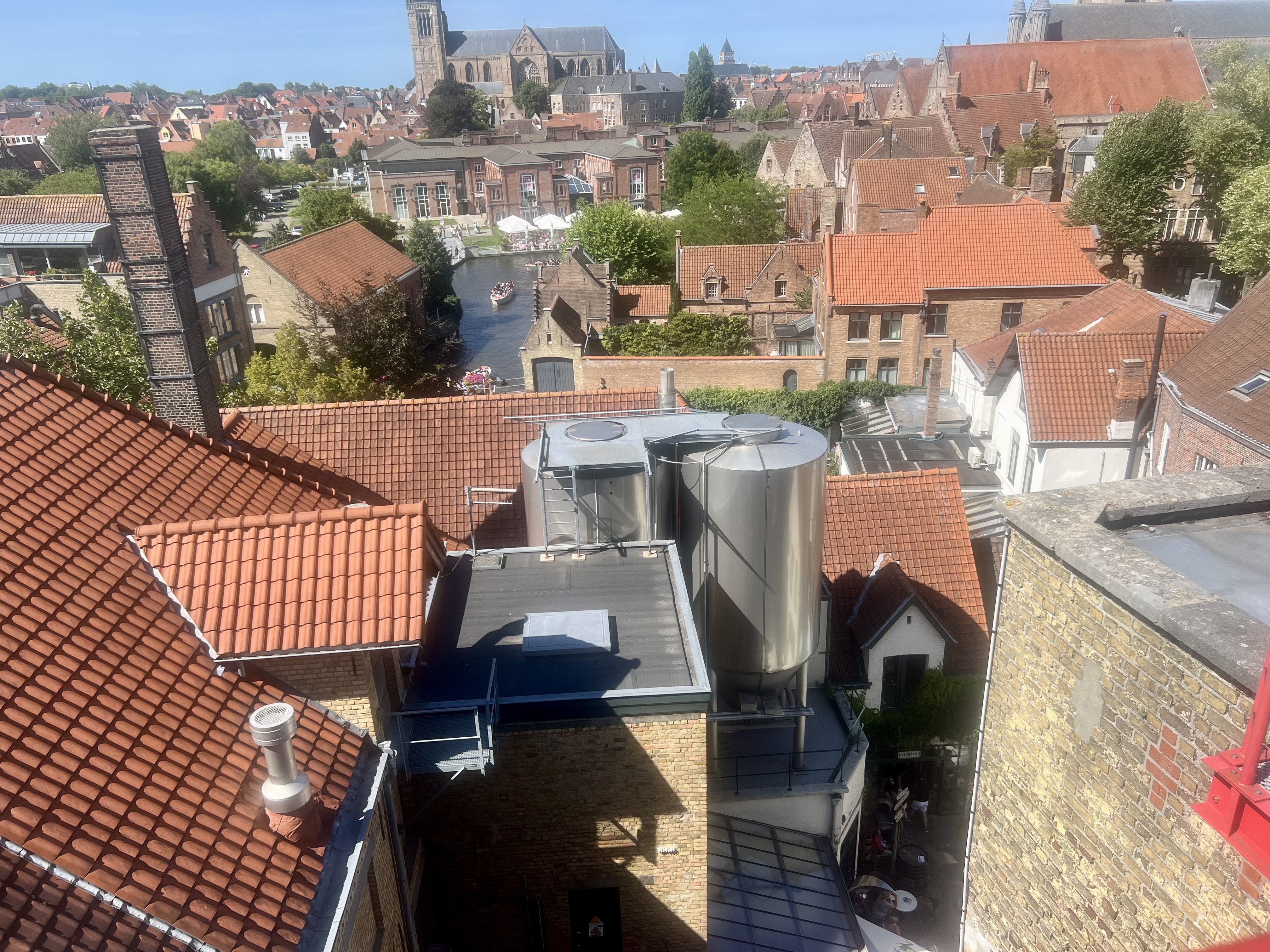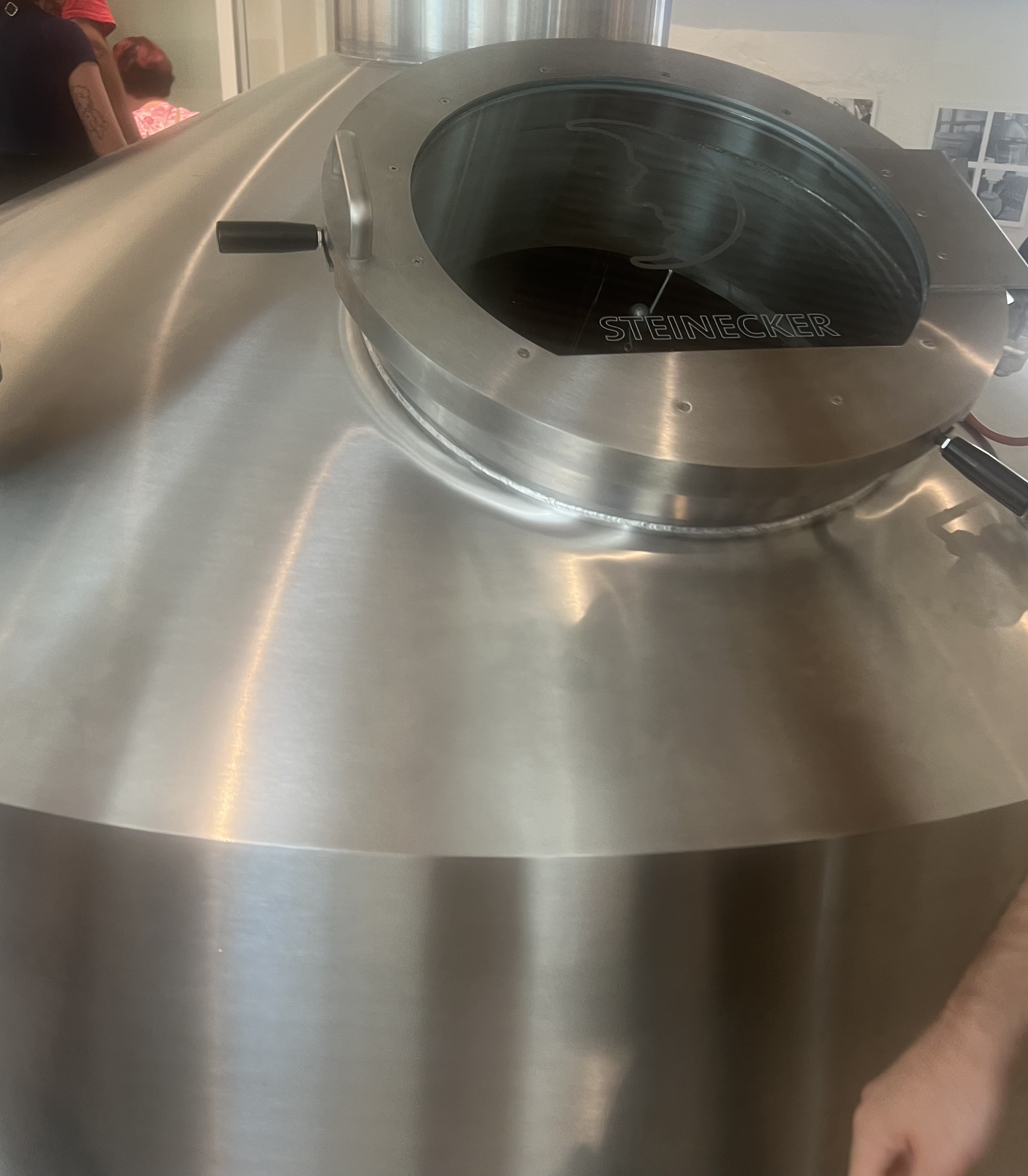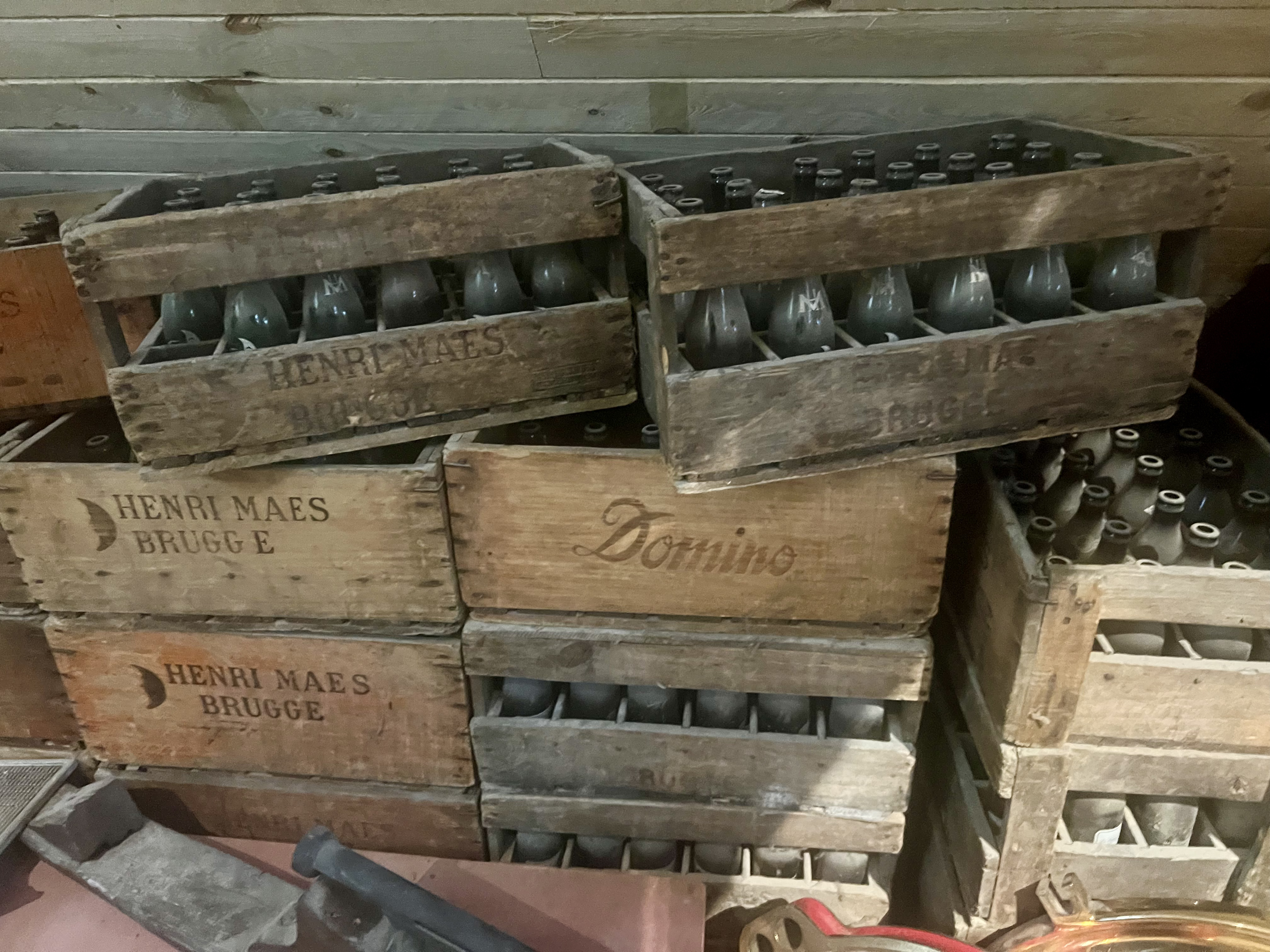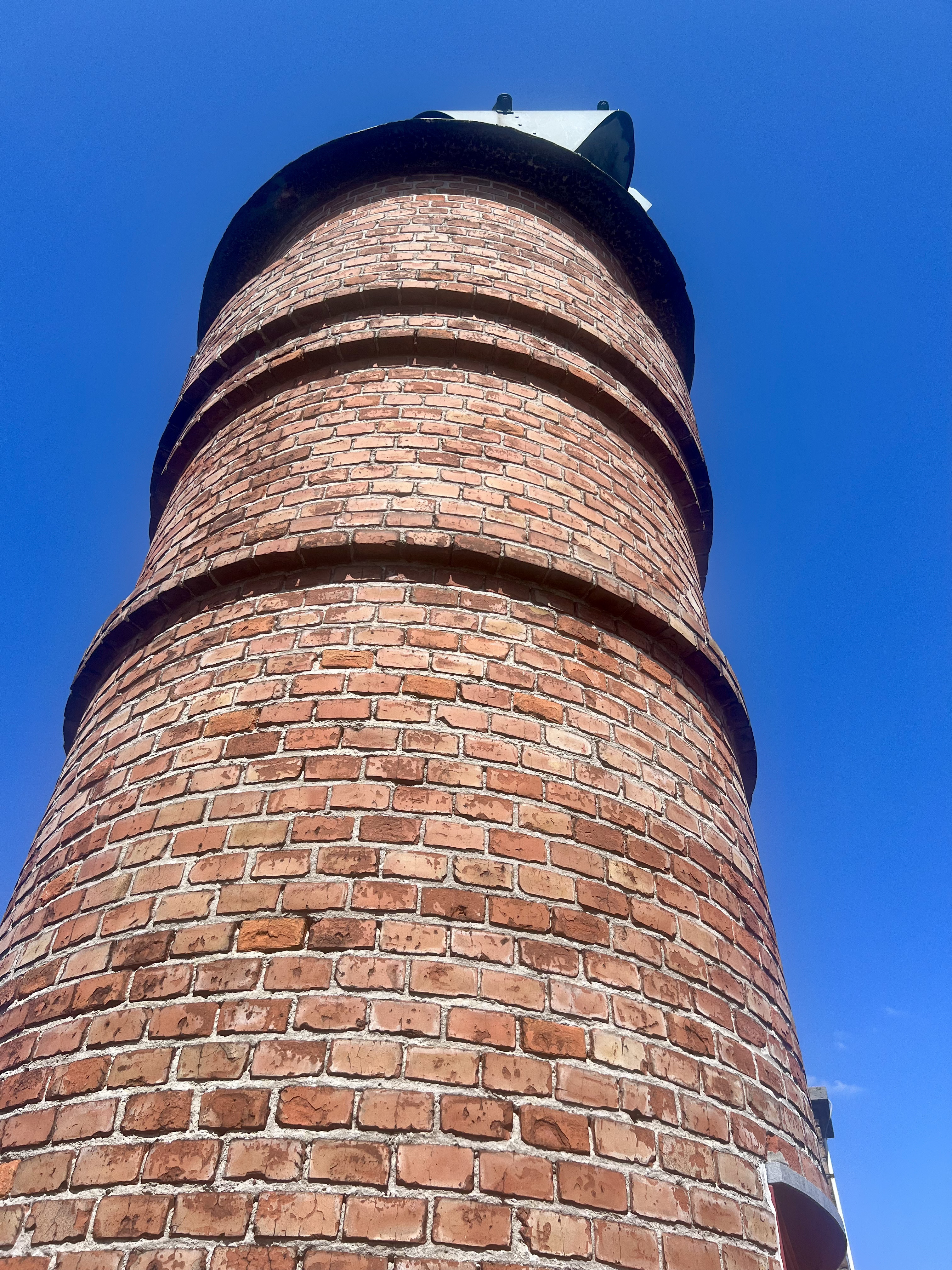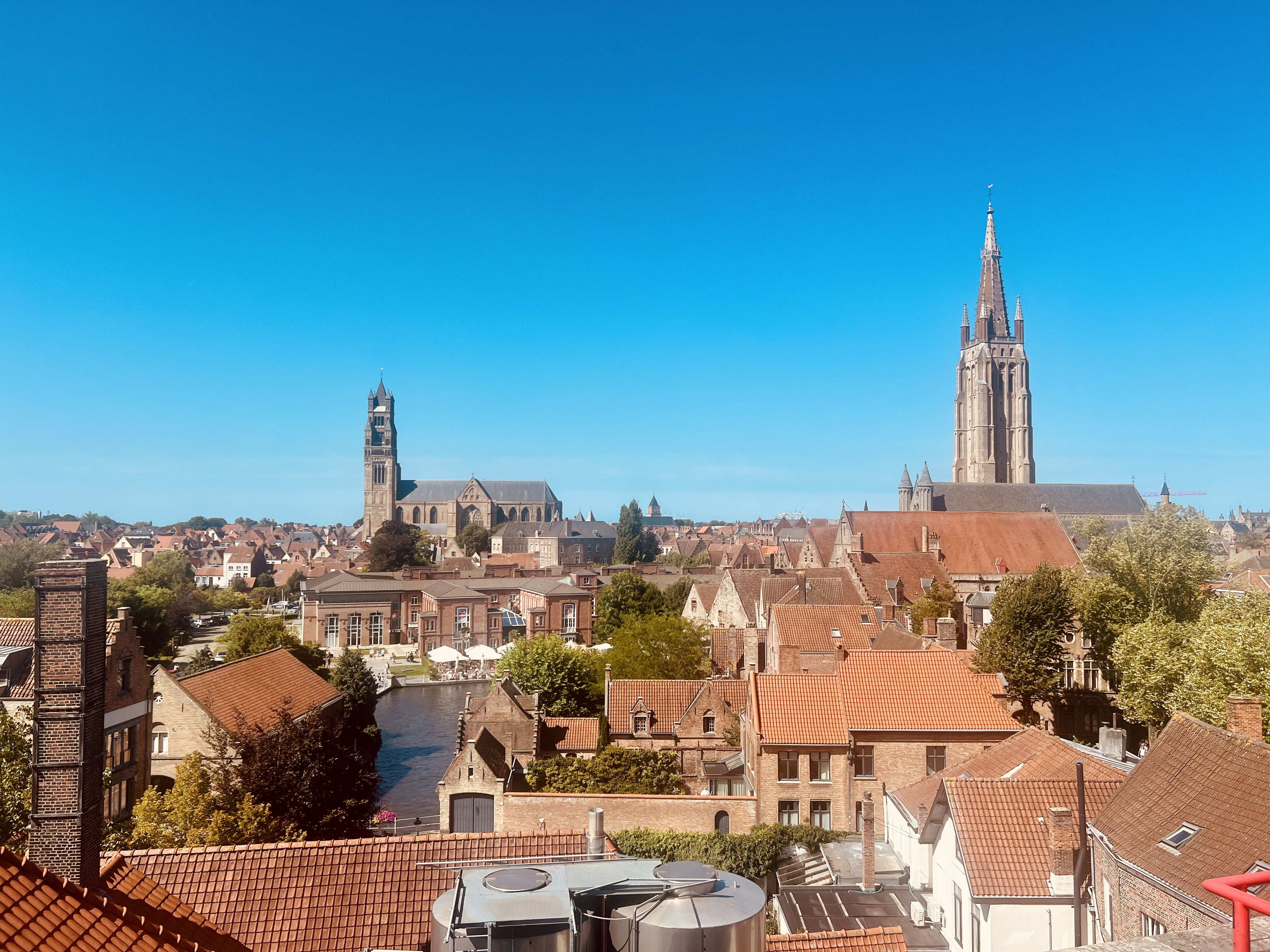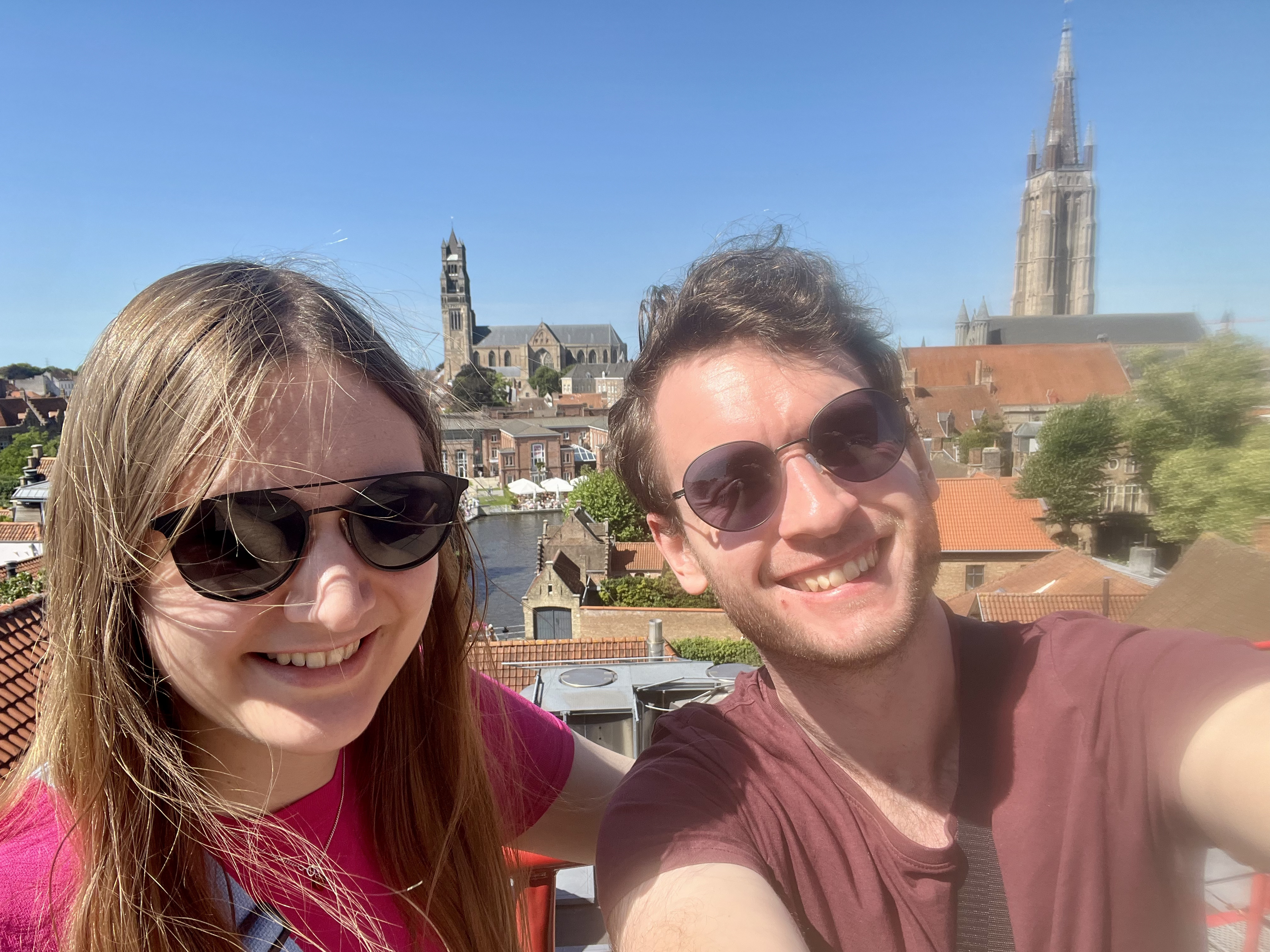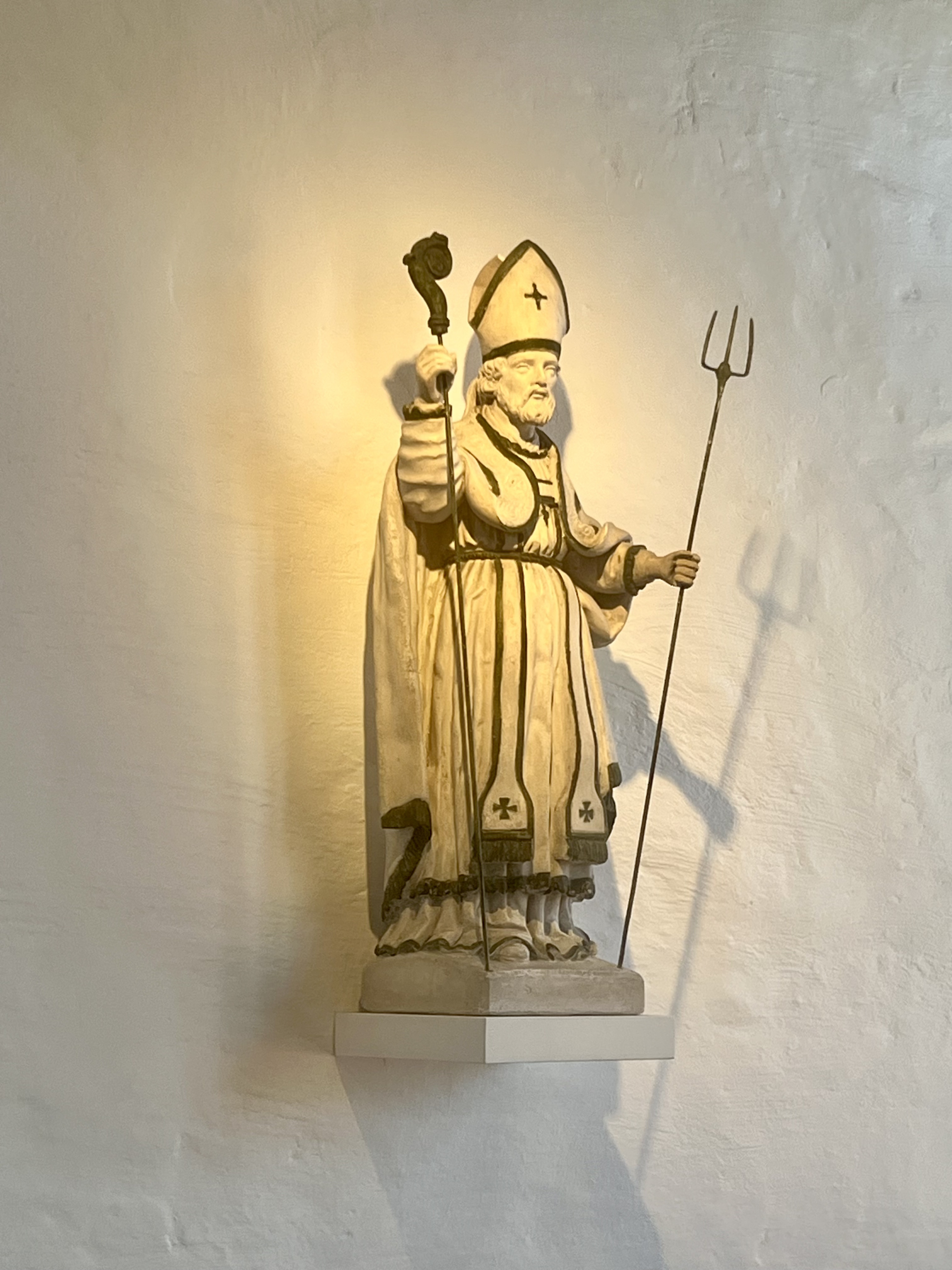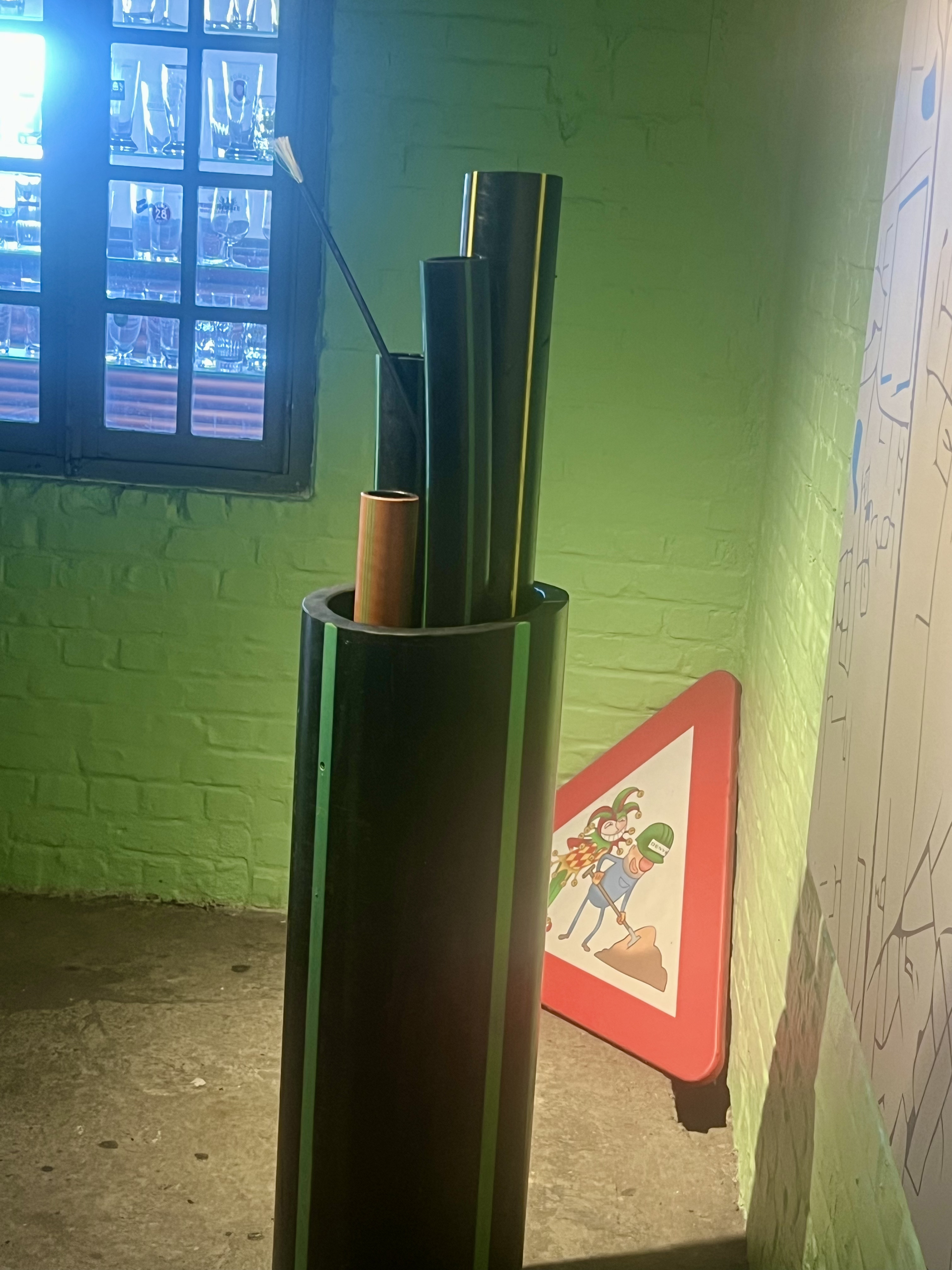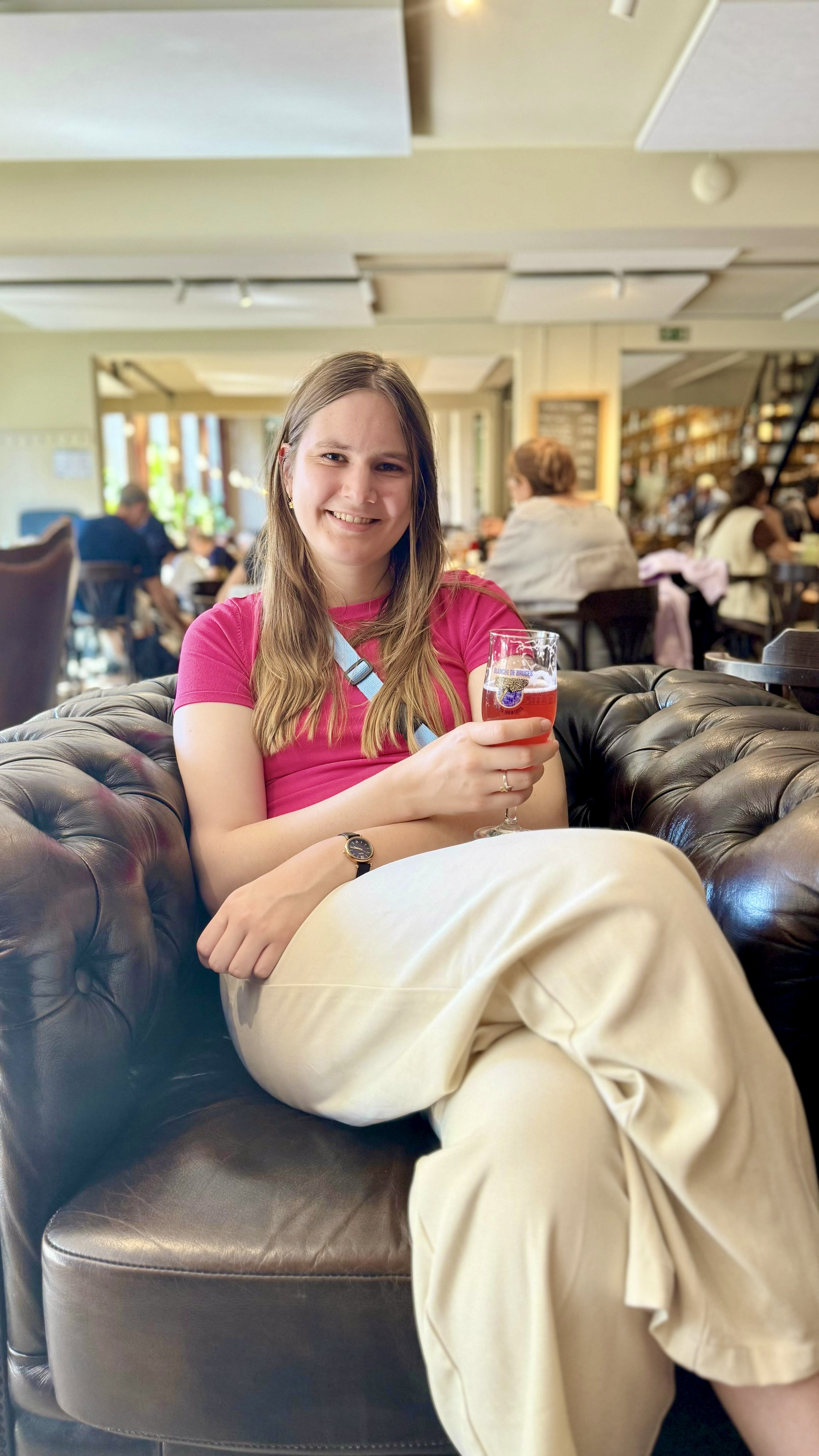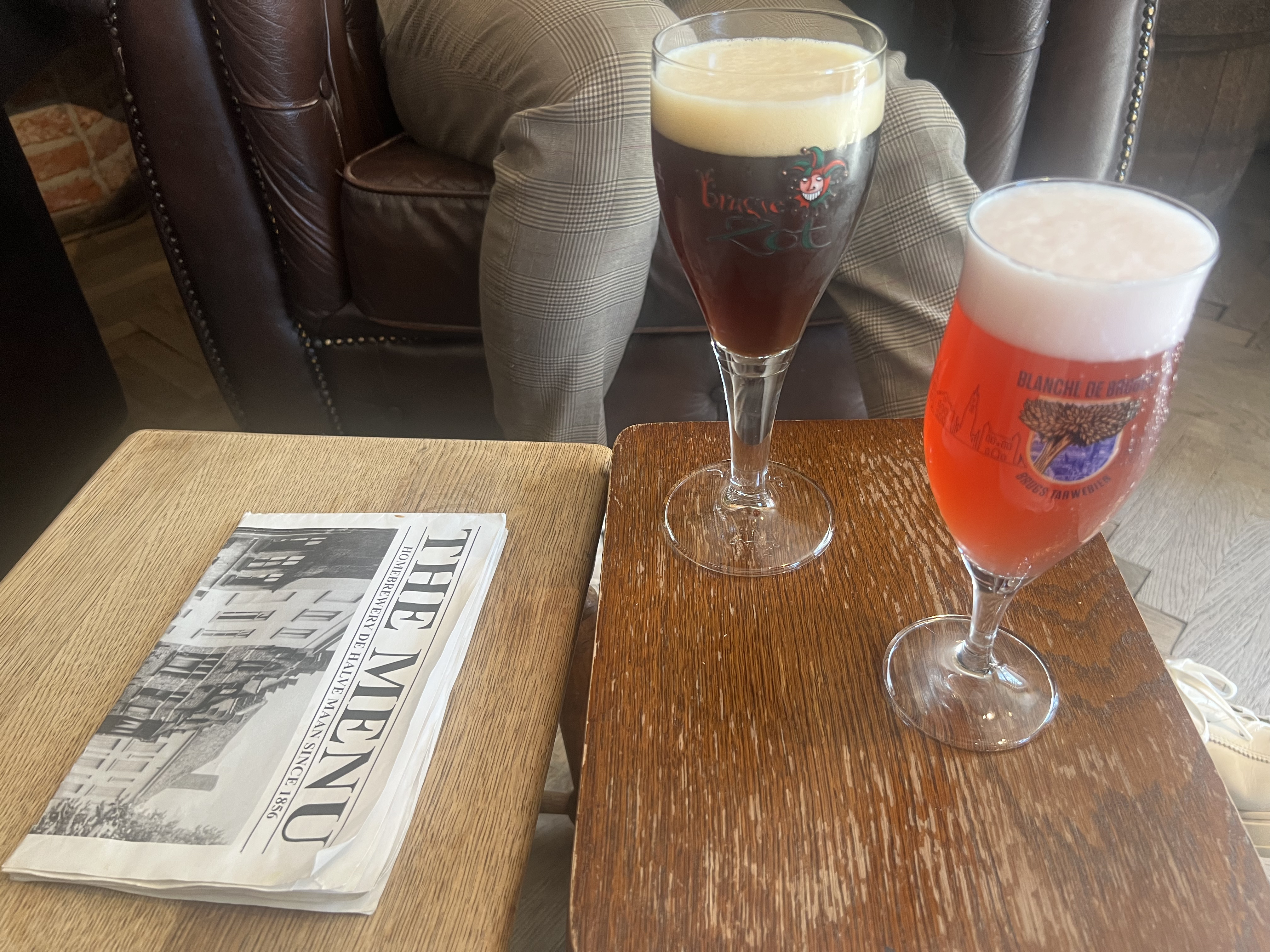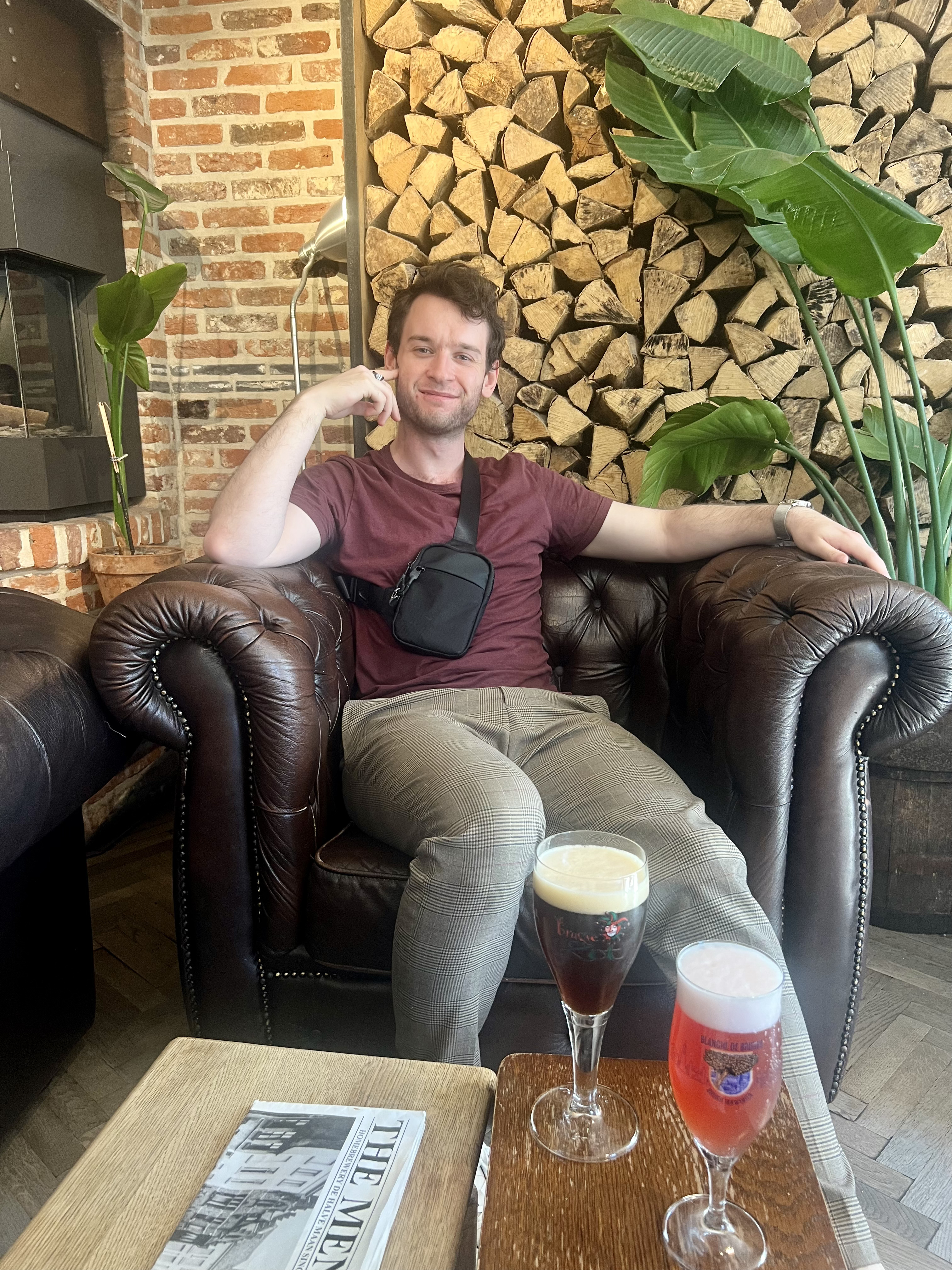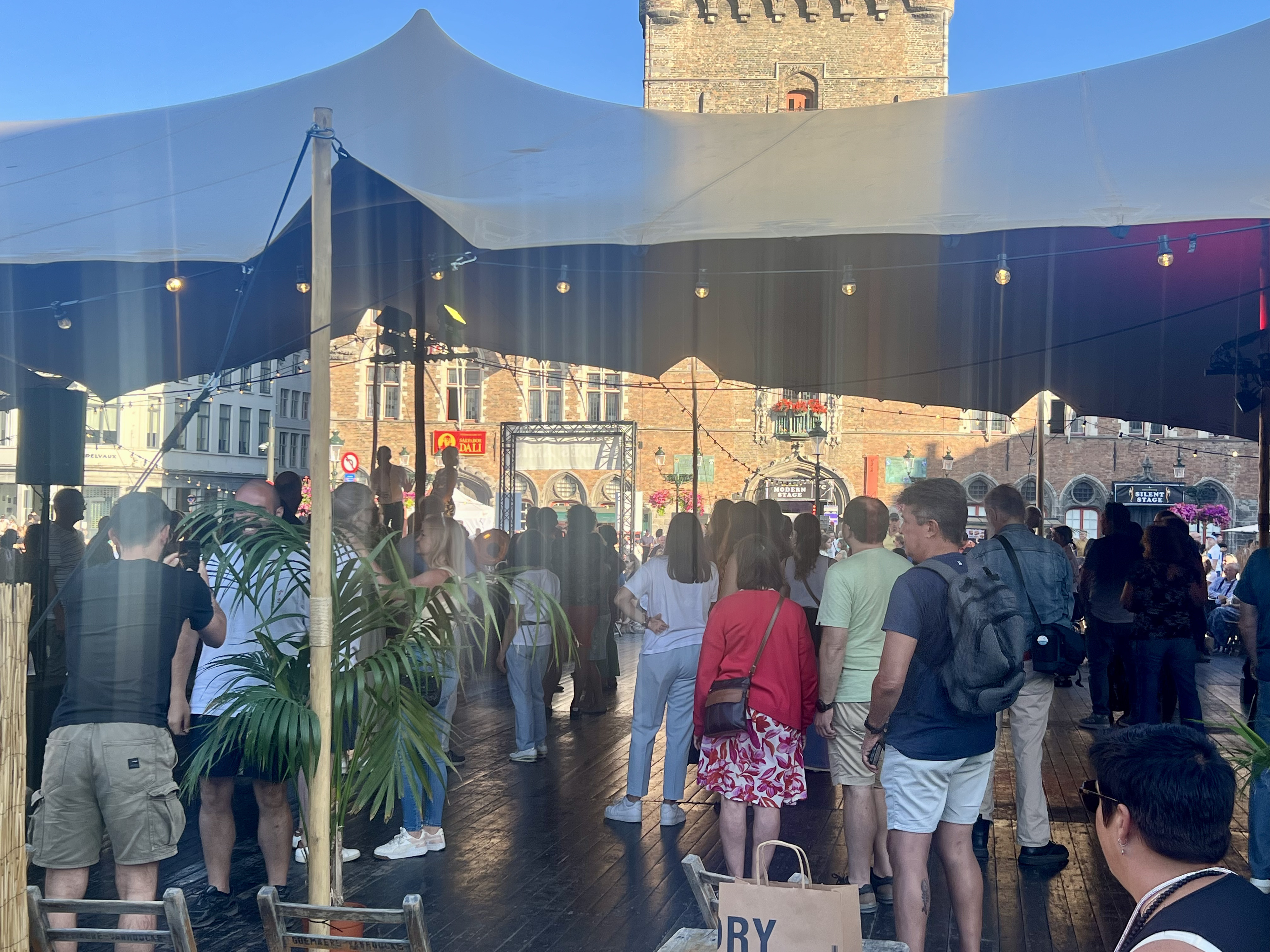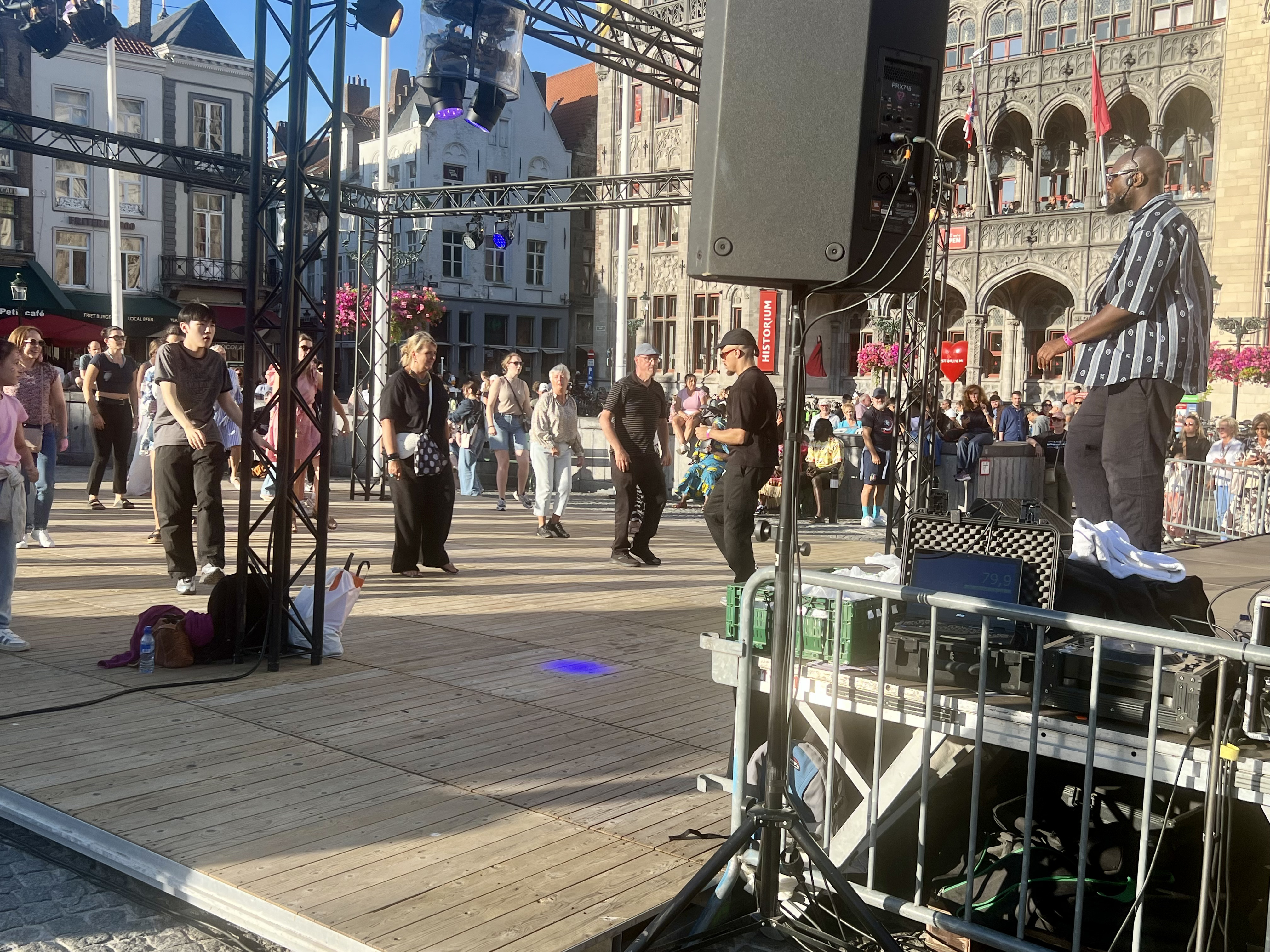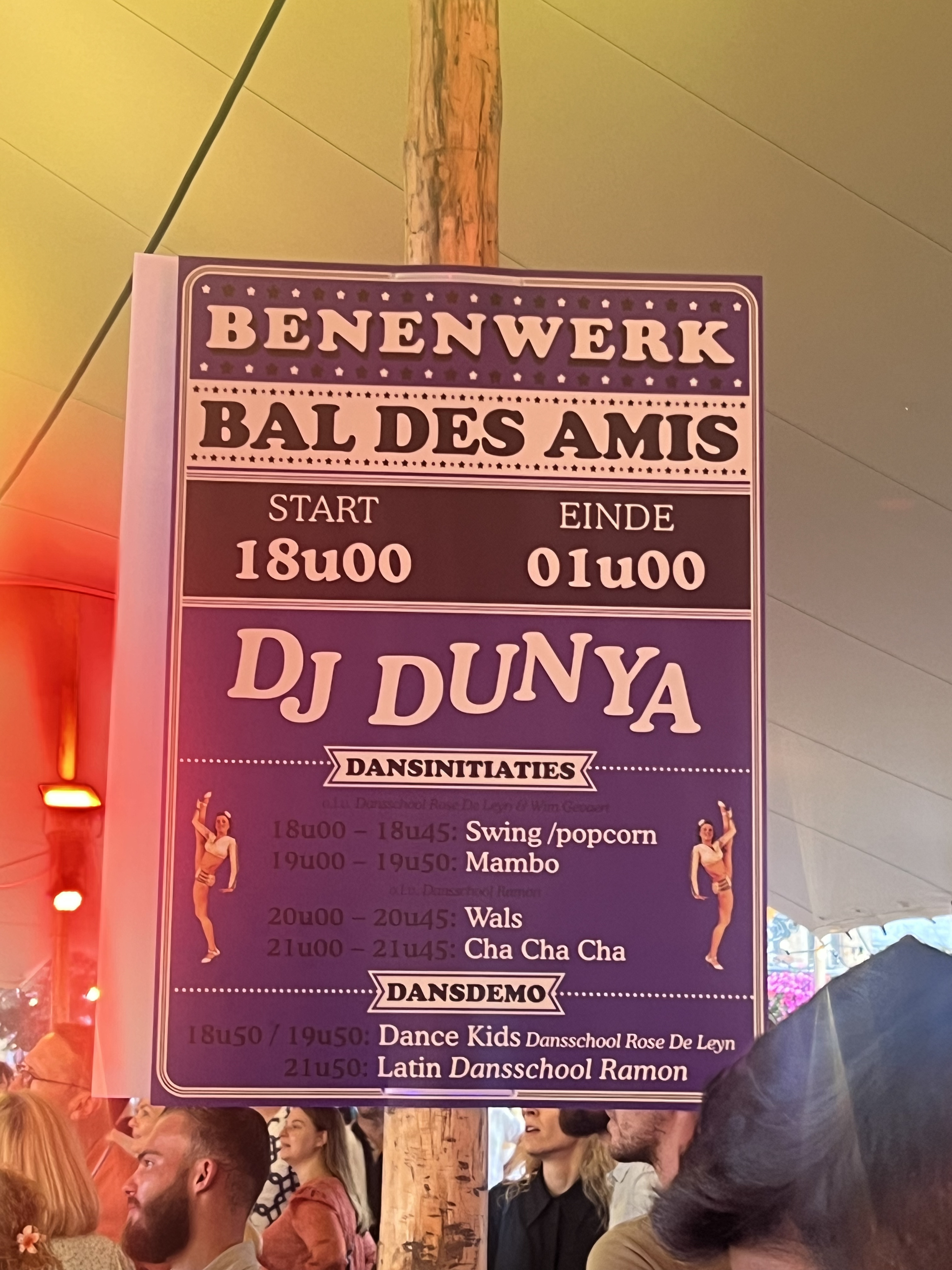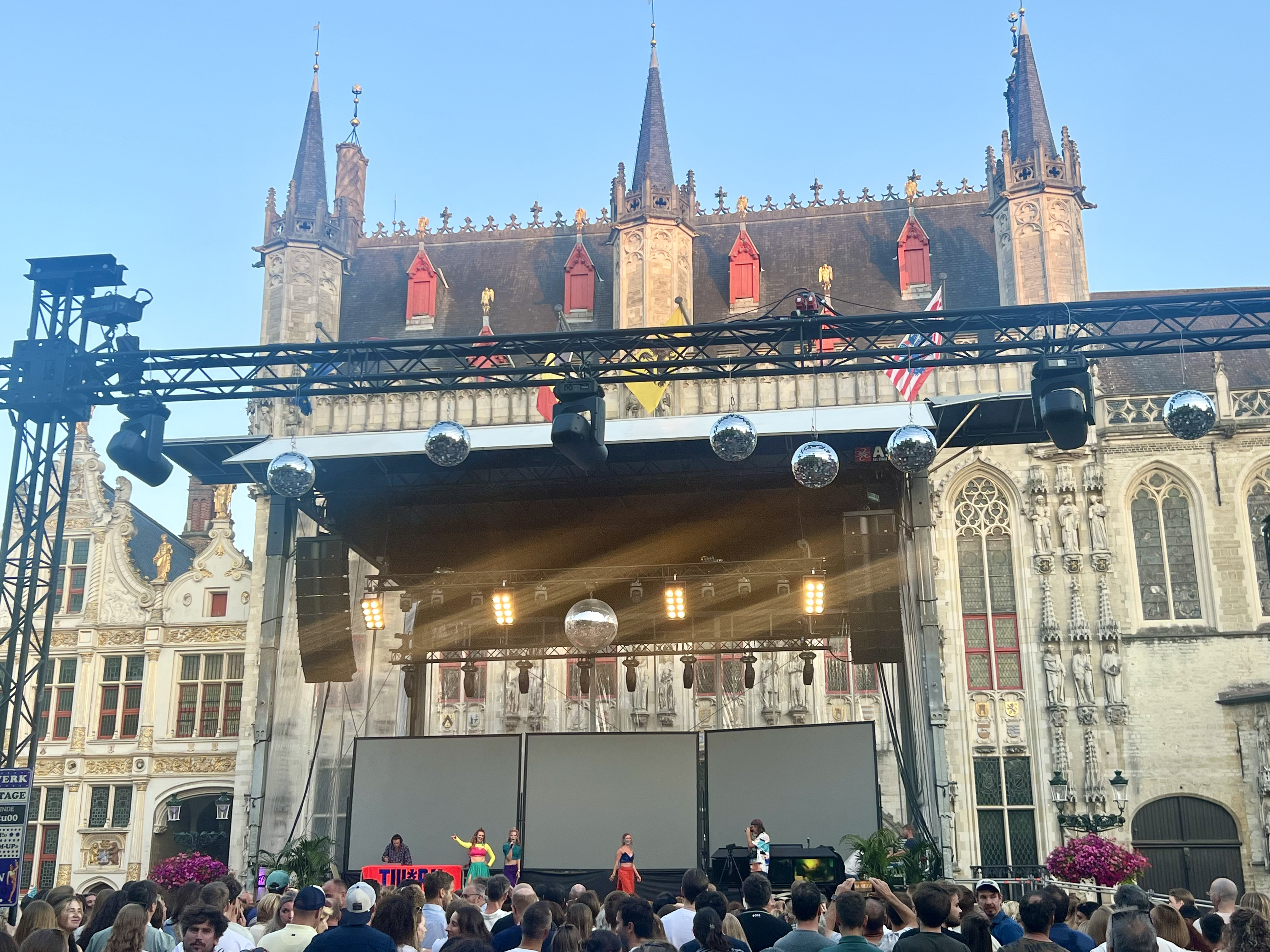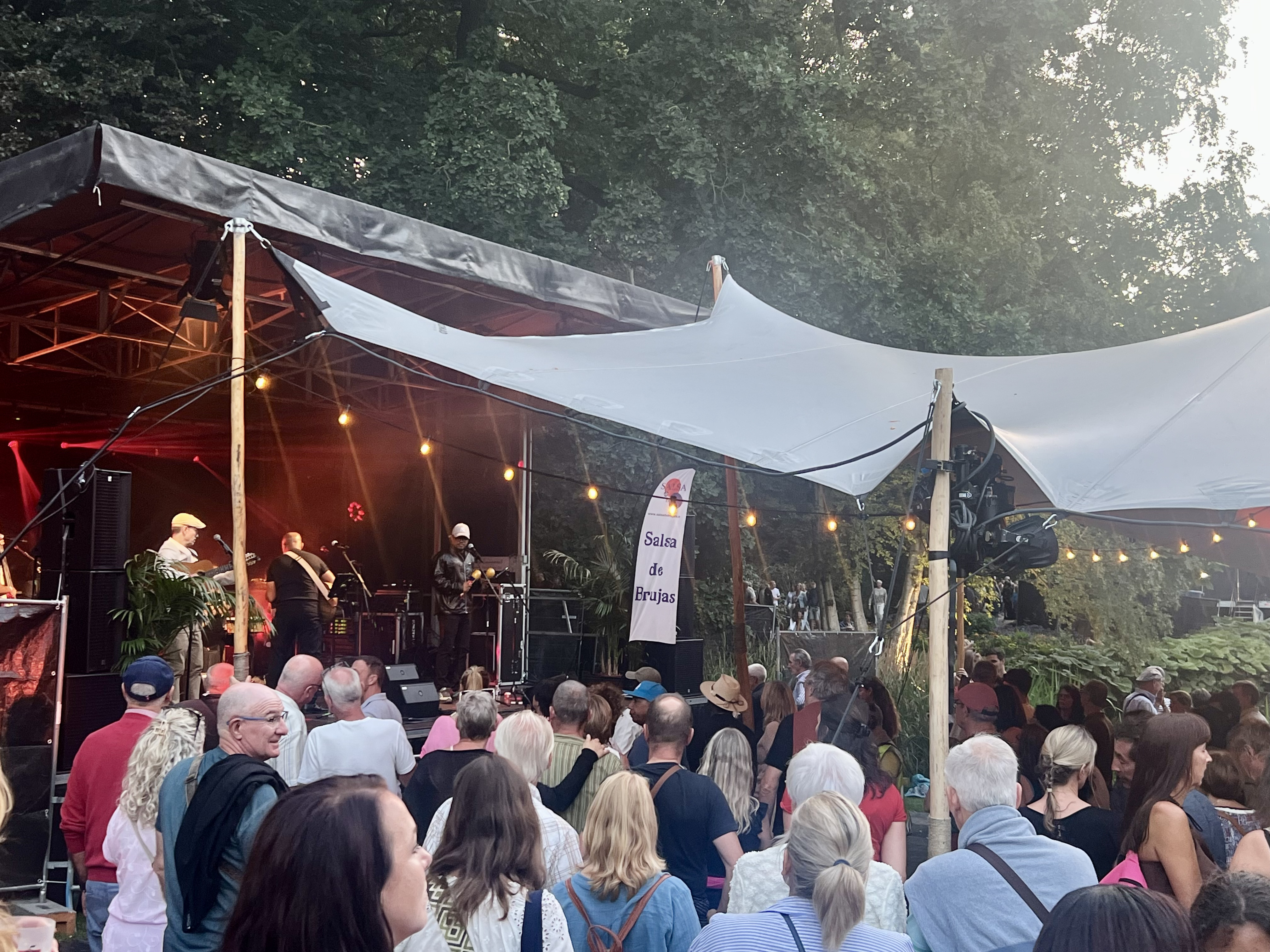Bruges Day 1
Bruges first impression: what a very pretty and overcrowded city. We walked from Bruges station to our family-owned hotel, which was a ten-minute walk through a park. The hotel is in the city center, and since the whole city center is pretty, it speaks for itself that the hotel and its surroundings were also very pretty. The hotel was less than a five-minute walk to the St. Salvator’s Cathedral, so naturally that was our first stop!
St. Salvator’s Cathedral
The St. Salvator’s Cathedral is the main church in the city. The outside looks pretty enough, but a little bit rough as well.
The inside of the church looks, just like all churches, very pretty, although a little bit more basic than churches in other countries.
The main feature of this church are the wall-carpets, which were manufactured by Jasper van der Borcht in 1731.
They display various scenes of the life of Jesus. Additionally, like any other catholic church, the place is surrounded by religious art everywhere.
Overall, it is a pretty church where you should spend some time to look around, but you can see it all quite quickly.
The Market Square
Then we walked through the steenstraat, which is one of the prettier streets in Brugge and also the main shopping street, to the market. The market is probably one of the prettiest sights in Bruges, it contains a lot of medieval style building, the Belfort tower, and the provincial building. However, this also makes it one of the busiest places in the city. We walked around the square, visited a small bookstore, and took some pictures. However, the next day there would be a festival in the square, which meant that the square was partly under construction, which limited the picture potential. One of the best part of the square (and the whole city) are the many horses and carriages that you can see everywhere. I never dare to ride in one, since I am still not sure how well the horses are treated, but they do look so cute. If you are interested to take a horse ride, I think it was 70 euros, so if you are with a group, it is not that expensive.
The main sight of the square is the Belfort tower, which is a medieval bell tower. It is 83 meters high and you can climb it for a great view over the city (which we did not do, but you could). Back in the day, the tower was mainly used as a market hall and a treasury. It was basically the center of the city. Another activity you can do in the square is to visit the Historium Bruges, which is a museum about the history of Bruges. We did not visit it, but it looked interesting and I would definitely visit it if I had more time.
A Misguided Walk Through Bruges
Sebas wanted to visit a board game shop that was recommended by a friend, so we walked there. However, he navigated us to the wrong shop, since this particularly shop was only a webshop with an associated address to the owner’s home. So we took a scenic walk through the city, until we ended up in a random neighbourhood. This sounds very lame, but the walk was actually very nice. We walked through cute streets, and saw some pretty buildings. And because we walked to a random neighbourhood, the streets we crosed were not as busy so it was quite peaceful. So if you are ever in Bruges, keep in mind that the whole city center is very pretty and medieval, so you can just walk around and enjoy the sights anywhere.
Continuing aimlessly walking through Bruges
So we did not actually have a plan for the rest of the day, so we just walked around some more to get an idea of the city. After grabbing a quick snack, we walked back to the Market Square, and continued on to the town hall which was located at a square next to the market square. The town hall is very pretty, but because of the festival preparations, there was a big stage in front of it, so we could not really appreciate it. You will also have to do without a picture. Around the corner of the town hall, there is one of the take-off points of the canal boat tours. This specific place was also very cute and pretty, and there was a very small art market going on as well. At some point we stumbled upon a small park, which was also pretty and probably peaceful if there were no festival preparations going on.
After our walk, we decided to go have dinner. I still suck at this blog thing, so I did not take any pictures or notes on the food, I will try to do that in the future. On the way to the restaurant, we could go to a board game shop if we took a small detour. Sebas was really excited about this, however when we arrived there, it was closed for several weeks. The board game shops were not really on our side this trip. The typical Belgian food was okay, but nothing special. After dinner we walked back to the hotel, since we were still really tired from the concert the day before. We had a nice view of the St. Salvator’s Cathedral from our hotel room, since it was lit up at night. And that was our first day in Bruges!
Bruges Day 2
Day 2 of Bruges was packed with plans. We took the first canal boat tour of the day at 10.00 AM. The hotel owner recommended this, since it is less busy in the morning, and she was right. Afterwards we would visit the O.L.V. Church, with the famous Michelangelo statue. At 15.15 we had a reservation at the Halve Maan Brewery, but before that we visited the Begijnhof. After the brewery we had pasta for dinner, and then we would go to the Festival Benenwerk, which is a yearly dance and music festival in the city center.
A Canal Boat Tour in the Morning
Taking the earliest canal boat tour is a great recommendation, since we did not have to wait in line, and our boat was not completely full (but definitely not empty either). The tour was really fun. The guide was very funny and also told us a lot of interesting stuff about the city and the surroundings. He was telling us that we would go under the oldest bridge in Bruges, and that we should pray that it would not collapse. He told us about a cute tea house by the canal, and mentioned how there are two tea houses in Bruges, comparing it to the 300+ pubs in the city. Belgians have priorities, I guess. He pointed to the canals leading to the sea and ghent, which showcases the importance of Bruges as a port city in the past. There were also some interesting buildings that he pointed out, like an old school building that costs 5 million euros, a red building that is red because of the use of ox blood, and a palace for Spanish generals that now serves beer. At some point we passed a wooden building, which was an old hotel from the 17th century. Additionally, the guide also pointed out some funny things, like the smallest gothic window in Bruges, and we saw a lot of ducks and swans that were kept by the canal.
The Saturday Market and “Shopping”
After the canal boat tour, we walked to the Saturday market, which is held every Saturday very close to our hotel. However, it was just like any other market, so nothing too special, although it was quite big. At this point we tried to find some nice shopping places, but we did not find anything special. We did however go to the lego store which contained a very big lego model of the Belfort tower, which was really cool!
O.L.V. Church
After the market, we walked to the O.L.V. Church, which is a very pretty church with a famous Michelangelo statue of Mary and Jesus. The building is 115.5 meters high, and it is the tallest building in Bruges, and the second tallest brick building in the world. The inside of the church is quite similar as the St. Salvator’s Cathedral. We lit a candle as an ode to my grandmother, who always lit candles with us when we visited a church.
To actually see the Michelangelo statue, you have to pay 6 euros to enter the back of the church. Luckily, you do see more than just the statue, since the back of the church is also very pretty and contains some more information about different aspects of the church. For example, there were very pretty confessionals, and you could see all the chapels and read the information about them. The altar was also very pretty, and they were surrounded by the coats of arms of different knights. One of those was marked black due to heresy, which was fun to read. There were also some pretty graves you could see if you are into that kind of stuff.
A confessional in O.L.V. Church
Then there at the end it was, the Michelangelo statue. It was actually quite small, but I guess pretty. However, I did think Jesus head was so big. In general Jesus just looked very weird. But Maria was pretty I guess. Now I can at least say I have seen the Michelangelo statue, but I like the ones on Italy better. This statue is one of the few Michelangelo statues that is not in Italy, so it is still quite special. Six euros is also not that much money, and the rest of the church is also very pretty, so I would definitely recommend visiting it.
Michelangelo statue of Mary and Jesus
Begijnhof
We walked through the street containing the ducks, swans, and apparently also a lot of horses with carriage, to go to the Begijnhof. The Begijnhof is an 800-year-old complex that was built for the Beguines, a group of women who lived in a semi-monastic community. The complex is a UNESCO World Heritage site and is known for its beautiful architecture and peaceful gardens. Currently, there are also some nuns and some single women still living there. Before our brewery tour, we visited the Begijnhof to taste the peace and quiet of the place.
We walked through the gates, which contained some signs to notify visitors that you need to be quiet and respectful. Sadly enough not everyone was doing that, but it was not too bad. The Begijnhof contains a lot of pretty buildings, and I am kinda confused who occupies them. There are still people living there, but not that many right? Some of the buildigns you could actually enter, and they contained some information about the Beguines and the history of the place. We also saw a picture of the current nuns and women living there which was really cute. The buildings surround a relatively large garden, which only really contained trees but was still very peaceful. All in all, the vibes were really nice.
We also entered a small church that was part of the Begijnhof. The church was very cute and small, and it really felt used, unlike all those larger church that you often visit as a tourist. In the church some chairs decorated by the Beguines were displayed. A sign explained that the chairs were wrapped by textile to display their personal interpretation on religious texts and songs. The wrapping of the chairs symbolized protection, reflection and quietness. The chairs, which are witness to prayer and community, get new meaning by the chosen materials. Textile is the carrier of memory and spirituality, connecting an everyday object with ritual and sacral.
We also stumbled upon a small exhibition set up for the 800-year anniversary of the Begijnhof. A lady at the door told us to first see the exhibition upstairs and then come back to listen to something. The exhibition upstairs contained some arts created by the Beguines, which felt really personal. Then we went back downstairs, which contained these chairs surrounded by a white cloak containing a headset and another lady who was talking to people. However, we were quite confused what we were supposed to do, and the people were not really clear, so we fled.
We took a quick look at the shop located in the Begijnhof, which contained mostly religious souvenirs. Then we left the Begijnhof, took a small walk to pass some time and started to head to the Halve Maan brewery for our tour.
Halve Maan Brewery
At 15.00 we arrived at the Halve Maan brewery, since they told us to be there 15 minutes in advance. This is however really not necessary, since we had to wait for 15 minutes anyway. If you go there just be there a little bit in advance, but there is no hurry. Our group was quite big and only consistet of Dutch speaking people, so the tour was in Dutch. This does make the vibe more personal, since everyone is comfortable with the language, making the mood more relaxed.
We entered the brewery, and immediately were confronted by four big copper kettles. These kettles are used to brew beer, and I think each kettle is used for a different step in the brewing process. The guide explained the whole brewing process, which was really interesting. He told us how the process starts by barley which is germinated and then dried, how resin is added to the beer to make sure it does not go bad, and so much more about the brewing process. Then we continued on to the rest of the building, which contained a lot of old brewing equipment and some more information about the history of the brewery. Working in the brewery in the past was really hard, since you work with a lot of high temperatures and the possibility of toxic fumes. The tour also included a climb to the top of the brewery, with a really nice view over the city. A fun story that was told by our guide is the story of saint Arnold, the patron saint of brewers. He was a bishop who lived in the 7th century, and he is known for his miracles related to beer. One of the most famous stories is that he saved a village from a plague by blessing the beer and telling the villagers to drink it instead of water. Because this seemed like a miracle to the villagers, he was canonized and became the patron saint of brewers. Now of course we understand that there was no miracle, but that the beer was actually safer to drink than the water at that time due to the brewing process.
The Halve Maan brewery has been brewing beer since 1856, and it is the only brewery still located in the city center of Bruges. There used to be a lot of breweries in the city, back when there was a beerman going house to house just like the milkman. However, the Halve Maan brewery is the only one that survived the rise of grocery stores and supermarkets. The brewery is still family-owned, and it is now run by the 6th generation of the Maes family.
One of the most interesting parts of the tour was the story about the beer pipeline. In 2016, the brewery built a beer pipeline that runs from the brewery to a bottling plant outside the city center. This pipeline is 3.2 kilometers long and it can transport up to 6,000 liters of beer per hour. The pipeline was built to reduce the number of trucks driving through the city center, which helps to reduce traffic and pollution. The guide also told us that the pipeline is the only one of its kind in the world, and it is a real engineering marvel. The pipeline consists of 5 different sections and it runs underground, so you cannot see it. However, you can see the entrance of the pipeline at the brewery, which is a small hatch in the ground. The pipe has been heavily tested before to make sure that the taste of the beer is not affected by the pipeline. The pipe cost 4 million euros to build, and was partly funded by donations. There were three tiers, the first tier was 220 euros and earns you a free beer every year on your birthday for the rest of your life. The second tier was 800 euros, earning you a crate of beer every year on your birthday for the rest of your life. The third tier was 7500 euros, earning you a free beer every day for the rest of your life, which is quite insane.
A sample of the beer pipeline at Halve Maan brewery
At the end of the tour you get a ticket that you can exchange for a beer in the bar. You can actually choose to drink unfiltered beer, which is the beer that comes directly from the brewery. It supposedly tastes better, but I did not order it since I am not a fan of the taste of beer. I ordered the newly made rose beer, which was really good. But Sebas definitely approved of the unfiltered beer, so I guess it is good.
All in all, even though I am not a beer lover, the tour was really fun and I would definitely recommend it!
Festival Benenwerk
After the beer, we walked back to the hotel to figure out what to eat. We decided to eat Italian, and found a nice restaurant according to Tripadvisor. The food of the restaurant was good, but the portions were so large. I only finished half of my pasta, which always makes me feel bad.
After dinner, we walked to the Market Square, which was part of the festival. We expected a music festival, but it was actually a dance/music festival. So when we arrived, there were three stages with different music and dancing lessons. Each stage had a different type of dance with one or two instructors. The first stage was a small group of people dancing an Indian like dance, which looked really cool. There were also two children dancing, which was really cute. Then the second stage was more of a modern hip-hop dance, which was joined by some older people as well which was really fun to see. Then the third and biggest stage was swing tutorial, which is danced in pairs. There were a lot of people dancing and it was so crowded. We watched for a little while, but we could not really join anymore, since they already started.
So we decided to go to the folkbal stage, which was located inside the provincial building. You could enter the building for free, but you needed to wait a bit to get a card. At the end you hand in the card, so they can give it to the next person to count the number of people. I wanted to go to the folkbal stage, since it sounded so cool and unique. We entered just when the a band was entering the stage. Suddenly when they started playing, everyone started dancing this really folk-like dance. It was so random at first, because we were like, why does everyone know this dance? But apparently, the half hour before was a tutorial, and now they could perform the dances they learnt before. The music was also really great, apparently it was performed by the biggest folkbal band in Belgium. At this point we started to have so much fun, and we were so glad we happened to stay in Bruges at the same time as the festival.
After we watched the folkbal for a while, we decided to go back to the Market Square to join the Waltz dance tutorial that was about to start. There was an older man and woman who tried to teach us the waltz. But there were so many people, and at some point when you had to move around, you would bump into other people all the time. I am also not a good dancer, so that did not help. In the beginning I had to spin clockwise but then suddenly later in the dance counterclockwise and that was just too much for my tiny dance brain. Also there was one step where we did not really catch the explanation so that did not help either. However, even though I sound negative, it was really really fun, and at the end we were actually relatively content with our waltz skills.
Afterwards, we walked to the other stages to see what was going on. There were a lot of stages, but a lot of them were also quite full and crowded. We walked passed a big stage where people were twerking, and we went to the latino stage to enjoy some music there. However, we were really tired, so we decided to go back on time, even though the festival was until 02.00. I really recommend visiting the festival if you are in Bruges in August, since it is so much fun and such an unique experience!

